

28 Top Japan Packing List Items for 2024 + What to Wear & NOT to Bring

Japan is one of my favorite countries in the world. It has a climate, a culture, and a history all its own, so be prepared for a truly unique and memorable experience.
Most travelers to Japan do a variety of activities and the cultural etiquette is unique, so it’s important to pack smart and avoid taking anything you don’t need!
Below you’ll find what to wear in Japan , what NOT to bring, and FAQs to help you understand the local dos and don’ts. Plus, I have a bonus guide to the custom of gift-giving which may be unfamiliar to new travelers to Japan.
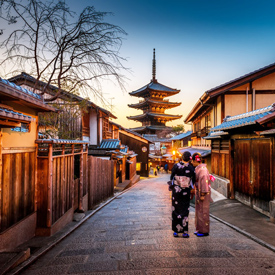
What to Pack for Japan – 28 Essentials
1. jet lag relief pills.
Don’t let the long flight to Japan and time change weigh you down. Jet lag can put a serious dampener on your trip, so you should try to prevent it if at all possible. This natural jet lag relief (with no drug interactions) will help you prevent it before it happens and can also help treat it after the fact if needed.
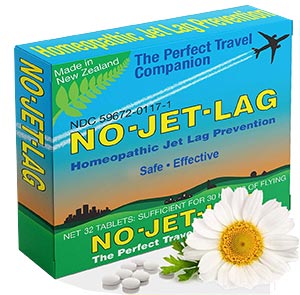
View on Amazon.com ➜
2. Universal Power Adapter
You can get away with plugging US-style two-pronged cords into Japanese outlets, but any devices you may bring that require three prongs (such as laptops) won’t work. It’s a good idea to bring a universal adapter to prevent any trouble and then you’ll be able to also use it if you travel to any other countries. This one works in 100+ popular countries and comes with a lifetime replacement guarantee.
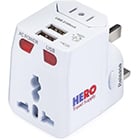
3. Virtual Private Network (VPN)
Japan was ranked in the top 5 most cyberattacked nations in the world and stands out as a key target in this particular region, according to a Global Threat Intelligence Report . Hackers regularly compromise personal data in this area through payment fraud, data breaches, and IP theft. I’ve had my credit card number stolen while connected to (what I believed) was a safe connection at my Airbnb. Now, I always travel with a VPN.
A secure network will shield your data and ensure hackers cannot access your passwords and credit card numbers. Another great use of a VPN is that Eastern countries have FAR more online censorship than Western nations. Since you could be blocked from using your favorite websites (like Netflix, YouTube, Facebook, and more) – we strongly recommend a reliable provider like NordVPN . Plans are very affordable and there’s a 30-day money-back guarantee, but I promise you won’t need it.

View NordVPN.com Options ➜
4. Lipstick-Sized Portable Charger
You’ll be out and about taking part in activities all day, so you really don’t want to be obligated to return to your accommodations if one of your devices runs out of “juice.” This portable charger holds a couple of charges so you can use it several times before having to plug it back in. It uses standard USB charger cables, and it can be actively charging your phone, camera, or other device even while tucked away in your bag when you’re on-the-go.

5. Comfortable Slip-on Shoes
Visiting temples, homes, inns, and even restaurants will require you to take off your shoes. Since you’ll find yourself stepping in and out of your shoes a lot in Japan, it’s worth it to bring shoes that don’t require lacing up! A good thing to keep in mind is: if you see “tatami mats” on the floor, that means you should remove your shoes. (FYI, flips-flops are also a “no-no,” and it’s considered rude to go barefoot in someone’s home, so make sure you bring a pair of socks in your bag.) If you are planning to visit bigger cities like Tokyo, you will also want something super comfortable for walking.
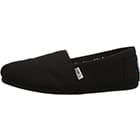
6. Travel Insurance for Japan
This one’s a no-brainer. I’ve had too many overseas experiences where I or my friends have had baggage stolen, hotels canceled, or had an unexpected medical emergency that otherwise would have had us paying a fortune in out-of-pocket expenses. Keep in mind that your domestic provider does not cover you overseas (including Medicare and Medicaid). Japan’s hospitals are predominantly private, which could cost a fortune on an already expensive trip, and you never know when you’re going to get sick.
Ultimately, it’s one of the cheapest parts of your trip. You can’t afford to go without it. Faye is our go-to provider because they are revolutionizing the industry! They’ve reimbursed me so quickly during an emergency through their mobile app, at a time when I most needed support. And they made the daunting claims process a piece of cake ! I felt so well taken care of – I’ll use them for life.

Get a quote in less than 60 seconds with Faye ➜
7. Neck Wallet
It’s a very good idea to keep your ID documents on you when you’re traveling, and it’s also best to keep your money and credit cards stored safely in a place where they can’t be accessed by pickpockets. A passport pouch, a.k.a neck wallet, is brilliant because it can be concealed beneath your clothing, out of sight and away from danger. It also helps you avoid looking like a tourist since it stays hidden until you’re ready to take it off.

8. Hanging Toiletry Bag
This gorgeous toiletry bag makes me feel so fancy when I use it! I ended up choosing this one after a long and exhaustive search for a good toiletry bag. Finding the right balance between affordability, luxury, and utility can be tricky! This leakproof bag is the bee’s knees and will serve you well while traveling by keeping your toiletry items orderly and contained.
It has 4 large pockets on the inside for all toiletry bottles, makeup, lotions, haircare products etc., and 3 smaller zippered compartments on the outside. Leave a corner of your suitcase reserved for all this bag and it’s WAY easier to unpack than tons of little plastic sacks and loose bottles. It’s a sanity saver for small bathrooms or zero storage space.

9. Luggage Straps
The journey to Japan is long, and baggage handlers have built a reputation for being rough with passengers’ suitcases. They’re even told during training not to “baby the bags,” and fragile stickers are often disregarded. Use these adjustable luggage straps to reinforce your zippers, ensuring your bag doesn’t fly open or throw out all of your belongings. This happened to one of my friends, and trust me – you want to avoid this experience!
These colorful belts are also fantastic for quickly identifying your luggage to save precious time at baggage claim (since every person ties the standard red ribbon on the handle of a basic black bag and people walk off with the wrong case all the time). We love that they’re TSA-approved if you’re selected for a random check, and there’s a built-in contact tag in case your suitcase gets lost.
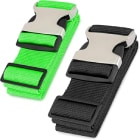
10. Activated Charcoal
Japan’s food scene is incredible, but it’s also full of a lot of uncooked fish. Add that to the stress of travel, and stomach upset is a common problem. Activated charcoal is a very effective and natural way to shorten the duration of food poisoning or traveler’s diarrhea. It works by naturally absorbing toxins in your system so that you can get back to enjoying your travels. I have found it incredibly helpful, and I even use it when I’m not traveling.

11. Quick-Dry Travel Towel
Did you know that many Japanese restrooms don’t offer a method for drying your hands? That’s where having a compact towel comes in very handy. This one is compact, super absorbent, and dries 10x faster than cotton, so you don’t have to worry about carrying around a damp cloth in your daybag. It also is useful if you find the towels at your accommodation less than ideal.
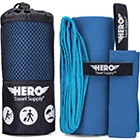
12. Japan eSIM Data Service (Avoid Roaming Fees!)
While paying outrageous roaming rates has been the standard for international data usage – now there is a better solution! An eSIM allows you to skip the cybersecurity risks of joining sketchy public Wi-Fi networks or relying on a physical SIM card that may not even work upon your arrival.
An eSIM offers the ultimate convenience since you can activate it before your trip and manage it remotely. There are so many perks to this service by Saily – lower roaming charges, fewer cybersecurity risks from hackers, the ability to swap carriers in different countries, and you only pay for the amount of data you plan to use. So you can save your Japanese yen for something more exciting things like saki and okonomiyaki!

Pick a data plan at Saily.com ➜
13. Stylish Raincoat
A raincoat will definitely be important in Japan, as will a bit of style and class. This raincoat will serve you well, and will keep you feeling and looking good. It’s also not excessively heavy like some trench coats, so don’t worry about adding too much weight to your luggage. Columbia is an adventure brand known for its quality and ability to last.
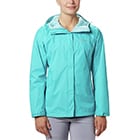
14. Discounted Tickets on Japan Tours
Whether you want to spend the day at Mount Fiji or Disneyland , Japan has so many cultural and eclectic experiences to enjoy. We use Get Your Guide to book most of our excursions around the world because they offer discounted tickets on the most popular tours.
While in Tokyo, indulge in the local cuisine and use the hop-on-hop-off bus to get around. From peaceful Kyoto , you can explore gorgeous temples and natural landscapes while getting in touch with your spiritual side. One of our favorite experiences was taking part in an authentic tea ceremony .

See all Japanese attractions at GetYourGuide.com ➜
15. Packing Cubes
Packing organizers are a game-changer and once you try them, you won’t go back. No more suitcase explosions across the hotel or digging to find a sock’s matching pair. This set will organize your items into different cubes and comes with separate laundry bags to organize your dirty and clean clothes.

16. Deodorant Wipes
Traveling and days out in the sun can make many travelers, including myself, feel sticky, stinky, and unclean. Many bathrooms in Japan have no way to wipe hands or faces, so unless I can take a shower right away, I sometimes have to feel uncomfortably dirty for a while. I’ve found that deodorant wipes are a life-saver in these scenarios. These are smooth and lightly scented, plus they’re good for sensitive skin.

17. Comfortable, Cute Clothing
Japanese culture is more modest than that of the West. Women generally cover their shoulders even in the summer, and a level of propriety is expected when visiting people or spiritual places. A cute, comfortable, and casual dress like this one is perfect to bring. In summer months, it will keep you cool — but won’t show off too much skin.
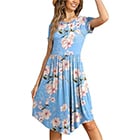
18. Windproof Travel Umbrella
When it rains, it pours in Japan. Most of the rainy season spans through the summer months, but Okinawa can see rain earlier, so it’s wise to pack a lightweight travel umbrella. This one weighs 1 pound and comes with a convenient carrying case. It can cover two people and is very durable.
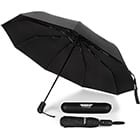
19. Lightweight Daybag
You’ll need to have a bag with you to carry all of your essentials. This lightweight backpack is made for travel and perfect to hold the items you need – camera, phone, water bottle, umbrella, etc. – but small enough to be unobtrusive.

20. TSA-Approved Luggage Locks
We attach luggage locks to our backpacks, sometimes purses, definitely checked suitcases, and even lockers! After having something stolen out of our checked bags on an international flight, we feel you can never be too safe. These locks are 10x harder to crack than 3-digit locks and we bring a couple of sets everywhere we go.
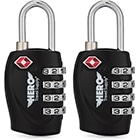
21. Filtered Water Bottle
While the water is clean in Japan, it’s wise to have autonomy over your water supply when drinking from the tap. This Brita bottle purifies water with a built-in filter. It noticeably improves the taste of water and can be put in your backpack pocket (empty) when going through security so you have it for the whole trip.
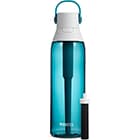
22. Modest Swimsuit
As mentioned, Eastern Asian culture is quite modest and humble. You do not want to trot around in a string bikini or thong, so it’s recommended to wear a full-coverage one-piece bathing suit. You will blend in with the locals better and show a display of respect for their customs.

23. Packable “Just in Case” Bag
You KNOW you never have enough room in your bags for the flight back because shopping is one of the best ways to take a piece of the vacation home with you. Use this “just in case” duffle bag for all of the surprise purchases you make in Japan. It counts as your personal item for the return flight so you can fill it with chopsticks, yukatas, kimonos, matcha, tea, Samurai swords, or any other local goods your heart desires!
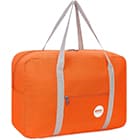
24. Warm Pajamas
Many places are without central heating – the traditional architecture and minimalist style are key parts of Japanese culture, and so it’s not surprising that certain “extras” are not widely available. Since it can get cold at night during any season, I recommend bringing a warm pair or two of pajamas so that you can remain comfortable at night.

25. Mosquito-Repellant Wristbands
Mosquitos are common in Japan, just as prevalent as cockroaches and cicadas! Use these wearable wristbands to repel nasty critters, using citronella and natural essential oils rather than harsh chemicals. While the mosquito-borne Japanese Encephalitis Virus is quite rare, it’s still a possibility, and it’s best to be safe than sorry.
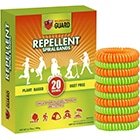
26. Modesty Shawl & Scarf
A cotton scarf can keep you plenty warm but also be spread out to become a thin shawl when you find yourself needing to cover up your shoulders or chest in a more modest place. This is ideal for temples or sacred areas that will require covered shoulders and arms.
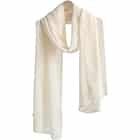
27. Cooling Towels
Japan can get hot, humid, and muggy! Especially in the summer months when it can reach up to 90 °F (32 °C). These cooling towels are absolutely magical. Simply add water and wring them out. They will stay chilly for up to an hour and just need more water added for continued relief. They make outdoor exploring much more fun and tolerable. You’ll find plenty of uses for them for camping, festivals, and tropical destinations.
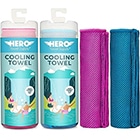
28. Travel Sheets
You never know where you may end up falling asleep during international travel – at the airport, a plane, a train, an Airbnb, a taxi cab, or a hostel. Even if you’re sleeping in uncomfortable places or with less-than-clean sheets, it’s thoughtful to bring your own sheets and ensure you have a sanitary surface to lay on. I’ve slept in some pretty funky places with these, and it feels much cleaner.
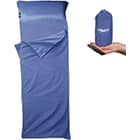
Other packing list items for Japan
- Facial cleansing wipes
- Motion sickness patches
- Sterile toothbrush cover
- Dental floss
- Hand sanitizer
- Mini hairbrush or comb
- Water bottle
- Nail clippers
- Contact solution
- Menstrual cup
- Loofah glove
- Solid shampoo
- First aid kit
- Headphone splitter
- Flexible tripod
- Headlamp/flashlight
- Flash drive
- Memory card
- Kindle cover
- Japan power adapter
- Travel pillow
- Compression flight socks
- Stain remover wipes
- Passport photos
- Medications and vitamins
What to wear in Japan

We mentioned this above but it’s worth repeating: it’s considered rude to go barefoot inside most places and flip-flops are a no-no, so bring plenty of comfy socks to wear or carry with you!

Fashion in Japan offers quite a broad spectrum of different looks and trends. Cleavage is considered to be ‘revealing’ but legs are widely flaunted without much concern – so show them if you so choose! Dress a bit more conservatively when visiting temples, or when you spend time with local families. Shoulders are also considered to be inappropriate with the older generations, so it’s best not to pack strapless dresses or even tank tops with very thin straps.
Slip-on shoes are crucial since you’ll be taking them off and putting them on repeatedly. For dressing up, bring your kitten heels or a pair of dressy sandals. For the warmer seasons, you’ll do well with a crisp white t-shirt, a statement belt, and a pair of skinny jeans for dinner. In winter, you’d definitely need a thicker parka and a chunky scarf for the northern parts of the country. What should MEN wear in Japan? – (Click to expand) Below is a sample men’s clothing list. (All items link to Amazon.com for your convenience).
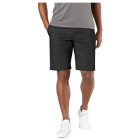
Generally-speaking, Japanese men tend to dress more conservatively, so stick with a more muted, modern look. You will still find plenty of Western inspiration wherever you go, so you shouldn’t stand out like a sore thumb. In the bigger cities, you’ll find more fashion-forward attire, but you can’t go wrong with the clean-cut a sophisticated look no matter where you are.
You’ll find that the Japanese way of life is easy to love, and the culture is fascinating. Pack light because you’ll definitely want to shop, but be sure to select a versatile wardrobe that will allow you to switch between exploring, shrine visits, shopping, and semi-formal dinner outings.
Packing for the Seasons in Japan
Spring – march, april, may:.
Mild and pleasant weather plus blossoming trees make this an ideal time to enjoy Japan. They are also what make spring such a popular tourism time, so prepare for crowds. Rains can happen, and you’ll see some fluctuation in the weather so be prepared with good layers that can be easily added and removed.
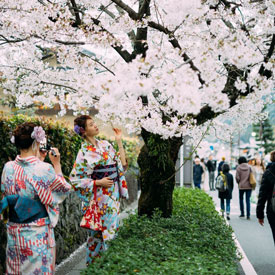
SUMMER – June, July, August:
Most places in Japan are hot during the summer, with humidity that makes it worse. Tourism is a little lighter this time of year.
Pack clothes that will keep you cool in the heat, but try to remain respectful and tasteful when possible. Light fabrics, pretty blouses , breezy skirts , and a sun hat will serve you well. Mountainous regions of Japan are less hot and more enjoyable. Temperatures average between 65°F to 80°F (18°C to 27°C).
FALL – September, October, November:
This is typhoon season, but when there are no storms the weather is generally mild and pleasant, albeit a little unpredictable.
Pack for any weather: comfortable pants and skirts , blouses and sweaters . Bring a rain jacket that can also keep you a little warm – anything that can be used for multiple purposes will save you room in your luggage.
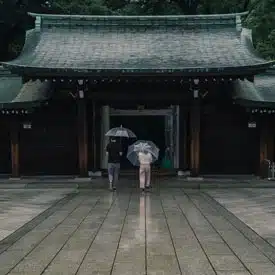
WINTER – December, January, February:
Winters in Japanese high country areas are snowy and gorgeous. Lower elevations still see some snow, but mainly enjoy crisp and cool days that you’ll still need warm gear for.
Layers, layers, layers! sweaters and a jacket or coat are needed, plus hats and gloves if you feel you’ll need them (most people do). Temperatures average between 25°F to 35°F (-4°C to 2°C).
Gourmet Food: Japanese food…There is so much to say and so much to experience. From delectable sushi platters to richly flavored Soba and Udon Noodles to Tonkatsu and Yakitori. The Japanese take great pride in their cuisine and food culture is something that many social activities revolve around. Also, don’t be afraid to dine alone – it’s actually quite a common practice in Japan!
This is the country that has the most Michelin-awarded cities. There are 304 places to choose from in Tokyo alone, but this doesn’t always mean you have to dress up. It’s best to do your homework so that you don’t show up to a street stall wearing your finest garb. For casual dining, you don’t have to worry much about what you wear, but some establishments will ask you to remove your footwear. Nicer clothing is never bad, though, so air on the well-dressed side if you’re unsure.
Beaches: Japans’s unique structure offers plenty of coastline on either side of the country, and this means fun in the sun! Sunbathing and swimming seasons differ hugely from south to north and it’s said that the best beaches to visit are found in Okinawa (south) but there are other spots that offer some tropical vibes too. Bikinis are a natural choice for women, and as long as they’ll stay on during any of your chosen activities, they’re perfectly acceptable. Bring a cute cover-up for when you come up from the beach. Men tend to wear anything from speedo’s to board-shorts, so it all depends on your taste.
Baseball: Baseball was first introduced to Japan in 1872 and is probably one of the most popular spectator sports in the country. The highest level of professional baseball in Japan is the Nippon Professional Baseball League. The first of each 144 regular season games kicks off in March each year, and a 7-game contest series in October determines the winner of the Nippon Series.
What NOT to bring to Japan
1. don’t pack heavy books or too many books.
Most bookstores carry books in English that you can pick up along the way, or you can bring a Kindle . Don’t weigh down your pack with too many books (easier said than done, I know)!
2. DON’T BRING spray tan or heavy bronzer
Sun protection and healthy skin are fashionable in Japan. Nothing bad is gonna happen if you lay on the bronzer, but you may get a few funny stares, and you’ll stick out in a crowd.
3. DON’T TAKE too many electronics
Japan is the land of electronics, but even so it’s nice to disconnect. Outside of city centers you’ll find peaceful villages and beautiful nature. Leave any non-essential electronics at home, and try to keep your connectedness to a minimum!
4. DON’T PACK a sleeping bag or camping gear
Unless you plan on doing a lot of backcountry hiking, this isn’t necessary. Hostels are equipped with sheets, and even some of the hiking trails have small guesthouses along the way. These items just add bulk and weight.
5. DON’T TAKE lots of cash
Credit cards are accepted in most major towns, though you’ll still need cash in some places. However, there are plenty of ATM machines to resupply. Carrying loads of cash is a risk not worth taking!
6. DON’T BRING an Asia-wide guidebook
Getting a guidebook that’s not Japan-specific won’t give you the detail and guidance you’re looking for, and you may find yourself frustrated and missing out.
Most commonly, you will be asked to remove your shoes at certain public establishments and the homes of people you visit. Bare feet are not okay in most places, so bring socks! Avoid flip-flops. Most homes and public places have a small vestibule called a ‘genkan’ where shoes are removed and kept. In some cases, slippers are provided.
This rule also applies to most shrines and temples. Dressing appropriately when visiting these religious sites is imperative.
Gift-giving: How to follow Japan’s gift customs
While tipping is generally frowned-upon in Japan, giving gifts to your hosts is common practice. Here are a few things to be aware of:
- The numbers 4, 9, and 43 can mean bad luck! Don’t give gifts in these numbers.
- Hand the gift over with both hands (gifts should also be received with both hands).
- Food (especially sweets), flowers (but not lilies, lotus blossoms or camellias which are associated with funerals), and alcohol are the best kinds of gifts to give.
- Food or alcohol from your home country is even better (ie. Maple syrup from north-eastern America).
- If the gift is wrapped, your host will probably not open it right away, this doesn’t mean they aren’t excited, it’s just the custom, and a sign of respect.
FAQs about travel in Japan
1. is the tap water in japan safe to drink.
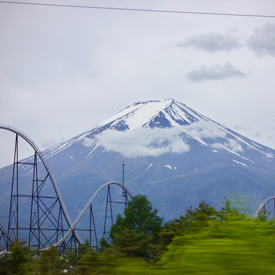
Yes, in most places in Japan the tap water is safe to drink. However, if you’re worried about mercury you can pick up bottled water at one of the many 7/11s, or carry your own filtered water bottle to resupply with fresh water when free opportunities to do so are available – the filter should set your mind at ease.
2. How prevalent is English in Japan?
Not very prevalent. In hotels, hostels, and tourist attractions people will speak English, but outside of that, I wouldn’t count on it.
However, people are still very friendly and will try their best to help you even if they don’t understand. This is where a Japanese phrasebook comes in handy!
3. Is Japan safe for women and solo travelers?
Yes it is. Thanks to its diverse and accepting culture, tourists don’t tend to have problems in Japan. If anything, you may find that you get a little too much excited attention if you stand out as a tourist! However, standard practices should absolutely be followed. Don’t walk alone at night, don’t carry excess cash, keep your valuables close and to a minimum, and always know where you’re going.
Scammers and pickpockets do exist so do your best to avoid being a tempting target! Carry yourself confidently and show plenty of respect to the locals, and you’ll more than likely avoid any problems. However, make sure you look at travel warnings about your destination before booking your trip, just in case!
4. When is the best season to visit Japan?

September/October are ideal for pleasant weather. You’ll find that April-June months are good for the cherry blossom festival (if you can catch it – it’s evanescent!). Of course, if you’re there for skiing I’d recommend December-March, and the summer months if you want to do some island-hopping.
5. Is it worth getting a Railpass?
Yes! I actually failed to get the rail pass before I went, and was slumming it on overnight buses and local trains to recover the cost.
If you plan on traveling to more than a couple of locations, the rail pass is definitely worth the investment, and much cheaper than buying individual tickets in Japan.
6. Do I need to tip in restaurants in Japan?
There is generally no tipping in Japan. Sometimes a tip may even be refused. Instead, slurping your noodles and making appreciative noises show you’ve enjoyed your meal!
7. Where should I eat in Japan?

Everywhere! The food is delicious! Osaka is a foodie paradise and has a lovely market where you can sample interesting cuisine. You’ll find Ramen bars dotting the streets in any city you go to with people standing up to slurp their noodles. Katsu curries, sushi, and soba noodles are also abundant.
Trying an Izakaya (an informal pub-type place which offers small tasting dishes) is a great way to experience local culture. The Japanese are passionate about their food and aim to find fresh ingredients. It’s hard to go wrong with the food!
8. What is the best way to get around Japan?
The train is the easiest way to travel. It’s comfortable and reliable. However, busses are also clean and comfortable, though slower.
9. Do I need a visa to visit Japan?
Most countries will get a visa stamped on arrival but check with your embassy’s website to determine what requirements there are for your nationality.
10. How can I watch Sumo in Japan?
I recommend finding the dates of the Sumo tournaments online. To see a sumo match without breaking the bank, arrive at the stadium at 10 am (or earlier) the morning of the match. You will then stand in the most organized rush ticket line you’ve ever seen. Everyone stands quietly and orderly and proceeds in the queue. They’ll then sell all the remaining tickets for the day at around $20 a piece. Just be sure to get there early to avoid disappointment!
P.S. One of the excellent things about sumo matches is that you can bring in your own food and drink!
11. How can I travel on a budget in Japan?
Japan has a reputation for being expensive and, compared to China or SE Asia, it certainly is. But there are many ways budget travelers can enjoy Japan. The people are very hospitable so Couchsurfing can be a lovely experience (though apartments are small so be prepared to sleep on a sleeping mat on the floor). You can also find cheap hostels or business hotels which will have either a small single room with a mattress or a tube with a bed you can sleep in. These hostels and business hotels go for about the same rate as you would find in North America.
Going to markets or cheap restaurants/ramen bars is a great way to save. I found that for around $10 (US) I could get a very tasty meal. Of course, you can also cook your own food and if you stay with a host I’m sure they’ll be happy to share their favorite recipes with you! Even take-away sushi or noodles from the supermarket is as tasty as what you’d find in a lot of Japanese restaurants back home. Slow travel is also a great way to make any trip more affordable.

Asher Fergusson
- Travel Tips
Japan Packing List: 9 Essentials to Bring for Your Japan Trip

- Chisa Nishimura
Now that you've built up your Japan travel itinerary, it's time to start packing your suitcase. But do you know what to bring for your Japan trip? This Japan packing list will help you with what to pack for Japan, making sure you have all the items that are absolutely necessary for an amazing sightseeing journey!

This post may contain affiliate links. If you buy through them, we may earn a commission at no additional cost to you.
1. Japan Is a Cash-Based Society, So Bring Some Cash!
Barring convenience stores and large commercial facilities, stores and restaurants in Japan typically do not accept any other form of payment except for cash, so it is essential that you carry some when travelling in the country. It might seem risky in your home country to carry lots of cash with you, but rest assured that Japan is a rather safe country to travel in.
Places that do accept credit card payments will normally only accept JCB, Visa, and Mastercard, but recently more places are starting to accept other kinds of credit cards, as well as other forms of electronic payment such as PayPay and LINE Pay.
If you need to withdraw Japanese yen from your overseas bank account while in Japan, use the ATM at a post office or Seven-Eleven. You can also exchange 12 different currencies into Japanese yen using Smart Exchange, a currency exchange machine that's installed in approximately 400 locations all across Japan. All of these spots are registered in Google Maps, so it is easy to find out where your nearest one is.
▼ Japan Post Bank English: https://www.jp-bank.japanpost.jp/en/ias/en_ias_index.html
▼ Japan Post Bank ATM Finder English: https://global.map.japanpost.jp/p/en/search/
▼ Seven-Eleven ATM English: https://www.sevenbank.co.jp/intlcard/index2.html
▼ Smart Exchange English: https://smartexchange.jp/
2. Japan Rail Pass Is a Must-Have If You Plan to Travel All Around Japan
The Japan Rail Pass is an extremely useful item that allows international tourists to explore as much of Japan as they want at a set price. It is offered by the country's biggest railway company Japan Rail (JR), which has train lines all the way from Hokkaido in the north to Kyushu in the south, as well as shinkansen (bullet train) lines, buses, and even ferries.
To attain this pass, you have to meet one of the following conditions:
・If you are a foreign national , you must show proof that you are entering Japan as a "temporary visitor" for short-term sightseeing purposes. ・If you are a Japanese national living overseas , you must show your Japanese passport and proof that you have lived overseas for 10 consecutive years or more. This proof needs to come from the Japanese embassy in the foreign country where you live.
Here's how much it costs:
・7-Day Pass: Adults 29,110 yen / Children (6-11 years old) 14,550 yen ・14-Day Pass: Adults 46,390 yen / Children (6-11 years old) 23,190 yen ・21-Day Pass: Adults 59,350 yen / Children (6-11 years old) 29,670 yen
For more information on the JR Pass, check out our guide and the official website below.
▼ JAPAN RAIL PASS (JR Pass) Japanese: http://japanrailpass.net/index.html English: http://japanrailpass.net/en/index.html
Our Top Tips
JR Pass for Whole Japan
Explore Japan in the most convenient and economical way with a Japan Rail Pass! It is valid for the majority of railways and local buses operated by JR.
3. Consider Purchasing or Renting a Portable Wi-Fi Router or SIM Card
There are many public places in Japan that offer free Wi-Fi, including train stations, airports, convenience stores, fast food chains, and cafes. However, Japan is still lagging behind other countries when it comes to this, leading to complaints about how inconvenient it is.
For this reason, we recommend tourists purchase portable Wi-Fi routers or SIM cards. With either of these options, you are limited by how much data you decide to purchase, so there is no worry about the possibility of overspending on data roaming. You'll still be able to enjoy using the Internet whenever you want, without having the option limited to whether free Wi-Fi is available or not!
Companies are also releasing new services to help the country cope with the influx of tourists. One such example is Japan Connected-free Wi-Fi, a smartphone app that helps you easily discover and connect to free Wi-Fi spots all across Japan. It is free and available in 16 different languages, including English and Chinese, so why not test out just how useful it is by installing it for your next Japan trip?
▼ Japan Connected-free Wi-Fi Japanese: http://www.ntt-bp.net/jcfw/ja.html English: http://www.ntt-bp.net/jcfw/en.html

4. Stay Connected by Always Carrying a Portable Charger or Two
You'll almost definitely need to use your phone often when travelling in order to look up information, figure out how to get somewhere, and so on. However, even in big cities like Tokyo and Osaka , there aren't that many places where you can charge your devices. Look over your travel plans one more time and make sure to carry a portable power bank (or two) if you plan to be out for the whole day!
5. Avoid Ruining Your Electronics by Bringing Along the Right Power Adapter
Voltages can differ depending on the country, so you absolutely can't forget to bring a power adapter to power your mobile phones, portable chargers, and other electronics! Specifically, make sure you get the A type adapter, which is set at 100V and has two straight prongs. If you happen to forget to bring an adapter, you might be able to find one at a local electronics store, but it can be a hassle when you're not used to shopping in a foreign country.
6. Bad Weather Won't Ruin Your Plans as Long as You Carry a Travel Umbrella
Japan's unique geographic location means that it has a rainy season (June to July, depending on the region) and a typhoon season (July to October), resulting in a yearly average precipitation level of 1,718mm. This is two times the world average of 880mm! The rain can get especially bad during typhoon season, with torrential rainstorms and unexpected pours. This is where having a travel umbrella can come in really handy!
Forget your umbrella? Japanese umbrellas have incredible function and design, so they are often purchased by foreign tourists for their own use or as a souvenir. You can find them sold everywhere, from your nearest convenience store to large shops like Tokyu Hands.
7. Let Your Smartphone Save the Day with These Useful Apps
Don't let your travel plans get ruined by bad weather or a natural disaster! Since Japan is a country that often gets torrential rains, typhoons, and other bad disasters, you'll want to arrive with smartphone apps installed for all kinds of situations. Pick up "Weather Japan" for such weather info. It supports multiple languages, including English!
▼ Weather Forecast App "Weather Japan" http://weatherjapan.guide/
8. The Surprisingly Useful Handkerchief/Towel
Japanese washrooms come equipped with soap, but there are plenty of places that don't offer paper towels, so you should make sure to bring a handkerchief or towel with you. You'll also need it when you wash your hands at the temizuya (Shinto ablution pavilion) of shrines and temples to cleanse your body before making a prayer. Most tourist spots will sell handkerchiefs in unique local designs, so why not purchase one as a souvenir as well?
Japan Shinkansen, Narita Express (N'EX) & Express Train Tickets
Plan ahead by booking your shinkansen, airport train, and express train tickets online in English. Have the tickets sent to you by mail or collect them at the station once you're in Japan.
9. Last but Not Least, Let's Talk About Clothes!
There's a lot to think about when it comes to clothing choices for your Japan trip.
For starters, most regions of Japan have four distinct seasons. That might sound easy to prepare for, but thanks to the archipalego stretching a long distance from north to south, there can be a 20-30°C (68-86°F) temperature gap between regions, as they fall under different climate groups. For example, Hokkaido in the northernmost corner of Japan is known for its subarctic climate, while Okinawa to the very south is a part of the subtropics. This means that in the winter, Hokkaido can reach below freezing point, while regions like Okinawa only ever get down to a breezy spring temperature of 15°C (59°F)!
On top of all this, daytime and nighttime temperatures can wildly vary during the spring and summer seasons in Japan. To accommodate for this, you will want to bring something with long sleeves such as a flannel shirt, cardigan, or jacket. As for the summer, bring along a thin shawl or cardigan to help you make it through the cold of the air conditioning in places like department stores and train carriages. Finally, when it comes to winter in Japan, you should not forget to bring along a coat, muffler, mittens, and knitted cap if you are travelling anywhere apart from Okinawa, as oftentimes it will stay near or under 0°C (32°F) for several days in a row.
While you can certainly show up to Japan without having prepared anything in advance, you'll run into far fewer problems just by bringing the items mentioned above. We hope you found this short guide useful and that you'll have a wonderful time sightseeing around Japan!
If you want to give feedback on any of our articles, you have an idea that you'd really like to see come to life, or you just have a question on Japan, hit us up on our Facebook , Twitter , or Instagram !
The information in this article is accurate at the time of publication.
tsunagu Japan Newsletter
Subscribe to our free newsletter and we'll show you the best Japan has to offer!

- budget travel
About the author
Related Articles
Related interests.
- Traveling with Kids
- Rules & Laws
- Climate & Seasons
- Transportation
- Traveling alone
- Manners & ettiquette
- Pocket wifi & hotspots
- Smoking & Drinking
- Travel itineraries
- Currency & money
- Japan on a budget
Restaurant Search
Subscribe to the tsunagu Japan Newsletter
Sign up to our free newsletter to discover the best Japan has to offer.
Connect with Japan through tsunagu Japan
Let us introduce you to the best of Japan through our free newsletter: sightseeing spots, delicious food, deep culture, best places to stay, and more!
Boutique Japan
Expert Tips for Your Japan Packing List
As you prepare for your trip, you’ve finally turned your attention to your Japan packing list.
Fortunately, preparing for Japan can be surprisingly easy, but before you travel make sure to keep these essential packing tips in mind! Some of these suggestions are obvious, but others may surprise even experienced travelers.
We’ve also included some of our favorite travel gear, in the hopes that it will make packing a bit more fun and easier for you. After all, packing can be one of the most enjoyable — or dreaded! — aspects of preparing for a big trip.
Here is your 8-step Japan travel checklist:
- Bring shoes that are easy to slip on and off
- Pack as lightly as possible
- Use takuhaibin , Japan’s luggage-forwarding service
- Bring formal and casual clothes
- Get Japanese yen: you’ll need it!
- Handle visas, passports, and travel insurance
- Don’t forget essential extras: pocket Wi-Fi, hand sanitizer, and more
- Leave room in your luggage to shop in Japan

1. Bring shoes that are easy to slip on and off
No, you don’t need to wear geta .
But unless you enjoy untying and lacing your shoes every few minutes, the best shoes for Japan are ones you can slip on and off easily.
Many places in Japan – including ryokans (traditional inns) , temples , and some izakayas and restaurants – require you to remove your shoes.
As a rule of thumb, if you see tatami mats, you’ll need to take off your shoes. In these cases, it’s also considered somewhat impolite to be barefoot, so if needed bring a pair of socks with you.
Read more about Japanese etiquette tips and taboos .
Speaking of socks, make sure yours are hole-free! If needed, stock up on high-quality socks at one of Japan’s ubiquitous sock shops.
Depending on your itinerary, it’s usually also wise to bring comfortable walking shoes. Tokyo is a surprisingly walkable city, and for places like Kyoto there’s often no better way to explore than on foot.
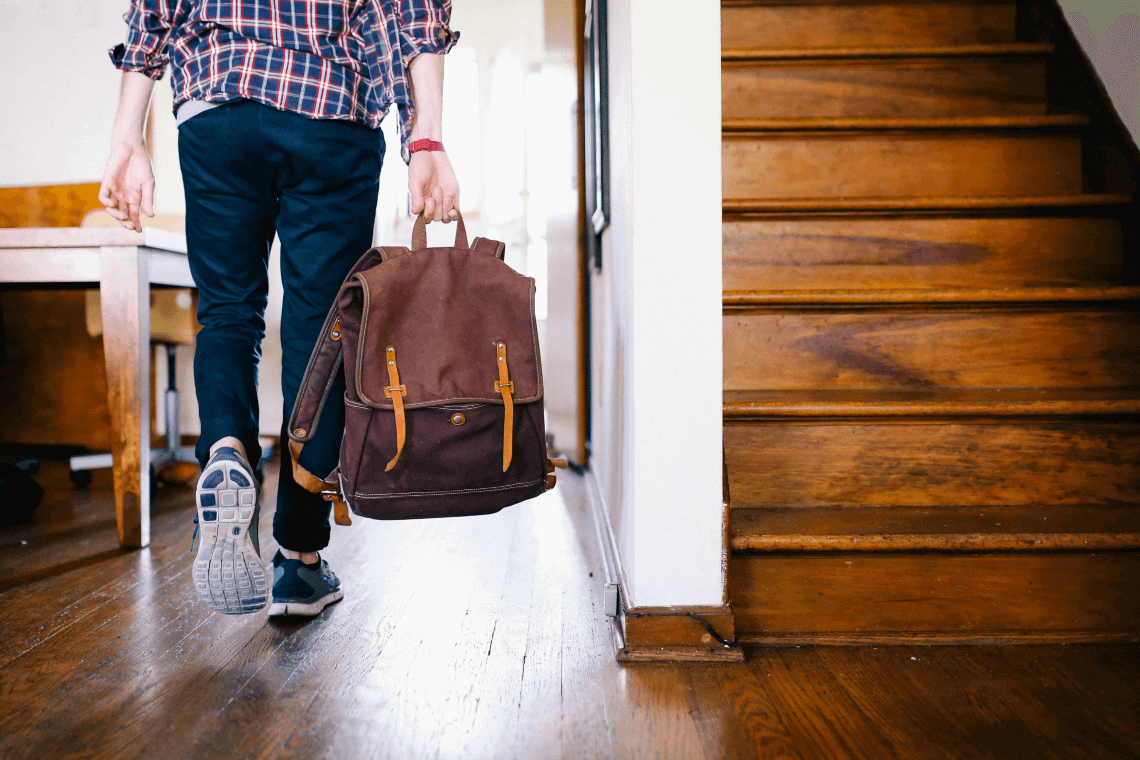
2. Pack as lightly as possible
Packing lightly is a useful skill for travel to any country, but in the case of Japan it is especially worth noting. Navigating Japan is much easier when you have a small, easily portable bag or suitcase.
Most travelers in Japan rely heavily on Japan’s comprehensive and easy-to-use railway networks , but unfortunately Japanese trains and train stations do not cater especially well to travelers with a lot of luggage.
How do we define “a lot of luggage”? Anything more than a small rolling suitcase (airplane carry-on size) and a backpack or duffel.
Japanese train stations are often quite crowded, and to make matters worse they often don’t have as many elevators or escalators as you might wish. This is true in major cities, and even more so in rural areas.
The shinkansen (bullet train) typically has a small dedicated area for suitcases, but this space must be reserved in advance of travel. On the other hand, the shinkansen’s overhead space is just right for small carry-on sized suitcases.
As for other (non-shinkansen) trains in Japan: while some do have some space overhead for small bags, many have none at all.
For all of these reasons, we recommend traveling either with a small rolling suitcase or backpack, if at all possible.
Not willing or able to pack light?
You’re in luck!
Japan has a wonderful luggage-forwarding service that will make traveling through Japan a breeze, even with loads of luggage.
Read more about luggage forwarding below.

3. Use takuhaibin , Japan’s incredible luggage-forwarding service
We know not everyone can or wants to pack light.
Fortunately for heavy packers, Japan’s incredible luggage-forwarding system (known as takuhaibin , or takkyubin ), means you don’t have to.
“ Hands-free travel ” is a fast, reasonable, and very reliable service that allows you to easily and efficiently send suitcases from hotel to hotel, or even to the airport.
While in some instances same-day forwarding is possible for a premium, delivery between most destinations within Japan takes one or two nights.
This means spending a night or two without your main luggage. In cases like this, we usually recommend “skipping” a destination, and traveling for a day or two with just a small overnight duffel or backpack.
Even though some travelers are hesitant to part with their main suitcase, it can certainly be worthwhile — especially when traveling to remote locations.
Not only can traveling in rural Japan be a hassle with a large suitcase (see the section above!), it can also be very freeing to travel lightly while exploring Japan’s countryside.
For example, if you’re going to a ryokan in the countryside , you won’t need much anyway, since you’ll probably spend most of your time in yukata (Japanese-style robes)!
If you’re traveling with another person, consider sharing the delivery service with a traveling partner. This way you can keep one “shared” suitcase (that you forward from hotel to hotel), and a smaller bag to easily carry with you from destination to destination.
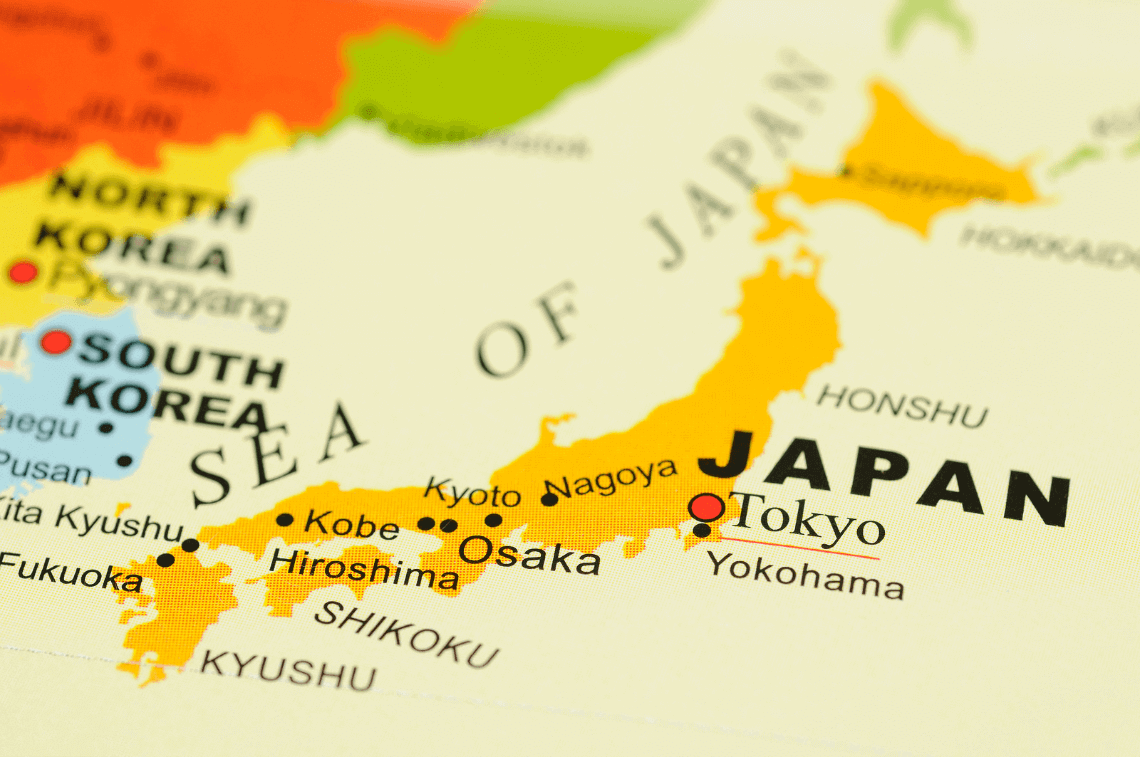
How to use Japan’s luggage forwarding
Taking advantage of luggage forwarding is easy! The front desk at most hotels and ryokans can make the arrangements for you — just make sure to let them know a day or more in advance. Giving them proper notice ensures they can make the arrangements for you in good time.
The price depends on factors such as luggage size (dimensions and weight) and destination, but you can typically expect to pay around US $15-$30 per suitcase. If your bag exceeds weight limits, you may need to separate your items into multiple bags.
If you’re staying in budget accommodations (or in a private home, for example), you’ll need to make the arrangements yourself.
One option is to do so at a conbini (convenience store). Or, refer to the informative websites of Yamato Transport or Luggage-Free Travel , which both specialize in luggage-forwarding services.
While luggage forwarding is a fantastic service – and very reliable, as most Japanese services are – please make sure to use it at your own risk.
THINKING OF BECOMING A LIGHT PACKER?
Here are a couple of our favorite bags for traveling around Japan:
- Personally, I like Minaal bags. I have this one from 2016, and have used it for long trips to Japan and elsewhere successfully. Check out their travel gear .
- Another solid option is the Samsonite Freeform Hardside Spinner 21. You can buy it on Amazon here .
- A classic, some travelers swear by the Tom Bihn Aeronaut 45. See all their bags here .

4. Style & fashion: what to wear
You don’t need to go out and buy a new wardrobe for your trip to Japan. In fact, we recommend the opposite.
If anything, leave space in your luggage so you can go shopping in Japan, where you will find some of the most unique and best-quality fashions in the world.
Tokyo is renowned as a shopper’s paradise (these Tokyo neighborhoods are a great place to start), but you’ll find great cutting-edge and vintage styles throughout the country, particularly in other cultural centers such as Kyoto and Osaka , and even in smaller towns like Onomichi .
Even though fashion standards in Japan are generally quite high, this doesn’t necessarily mean you have to dress up.
People in Japan tend to take care when it comes to appearance, but you will find a huge variety of eclectic styles, ranging from chic to very casual. In a sense, it is comparable to what you might find in places like New York, London, or Paris.
If you enjoy dressing casually, you should be fine in almost all situations – from dining out to a trip to the Ghibli Museum . Although, of course if you have a special occasion (for example, a party or special dinner), then you should dress accordingly.
Typically, formal attire is not required, outside of formal or business situations. For example, even at most high-end Japanese restaurants , jackets and ties are not required for men. However, we certainly recommend using your best judgment and dressing respectfully.
Aside from formal western-style restaurants (keep in mind that Japan has incredible French and Italian cuisine!), which may require jackets for men, most high-end restaurants have simple, common-sense dress code regulations: no baseball caps, flip flops, shorts, etc.
As for the weather?
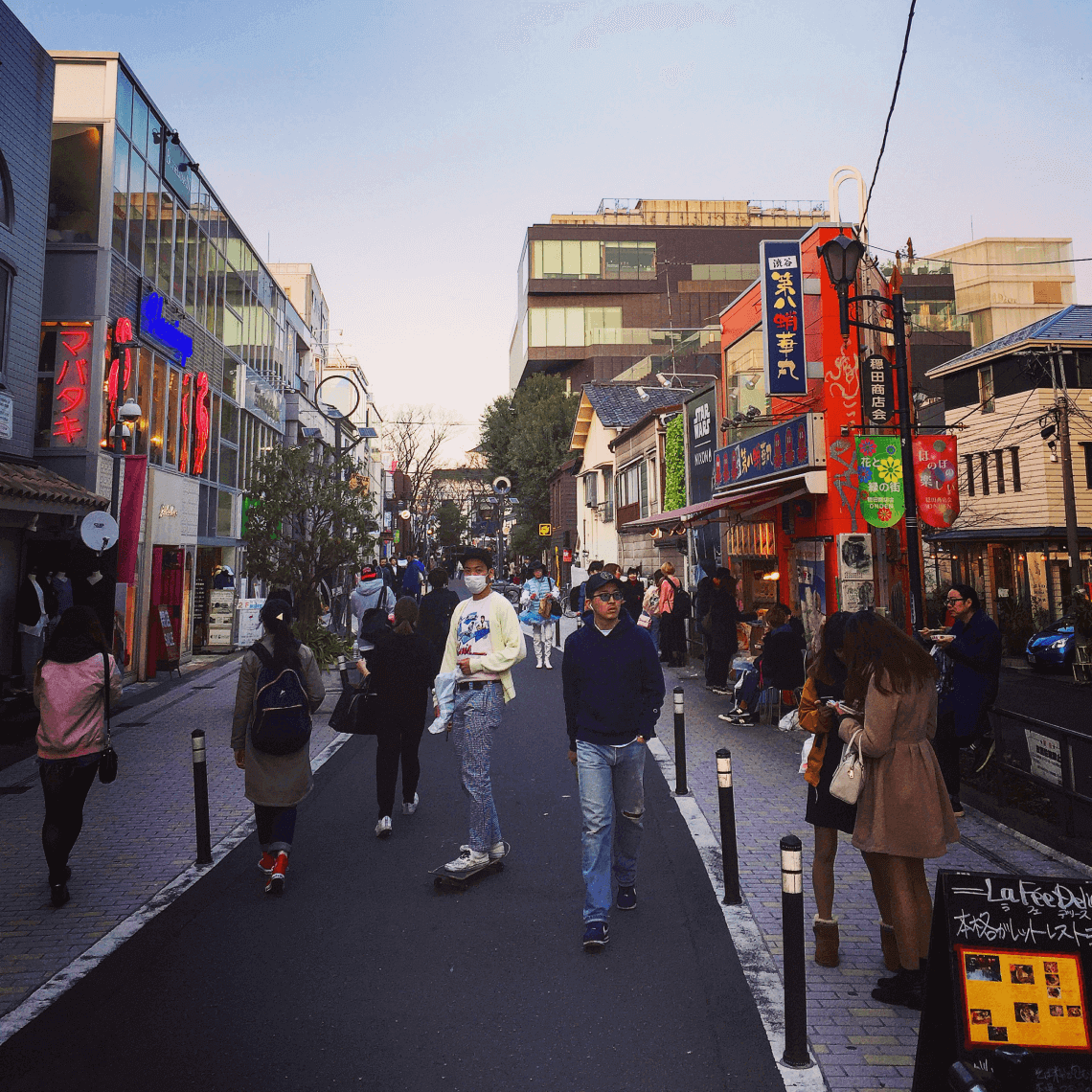
Packing for the weather: the seasons in Japan
Japan is famous for the beauty of its four very distinct seasons, and it is essential to pack accordingly.
This is a good general overview of month-by-month temperatures in Japan — and we also recommend our detailed post on the seasons & when to visit Japan — but because each year varies, the best thing to do is check weather forecasts a couple of weeks before your trip.
If you’re traveling to various parts of Japan, make sure to check the forecast for each place you’ll be visiting, as the weather can vary dramatically between different parts of the country.
As seasons go, spring and fall are particularly fickle, so around these times of year we recommend bringing layers. The weather in spring and autumn can vary widely from day to day, with conditions ranging from warm (even hot) and sunny, to wet and bone-chillingly cold .
5. Japanese yen: you’ll need it!
Japan is a very cash-oriented society.
Even though an increasing number of shops and restaurants do accept credit cards, you’ll probably need more cash than you’re used to — especially when traveling in rural areas.
Luckily, Japan is very safe!
To save time on the ground, consider getting some Japanese yen before you arrive. Even if your local bank doesn’t have yen on hand, they can probably order some for you.
But don’t worry if you land in Japan without yen. You can exchange currency at the airport, or withdraw Japanese yen from an ATM in the airport.
It’s worth noting that while some banks in cities can exchange currency, it’s not generally as easy to find currency exchanges in Japan as it is in many other countries.
Read more in our article about cash, credit cards, and ATMs in Japan .
6. Visas, passports, and travel insurance
Citizens of many countries don’t need a visa for short stays related to tourism, but to be extra safe please make sure you double-check with the Japanese Embassy or Consulate.
As for passports, it’s always wise to ensure your passport has at least 6 months’ validity from your trip end date, or you may not be able to travel (this applies to many countries).
Similarly, it’s generally good practice to make sure your passport has at least 2-4 blank visa pages. In some cases, this may be strictly required.
We’re also very strong proponents of comprehensive travel insurance . Sad to say, emergencies truly have a way of happening at the most unexpected times, and we’ve seen numerous trips cancelled (or interrupted) by completely unforeseeable circumstances.

7. Essential extras: pocket Wi-Fi, hand sanitizer, and more
Here are a few other things we recommend you add to your Japan packing list:
- Pocket Wi-Fi device : Even if this doesn’t sound essential to you, we highly recommend renting a pocket Wi-Fi device (i.e., mobile hotspot). Wi-Fi in Japan is not nearly as widespread as most people imagine it will be (read more in our full post on Wi-Fi and mobile in Japan ). Even if you don’t plan to check email or upload photos, being able to use Google and Google Maps while out and about exploring is invaluable! We recommend pre-arranging a pocket Wi-Fi device through PuPuru ( order here ) or Ninja WiFi ( order here ).
- Handkerchief or small towel & hand sanitizer : As wonderfully clean as Japan is, public restrooms often lack soap and/or hand towels (most Japanese people carry their own handkerchief).
- Travel adapter : Most of Japan’s electrical outlets are 2-pronged “Type A” (100 Volt, 50-60 Hz), so if you have a device with a 3-pronged or European/UK-style plug, you may need a travel adapter. You can buy one on Amazon here . Many electronic devices (such as mobile phones, tablets, laptops, etc.) already have transformers, which means you may not need a converter, but make sure to check your items’ voltage requirements. Read here for more about electricity in Japan .
- For a relaxing flight : Sleep mask ( here’s one from Amazon ) and rosewater mist.
- Small gifts from home : Small local gifts are wonderful for giving to guides and other people you meet along the way. Tipping is not common in Japan , but thoughtful gifts are always appreciated. Gifts representative of your local region or country are especially loved, e.g., a famous local product or local artisanal product.
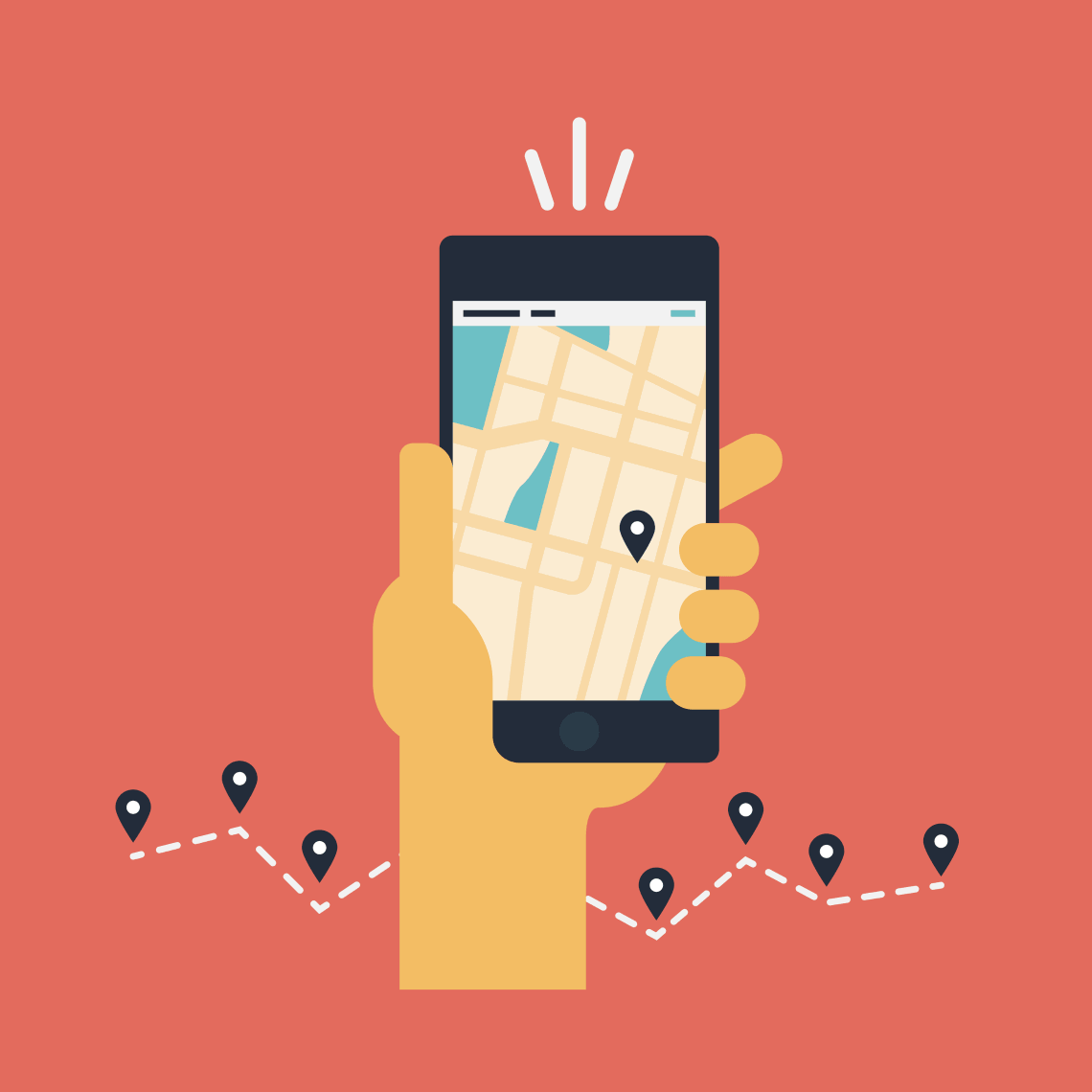
8. Leave space for some shopping!
Japan is a shopper’s paradise.
Even travelers who typically dislike shopping often end up making unexpected purchases.
Because it may be impossible to resist the level of craftsmanship and incredible variety of unique items — from beautiful crafts to handmade clothing, and futuristic electronics — we always recommend leaving extra space in your luggage.
Even if you don’t plan to shop for yourself, you’ll find innovative and high-quality gifts for friends and family back home.
Sample 7-Day Japan Itinerary Packing List
We believe your Japan itinerary should be a reflection of your personal sense of adventure and style, and that no two travelers (or trips!) are alike.
Naturally, deciding what to pack for Japan will depend on your itinerary, but we hope this sample packing list gets you started!
- Small rolling suitcase or Minaal bag (see above)
- Shirts, pants, undergarments, and socks (make sure they don’t have holes, as you’ll be taking off your shoes a lot)
- Shoes that slip on and off easily
- Other clothes (dependent on season)
- Toiletries (toothbrush, etc.)
- Japanese yen (can also be obtained in Japan)
- Pasmo transport card (can be obtained in Japan for first-timers)
- Pocket Wi-Fi (you can order here and pick it up on arrival in Japan)
- Laptop (and charger)
- Smartphone (and charger)
- Adapter if needed
- Noise-canceling headphones for flight
- Headphone adapter jack for in-flight entertainment system (just in case)
- Pen (for customs and immigration cards)
- Business cards
- Omiyage (small gifts, i.e., souvenirs from home)
We hope our Japan travel tips help you prepare for your trip!
If you are looking to embark on a once-in-a-lifetime trip to Japan, we have resources that can help. Start by checking out our sample travel itineraries and learning about our process of crafting customized trips for travelers seeking unique, authentic experiences.
More Great Posts

Is Japan Expensive?
One of the most common myths about Japan is that it’s incredibly pricey — but how expensive is Japan really?…

Japan’s Best Boutique and Luxury Hotels & Ryokans
The best hotels and ryokans in Japan range from charming traditional inns in the countryside, to stylish design hotels and…

Traveler’s Guide to the JR Pass (Is It Worth It?)
The Japan Rail Pass (or JR Pass, for short) can be a good way to get around Japan, but many…
Plan Your Japan Trip
Learn more and contact us to discuss your unique trip.
Get Started
- The Process
- Testimonials

What to Really Pack for Japan: The Complete Travel Checklist
Are you planning a trip to Japan?
You will see many general advice online on what to pack for Japan travel, from overstuffed high fashion wardrobe to minimalist capsule wardrobe. But the packing list for travelers visiting Japan is unique. At most basic level, two (2) things will dictate what you will pack for your trip: 1) Where in Japan you are traveling and 2) The weather you’d expect during your stay. Once this is determined, it will make packing lighter and much more manageable.
Travelers in Japan should expect rain at any time of the year, except when they visit Hokkaido. For detailed weather forecasts and earthquake information, go to Japan Meteorological Agency’s website at https://www.jma.go.jp/en/yoho/
What Should You Wear And Not Wear In Japan?
By now, you should be aware of the Japanese culture and traditions. A good traveler prefers not to look like a tourist in Japan and instead try to blend in. That is, at least as much as a foreigner can in a nearly homogeneous society. Leave your flip flops at home as they are considered very unstylish and underdressed by Japanese people unless you are going to the beach. However, in a somewhat weird contradiction, Crocs or foam clogs are considered perfectly acceptable.
Dressing inappropriately in public won’t work with Japanese people. In fact, Japan has strict dress code for many occasions. For women, avoid wearing spaghetti straps or blouses, or shirts with a plunging neckline. Avoid showing your shoulders when visiting temples or shrines. For men, wear a blazer or jacket when going to a restaurant or nightclub, especially if you plan to go to a fine dining restaurant or an upscale sushi bar. Some may tell you it’s okay since you are a foreign tourist, but Japanese people will respect you more if you abide if you dress appropriately. Avoid wearing all black. It’s strongly associated with funerals.
How To Pack Light in Japan
We all want to pack light when we travel so that our luggage doesn’t weigh us down as much as possible. Packing light also makes unpacking easier at the end of our journey.
Below are some tips to save space and weight in your luggage:
- Leave your chunky or heavyweight sweaters and scarves at home. Cashmere sweaters and pashmina scarves are wonderful alternatives. They’re incredibly thin and lightweight for the level of warmth they offer.
- For flexibility, pack a pair of black travel pants made of cotton and elastane fabric. They’re lightweight and dry out faster compared to jeans.
- When packing your clothes, use the roll-out and put them in packing cubes like these ones to keep them compact and organized allowing for more luggage space.
- When traveling between transitional seasons, pack a versatile jacket called 3-in-1 such as an interchangeable waterproof jacket with a removable liner that’s usually a fleece.
- Only pack two pairs of shoes, dress shoes and your most comfortable walking shoes.
How To Travel Hands-Free in Japan
Most hotels in Japan have a check-in time of 3-4 p.m. If it’s an Airbnb or budget accommodation, they will often not allow you to store your bags. So you have three options to avoid walking around with all your luggage:
- Luggage forwarding service . If you can’t pack light and have several pieces of luggage, you’re in luck. You can have your luggage delivered from the airport to your hotel, the same-day. Every airport in Japan has a luggage forwarding service or TA-Q-BIN, as the Japanese call it. Just look for the red sign, “Hand-Free Travel,” as they are the ones that will deliver the same day. Make sure the luggage being forwarded doesn’t have the items you need for traveling. The cost varies between ¥1,000-¥3,000 per bag, depending on the size and weight.
- Coin lockers . Coin lockers are everywhere in Japan but can always be found at train stations. They come in small (¥300), medium (¥400), and large size (¥500-¥800), though the per-day prices may vary.
- Luggage storage service . Another option is to leave your luggage at the Voyagin Office in Shibuya. There’s no size restriction. Their prices may change, and if it’s during the off-season, it can drop to ¥500 per day, so make sure to check the current price here .
Top 5 Essentials For Your Japan Packing List
There are specific instances that are somewhat unique to Japan that you’ll undoubtedly encounter. Above all, pack light and bring the most comfortable pair of slip-on walking shoes. You’ll understand more later as we progress, so let’s take a closer look.
- The right luggage. A backpack or a duffel is the best luggage for travel in Japan. You can easily carry it up and down the stairs and at train and bus stations. Backpacks are preferred because you are going to encounter a lot of stairs in Japan. But if you need wheels to save your back, it’s best to get a wheeled backpack. Japanese trains and buses don’t have much space for large pieces of luggage, so if you have a backpack, please take it off when boarding and place it between your feet or on the overhead storage rack. An enormous suitcase will also take up a lot of precious space in your hotel rooms, which are small compared to western hotels. So pack light! Only take one piece of check-in luggage and a carry-on for your items. We have a guide to help you pick the best bags for you here .
- A pair of comfortable shoes . When traveling in Japan, you’re going to walk a lot! Take your most comfortable pair of casual shoes for sightseeing, preferably with memory foam. They are beneficial in relieving pain and soreness. If you are traveling during the spring and summer seasons, take a waterproof pair. Many places in Japan also require you to take your shoes off, such as genkans (the entrance of a home), izakayas (Japanese bars), restaurants, ryokan (traditional Japanese inns), and temples. Slip-on shoes or simple-laced shoes will serve you well in these situations, so make sure your socks don’t have holes in them. Our favorite slip-on shoes are from the Skechers Go Walk series . Many tourists who traveled to Japan swore by the Skechers brand as well. If you plan to go to a fine dining restaurant or a business occasion, take your dress shoes.
- A portable hotspot device or data SIM card . We cannot emphasize enough how important it is to have a reliable internet connection while traveling in Japan. If you haven’t reserved a portable hotspot device, book it here . If you’re traveling solo and short-term, it’s cheaper to get a data SIM card.
- Cash . Despite being a very high-tech nation and being the host country of the 2020/21 Summer Olympics, Japan still relies heavily on cash for many transactions. Quick tip: Withdrawing cash from ATMs in Japan gives you a better rate than exchanging your currency for Japanese yen. After getting your luggage and getting through customs, make sure to pull out money inside the airport. You can withdraw cash from Japan Post ATM (JP Bank) and inside convenience stores such as 7-11, Lawson, Family Mart, or Ministop.
- A prepaid IC card . Buying a reloadable prepaid IC card will make your travel in Japan so much easier and convenient. The primary purpose of IC cards is to avoid getting tickets from a ticket machine every time you ride a train. So you can simply swipe and go. You can use it to pay for buses and taxis and even some vending machines and convenience stores. You can purchase either a PASMO (by Tokyo Metro) or Suica IC card from any central train station. The initial cost is ¥1,000 (¥500 for card creation fee and the remaining ¥500 is ready for use). The ¥500 will be refunded if you return the card to the station office.
Japan Document Checklist
Due to the ever-changing circumstances and frequent travel updates for Coronavirus (COVID-19) travel restrictions , please follow the most recent directions from the Japanese Embassy in your country.
- A valid passport and visa . Check your passport if it’s valid for at least 6-months and has a couple of blank pages. You should check with the Ministry of Foreign Affairs of Japan website if your nationality requires a Japan visa.
- Travel insurance . COVID-19 has created a new normal for travelers, and in many countries, they make travel insurance with COVID-19 coverage mandatory. Before the pandemic, my US friends have used and recommended RoamRight . But in these changing times, it’s best to speak with your local travel agent to see which travel insurance provides COVID-19 coverage.
- Flight tickets . If you’re planning on showing your flight tickets through your mobile, make sure you have downloaded a copy on your phone.
- Hotel or Airbnb reservations . If you’re riding a taxi, it’s good to have your hotel’s address in Japanese. It’s also important to remember the nearest train station to your hotel so you’ll know where to go upon landing. Lastly, depending on where you’re coming from, having a hotel reservation could make your immigration time a bit smoother.
- Japan Rail Pass (JR Pass) . If you are traveling extensively in Japan for 7, 14, or 21 days, consider buying a JR Pass online. You can only buy the JR Pass outside Japan and through an authorized online distributor. To activate and use it, you need to exchange your email voucher at a JR office at the airport or main train stations. To learn more about JR Pass and whether it’s for you or not, click here .
- Airport to hotel transfer reservation . If you don’t have the JR Pass, book your transfer from the airport to your hotel. Not only will it save you time and money, but it’ll make your arrival easy and hassle-free. It’s more comfortable and convenient to take a shuttle transfer from the airport rather than train based on our experience. These shuttles will drop you off directly at your hotel or a train station near your hotel.
- Debit cards and credit cards . To save money, bring a credit card that doesn’t have foreign transaction fees. And a debit card that reimburses international ATM fees. Make sure to contact your bank about your travel plans to avoid disruptions with your card.
- Passport and credit card photocopies . In case of emergencies like losing your passport or credit cards, it’s good to have copies of your passports and credit cards in your email or on your phone. All you have to do is take a picture of your passport’s bio page and your credit card’s front and back photos using your phone. Do this for your entire family traveling as well.
- Confirmation tickets in Japan . If you book tours or activities, make sure to save the confirmation email on your phone or have it printed out if required by the travel agency. In Tokyo, we highly recommend booking a Mt. Fuji day tour, local food tours, tickets to Ghibli Museum, or Grand Sumo Tournament. If you’re visiting Universal Studios Japan in Osaka, it’s essential to book your tickets online as they sell out quickly at the gate.
- International Drivers Permit . If you plan to rent a car or go-karting , you need an International Drivers Permit or a Japanese driver’s license to drive in Japan.
Gadgets and Electronics
- Electronics . Tablets, mobiles, laptops, cameras, etc., do not check these in. Get a carry-on bag that is big enough for your electronics but still within your airline’s requirement. Check out a list of international flight-approved carry-on bags here or consider an underseat luggage.
- e-Reader . Carrying books will only increase the weight of your luggage. An e-Reader such as a Kindle would allow you to read your favorite books. That’s if you find the time too!
- Power plug adapter . Japan uses Type A and Type B plugs and sockets, just like in the U.S. and Canada. If you’re not from North America, get a universal power adapter, preferably with Type A & B sockets, we recommend this one .
Personal Care and Toiletries
- Vitamins and supplements . If you have one.
- Jet lag remedies . These jet lag relief pills are beneficial if you’re coming from a different time zone.
- Prescription medications . Some common prescriptions and over-the-counter drugs in the United States are illegal in Japan. Notable decongestants such as Sudafed and stimulants such as Adderall are illegal. It does not matter if you have a valid U.S. prescription for a medicine/drug illegal in Japan: if you bring it with you, you risk arrest and detention by the Japanese authorities. For more information, click here .
- Toiletries . I’ll leave this up to you since each individual varies. If you have a preferred choice of shampoo, conditioner, body wash, deodorant, etc., it is best to bring it with you. It is not likely that you would find the same brand in Japan. It may also be challenging to find similar products because the ingredients are in Japanese. For liquids, pack them into squeezable TSA-approved leak-proof travel containers like this one .
Long-Haul Flight Essentials
- Packable travel pillow . Check out this best-selling packable travel pillow here .
- Noise-canceling headphones or earphones . For added comfort, you can get a pair of noise-canceling headphones like this .
- Lip balm . I find the travel-sized petroleum jelly works best than Chapsticks.
- Effective hand sanitizers . Bring a travel size one.
Optional Items But Recommended
- Coin purse . You can easily find these in 100 yen stores in Japan, but if you already have one, bring it with you as you will get a lot of coin change.
- Power bank . Your mobile phones are going to be running throughout the day because of continuous connectivity. Power banks are expensive in Japan and only provide a small mAh capacity, so get it from your home country. Our favorite power bank is this one . You may also consider the newer model with an enormous mAh capacity.
- Collapsible water bottle . Tap water in Japan is safe to drink, and you can find drinking fountains pretty much everywhere. Taking them with you is not only good for the environment, but you will save you a ton of money during your sightseeing journey in Japan. Collapsible water bottles are affordable in Walmart and Amazon.
- A spare packable bag . To avoid buying additional luggage while in Japan, which can be expensive, make sure to pack a spare bag. Souvenirs, Japanese instant noodles, milk tea, weird Kit Kat favors, and chuhai — if you fall in love with Japan’s flavors or culture, you will need extra storage space! To view our recommended duffle bags, click here .
What Not To Bring To Japan
- Meat products, plants, fruits, and vegetables.
- Firearms and pocket knives.
- Illegal drugs and narcotics. For more information, click here .
- Umbrella. These are very cheap to get in convenience stores in Japan.
RELATED READ :
- The Best 10-Day Japan Itinerary For A First-Timer
- Best Time To Visit Japan
4 thoughts on “What to Really Pack for Japan: The Complete Travel Checklist”
How can a get a copy of the pdf printable packing list shown at the top of this article? 🙂 <3
I would also recommend Oyraa app! Used it a lot to call interpreters to get help when making inquiries to non English-speaking administrations, which can be quite life-saving, in addition to being cost-effective. Hope this may help!
I recommend water bottle too! Preferably, the one that’s packable and with filtration to improve taste. I got mine from an outdoor store. We saved a lot of money in Japan!!
Hey, you’re right! It saved us a lot of money too. I’ll go ahead and update this checklist!
Leave a Comment Cancel reply
Save my name, email, and website in this browser for the next time I comment.

Japan Packing List: Essential Things To Pack For Japan
By: Author Lotte
Posted on Last updated: July 30, 2024
Categories Japan , Packing lists and travel products

Japan is one of my favorite countries in the world and we've taken several trips to different regions of Japan.
From bustling major cities like Tokyo , Kyoto , and Osaka to off-the-beaten-path locations in Japan such as Hokkaido , the Japanese Alps , Koyasan , and Shikoku.
Japan is a large country with four distinct seasons as well as different climates in the various regions, which can make deciding on your Japan packing list quite a challenge!
Japan packing list: everything you need to know

Disclosure: Some links in this post are affiliate links. If you make a purchase through one of these links, we may earn a small commission (at no extra cost to you!). We're very grateful when you use our links to make a purchase:-).
In this post you can find detailed information about the Japan travel essentials to bring with you, based on our own experiences traveling around this beautiful country .
Versatility is key when it comes to packing for Japan!
It's not uncommon for temperatures to be 20°C or more apart between the different prefectures in Japan.
For example, when we make a road trip in Hokkaido in April, there was still snow on the mountain tops, temperatures during the night were below 0 and we even needed gloves!
However, when we flew south a week later, the temperatures in Kyoto were a comfortable 25 degrees and we walked around in t-shirts and shorts.
Average temperatures in Japan
Here are the average temperatures throughout the year for several of the main hotspots in Japan.
Each season in Japan has its own charm. A visit in Spring is the best option for those who want to see the cherry blossoms.
Summers are hot and humid (so stay away from the bigger cities) and great for hiking on Hokkaido and in the Japanese Alps .
Fall brings spectacular autumn colors and the winter months are a great option if you love skiing (and if you want to visit the famous Sapporo snow festival).
That being said, it's important to pack appropriately to make sure you've got a comfortable trip!
The perfect Japan travel packing list for any season
Backpack or suitcase.

During our first trip to Japan, we actually went camping and we brought a tent, sleeping bag, and other camping gear. It was just the two of us (my husband and myself) and we were backpacking Japan on a budget .
That's why we both carried one backpack and one daypack , which held everything we needed (including all our camp gear) while still weighing in at less than 15kg each.
We traveled to a lot of off-the-beaten-path locations where it would have been inconvenient to log around with a large suitcase.
So when choosing between a backpack and a suitcase, consider carefully where you'll be spending most of your time in Japan.
Will you mainly be visiting cities? In that case, a suitcase is a better option. We also brought a suitcase for our second trip to Japan, as we had a lot more luggage because we were traveling as a family, with our then 1-year-old son.
Below you can find my recommended bags and suitcases.

If you decide on bringing a backpack, don't forget to buy a flight bag to protect it during transport. All the loose straps of your backpack can easily get caught on a luggage belt or between a train door, etc.
Zipping your backpack in a flight bag streamlines and protects your bag and keeps it clean.
Packing cubes
I love using packing cubes as it makes it so much easier to keep my stuff organized! Especially now that we travel with our kids, it can be a nightmare to (quickly) find what you are looking for inside an unorganized suitcase.
Not with packing cubes! I usually have one or two for myself, one for my husband, and one for each of our kids.
I have packing cubes in different sizes, the smaller ones I use for toiletries and other small things while the bigger ones are perfect for clothes.
The cubes not only help to keep our stuff organized, but they also make it easier to utilize all the space in our suitcase and backpack efficiently.
Versatile clothes and comfortable shoes
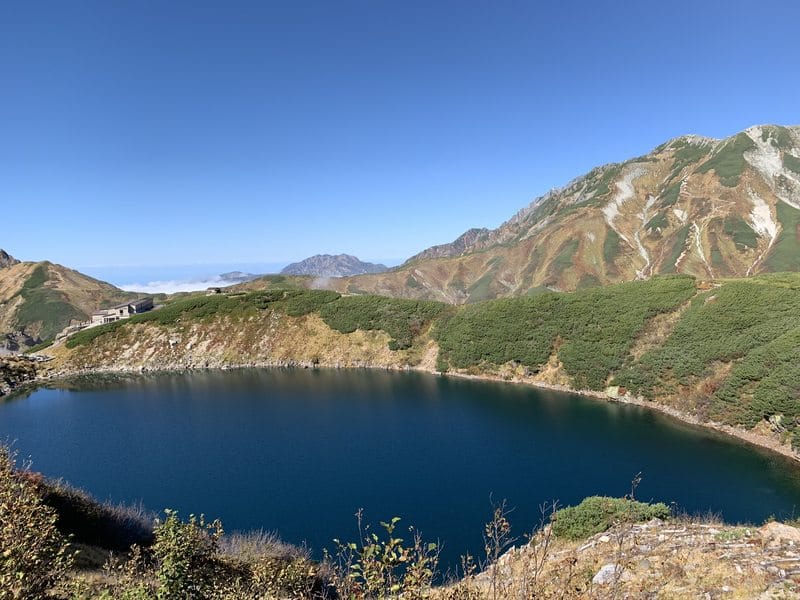
As mentioned before in this post, accounting for all sorts of weather is key when considering which things to pack for a trip to Japan.
Here the magic word is layers . For example, during winter, it can be very cold outside in Tokyo. However, when you step into the MRT or into a souvenir shop, you'll quickly begin to feel uncomfortably hot and you'll be glad to remove a layer (or two).
On the other hand, in summer it's hot and humid outside but with air-conditioned public transport, convenience stores (like Family Mart and 7-11), and department stores, you may actually find yourself freezing in your breezy summer dress.
Therefore, it's a good idea to pack layers for your Japan trip. Here are my Japan packing tips for clothes to bring on your trip:
- Down jacket (comfortably warm but packs really small)
- One or two pairs of skinny jeans
- A hoodie or warm sweater
- A couple of t-shirts
- A vest top (too much cleavage is considered inappropriate so keep this in mind when considering what to wear in Japan)
- A couple of shorts and skirts
- A nice dress for an evening out
- Enough pairs of underwear
You will be walking a lot during your Japan trip so I recommend wearing comfortable walking shoes !

- Lightweight sneakers (with a proper footbed)
- Pretty sandals or something sturdier, like the Teva Tirra . I wear my Teva's all the time, they may not be very fashionable but they are very comfortable and they give proper foot support. In my experience, sandals are the perfect footwear when exploring cities in Japan during warmer weather. Also, you'll be taking your shoes off often in Japan (whenever entering a temple or a home) and sandals are easy to take off (and put back on).
- A pair of flip flops
Things to pack when hiking in Japan
If you intend to do a lot of hiking and outdoor activities during your Japan trip as we did, I recommend packing the following items.
- Hiking boots (make sure to break these in before your trip to avoid blisters)
- Hiking socks
- Hiking pants
- Merino hiking shirt (Merino clothes are not cheap but in my opinion, they are worth every penny, they are light, warm, and dry and don't smell)
- Lightweight rain jacket to keep you dry on rainy days (though hopefully, you won't experience many)
If you only plan on exploring Japan's beautiful cities you won't need these things.
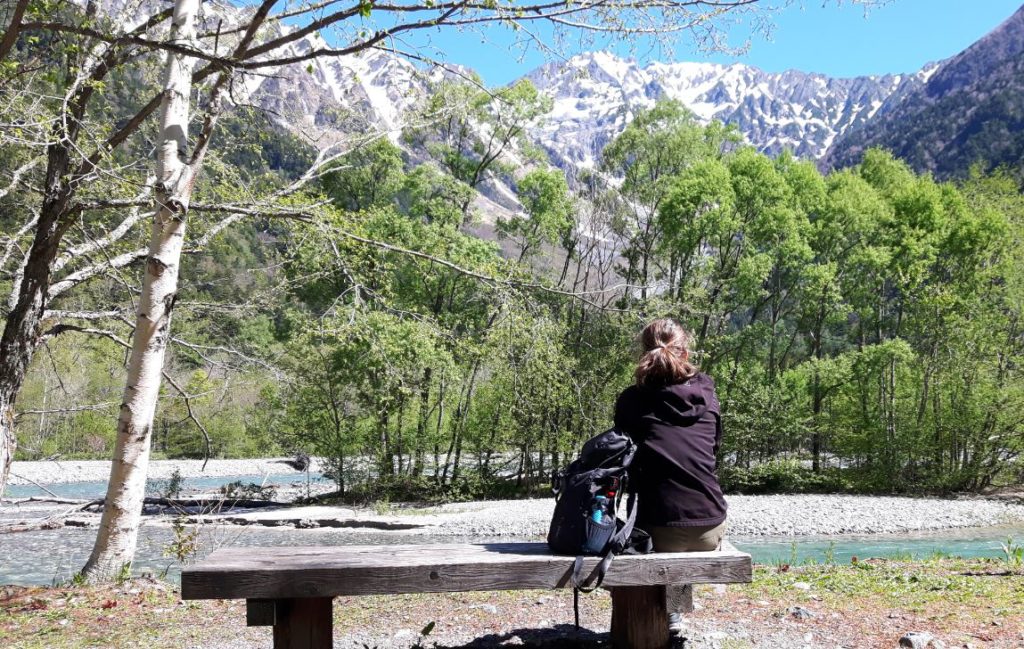
Here is what I usually bring on my trips.
- Ecofriendly deodorant
- Contacts and glasses
- Toothbrush and toothpaste
- Solid shampoo bar (shampoo and conditioner are usually provided in Japanese hotel rooms as well as in the onsen so you may not actually need your own shampoo)
- Make-up and make-up remover
- Sunscreen lotion
- Hand sanitiser
- Items you need for medical care (painkillers, band-aids, etc)
Electronics
- Travel adapter
- Power bank However, you can buy anything electronics-related while being Japan — these things are incredibly cheap here! That's one of the not-so-obvious things to know about visiting Japan .

Documents and money
- Debit cards ⇒ look into which bank is best for you, overseas transaction fees add up if you are on the road for a long time! I recommend having 2 cards from different banks, so if one doesn’t work in Japan, you’ve got another one.
- Credit cards ⇒ essential for booking flights. As with debit cards, it can be smart to apply for 2 credit cards, just for peace of mind and to make sure you don’t run into any issues.
- Cash ⇒ while I recommend bringing bank cards, Japan is still very much a cash society. There are plenty of places where you can't pay by card so make sure you always carry enough cash, especially in more rural areas with fewer ATMs.
- International drivers permit ⇒ If you plan on renting a car you will need an international driver's permit based on the 1949 Geneva Convention model)
- Japan rail pass ⇒ read more below
Note: if you plan on covering long distances in Japan within a short period of time, I highly recommend buying the Japan Rail Pass . This pass gives you unlimited trips on most of the famous JR bullet trains, JR buses, and several other lines. You can choose a pass valid for 7, 14, or 21 consecutive days. While the JR Pass offers great value for money and its the easiest way to get around Japan, it may not always be the most economical option for your trip. It's worth calculating the costs of your itinerary to Japan with and without the rail pass to see which option is best for you. You can use Hyperdia to check the costs of your intended Japan itinerary and decide whether or not the JR Pass is worth the money for your trip.

Small emergency kit
You always hope you won't have to use these items but it's smart to carry them with you anyway.
- Hand sanitizer
- Painkillers
- Motion sickness pills
- Re-hydration sachets
- Plasters/Band-Aids
- Betadine antiseptic
Other essential things and miscellaneous items
- Scarf (my #1 travel item and one of the first things I pack)
- Lonely Planet Japan
- Reusable water bottle
- Gifts from your home country to give to people you meet along the way (this is very common in Japan and is highly appreciated by accommodation hosts, tour guides, and other people who provide a service for tourists).
Additional items for your Japan winter packing list
Japan in winter is beautiful but you do need to pack some extra stuff if you want to stay comfortable. Here are my recommendations for winter travel in Japan:
- Winter coat
- Thermal underwear (such as this merino wool long-sleeved thermal shirt and merino leggings )
Japan packing checklist (downloadable PDF)

Here is a convenient printable pdf that you can use as your packing for Japan travel checklist. Download it for free below!
Plan your Japan trip like a pro with these tools: ✅ Get a Japan Railpass to save lots of time and money. ✅ Rent a car for your Japan road trip via Rentalcars.com . ✅ Stay connected with Airalo Japan offer . ✅ Plan your journey with the Japan Lonely Planet . ✅ Find the best hotel deals on Booking.com . ✅ Join the best tours in Japan via Klook . ✅ Travel safely and get reliable travel insurance from Safety Wing .
What to pack for Japan: in conclusion
I hope this Japan packing checklist will help you prepare for your trip to Japan. Please let me know if you have any questions about this comprehensive packing list, you can leave a comment below or send me a message .
Also read my other Japan posts for more Japan travel inspiration!

This post was updated in July 2024.
Saturday 23rd of February 2019
May I know when was your trip in Hokkaido? In what season?
Sunday 24th of February 2019
Hi! My trip to Hokkaido was in Spring, at the end of April and start of May 2016 to be exact:-)
Saturday 4th of February 2017
You are right - I would never think of Japan as a camping destination! I am a solo hiker/camper myself and would love to hike in Japan one day! btw - i can recommend a Vango Blade 200 for a comfortable 2 person budget tent if you wanted to change :) It's probably smaller than yours, but weighs only 2kg and is no where in price range of the fancy-shmancy ultra-light ones! :)
Great trip!
Sunday 5th of February 2017
Thanks for the advice about the Vango, I'll check it out for our next camping trip:-). Japan is great for hiking, but keep an eye on the season as many hikes will be closed a large part of the year because of snow (on Hokkaido many only open in June!).
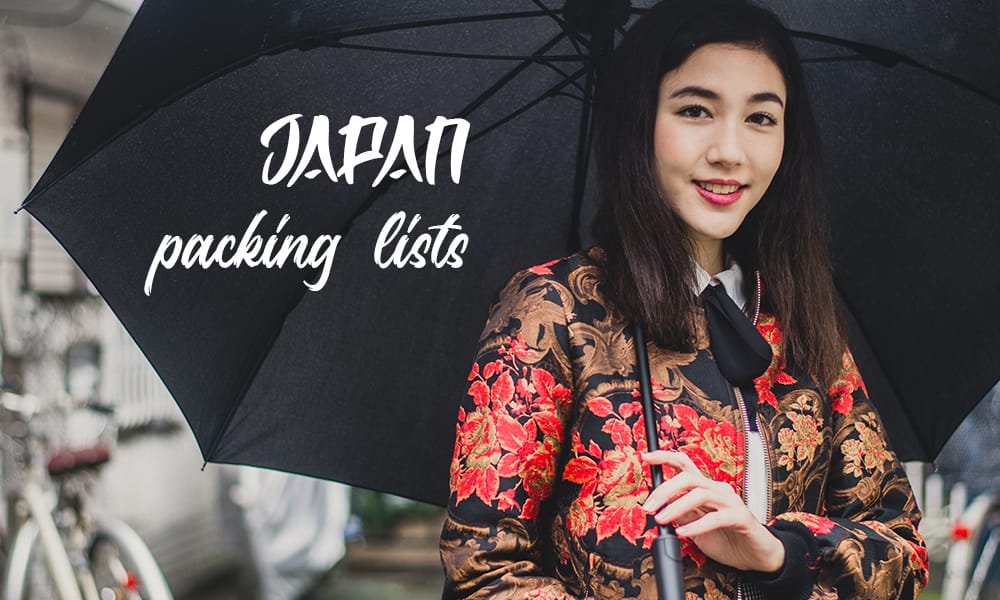
What to pack for Japan: ultimate Japan packing list
Here is your complete guide on what to pack for Japan. Choose the season you are visiting to get a complete packing checklist, a capsule wardrobe suitable for the season and advice on packing for Japan.
Travel essentials to pack all year round
- Travel Insurance : Don't forget to secure a reliable insurance plan before you jet off! be it lost luggage, unexpected health issues, or trip cancellations. Compare various insurance providers here .
- Valid passport (check expiry date carefully to ensure it is valid for the duration of your stay and make sure you have at least one blank page available)
- Copy of flight details, boarding passes and airline tickets
- Hotel reservation details, including hotel address (you will need the address of the hotel to fill out customs forms, make sure you have it handy)
- Visa (usually required for stays longer than 90 days. Check carefully if you require a Visa before you depart)
- Hotel transfers details (if you have pre-booked your hotel transfers ensure you have the details easily accessible)
- Cash, credit cards and traveler's checks
- ID (drivers license, social security number etc.)
- Travel eSIM with a data plan for your smartphone to stay connected.
In addition to these basics and to make your trip more comfortable, safe, and enjoyable, we've put together a list of 14 must-have items that you won't want to forget. From practical things like a travel adapter and a filtered water bottle , to fun extras like a portable Wi-Fi device and a neck pillow, we've got you covered with the Japan Essentials Checklist .
What to pack for Japan in Summer 2023
Tank tops | linen v-neck top | cropped button-up shirt | relaxed linen shirt | oversized striped shirt | v-neck shirtdress | feminine midi dress | ruffle-hem shirtdress | cotton-linen blend cardigan | stretched linen blazer | straight legged chino | off white jeans | denim shorts | white shorts | pull-on linen short | skinny belt | cross body bag | basket bag, summer japan packing list.
- Packable waterproof jacket
- Comfortable walking shoes
- 7 lightweight cotton/bamboo tops
- 2 lightweight sweaters
- 1 pair of heels
- Lightweight cotton trousers
- sleepwear (lightweight)
- Undergarments
- 2 dressy outfits
- swimwear (1 piece recommended over bikinis)
What to pack in fall for Japan
Fall japan packing list.
- Waterproof foldable jacket (choose one that folds easily, ideally with a travel pouch so you can store it in your bag)
- Optional : dressier trench coat/jacket for going out
- 1 Wrap/cardigan
- 3 Knits/sweaters
- 5 layering tops
- 1 pair of heels or ankle boots for going out
- Jeans (dark navy or black is recommended)
- 3 Mid-weight pants
- 3 dressy outfit combinations
- Undergarments (one per day is ideal)
- Socks (choose socks in good quality as you will be required to take your shoes off in many establishments)
- Activewear if you plan on working out
- Swimwear (check if required)
- woolen hat/ beanie (it can get quite chilly in some regions and a beanie won't take up much room in your suitcase)
- leather gloves (optional, check the forecast for the regions you plan to visit)
- Travel umbrella
- Foldable travel backpack or tote (to carry your daily essentials in)
What to pack for Japan in winter
Japan winter capsule wardrobe.
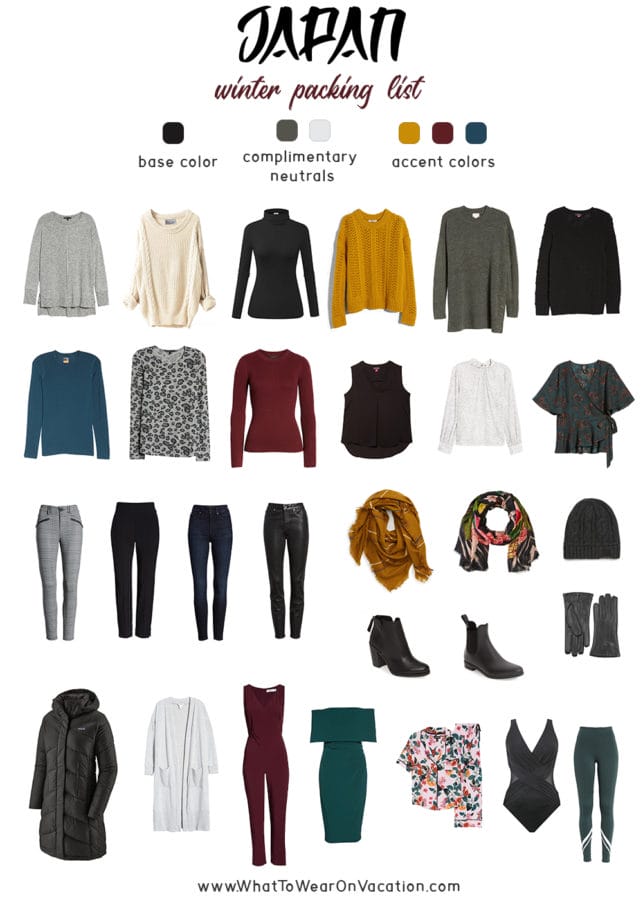
Winter Japan packing list
- Insulated, waterproof winter coat (we love the Patagonia Women's Down With It Parka )
- 5 winter knits (merino wool is a great option)
- 7 layering tops (choose some casual, breathable long-sleeve tops and some dressier options. Super lightweight merino wool LS tees are a great option)
- thermal under layers (optional)
- Winter hat (beanie)
- Waterproof walking shoes/boots
- Dressy heels (boots preferable)
- Jeans (clean denim jeans, in black or very dark navy, are more popular)
- Winter weight trousers
- Undergarments (aim for one per day)
- Socks (make sure they are in good shape as you will be taking shoes off on a number of occasions)
- Swimwear (check if your accommodation has swimming facilities)
- Activewear (if you plan to work out)
- Sleepwear (no need for anything too heavy)
What to pack in Spring for Japan
Japan spring capsule wardrobe.
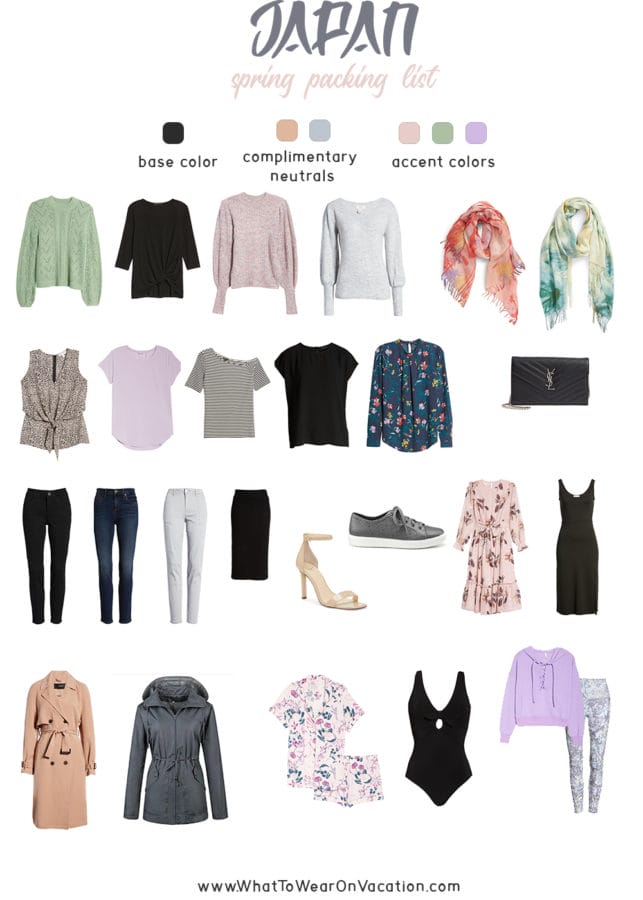
Spring Japan packing list
- Waterproof foldable jacket
- 4 lightweight sweaters (The early part of spring is much cooler than the later months. So pack heavier knits if traveling in March or early April)
- Lightweight Pants
- Undergarments (I like to pack one per day)
- Socks (check that your socks have no holes and are well maintained as you may visit venues where you are asked to remove your shoes)
- Swimwear if required (we recommend 1 piece over skimpy bikini sets)
- Sleepwear (lightweight)
Things to consider when packing for Japan
Your itinerary.
Your planned itinerary will drastically impact the items you need to pack on your trip to Japan.
- An urban-based vacation visiting local tourist attractions will require different clothing to a more adventurous itinerary focused on trekking and hiking. If you are planning on hiking, your packing list will be more geared around outdoor adventure. Check out our Capsule wardrobe for Hiking for some tips on what to pack.
- If you are traveling to Japan as part of a cruise, your packing list will vary slightly as there are additional dress requirements that are specifically related to cruising. You may be part of a cruise that has a form dress code in the evenings or specific costume requirements to consider. If you are cruising you can check out our advice on Capsule Wardrobes for a Cruise .
- If you are taking part in an all-inclusive tour package, check your itinerary carefully and consider what type of clothing will be required for each of the planned activities. Some tours may include fine dining experiences which will require dressy outfit options. Other options may include long walking tours in various terrains that may require specific footwear/ clothing.
- Also, consider the dress code related to your accommodation. Upscale hotels may have more formal dining options that may require you to bring formal outfit options. For men, this may mean you will need to pack a blazer.
Active weather forecast
The packing lists offered above are based on common trends in Japan for each season. However, it is very much worthwhile to check the weather forecast a short time before you visit, to ensure there are no unforeseen changes in the weather. This will give you the option of changing your packing list to suit the most recent live forecast.
What not to pack for Japan
- For a summary of banned items in Japan and an overview of the customs clearance process, you can check out the Japan Customs Page .
- As well as the important items banned by customs, here are some other items I would avoid packing for Japan:
- 2 piece skimpy bikinis (slightly more conservative 1 piece swimwear will be deemed more appropriate, particularly in hotel swimming pools)
- Overly revealing tops that show too much cleavage or your midriff (these will be frowned upon in many situations)
- Ultra-short skirts (above the knee is totally fine but avoid any skirts or dresses that are overly revealing)
- Socks that are worn out (you may choose to visit traditional venues that will require you to take your shoes off)
- Worn-out, scuffed or ratty looking clothing (shabby clothing is frowned upon in Japan, where a well-groomed appearance is appreciated. Aim for clean, well-maintained clothing and keep you well-worn tracksuits at home)
Handy apps and technology to consider
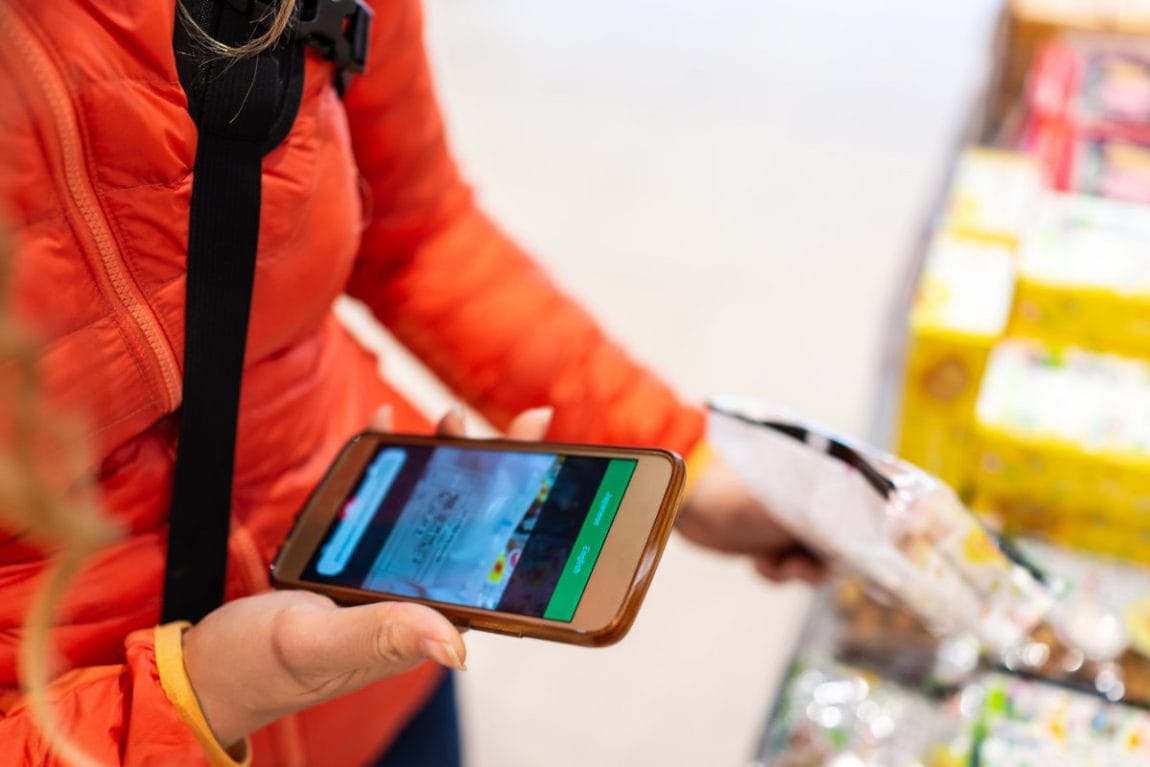
Download a reliable translation app before you depart.
- eSIM with a data plan for your smartphone
- Japan translation app downloaded to your smartphone (might come in handy when navigating your way around). Find one that also translates menus and signage, it will make your life much easier.
- Japan digital tour app (or guide book if you are old school). Having a tour map on your smartphone is such a valuable way to get the most out of a destination, particularly if you are planning a self-guided travel experience. Find one that displays points of interest and information on a map, for ease of use and finding your way around.
Make sure you also check out our guide on What to Wear In Japan for more general styling advice and pro travel tips.
Have you got something to add? Do you think there is anything missing or worth mentioning on the Japan packing list? Mention your top tips below.
© Copyright 2019 | What To Wear On Vacation | All Rights Reserved
Make planning your Japan trip that little bit easier
The Really-Useful Japan Packing List You Need For Your Trip
- Latest Posts
- How to Get Tickets for the New Nintendo Museum in Kyoto - 26 August 2024
- Should you Visit Kanazawa’s Ninja Temple? - 22 August 2024
- Step-By-Step Guide to Booking Your Tokyo Disney Visit - 18 August 2024
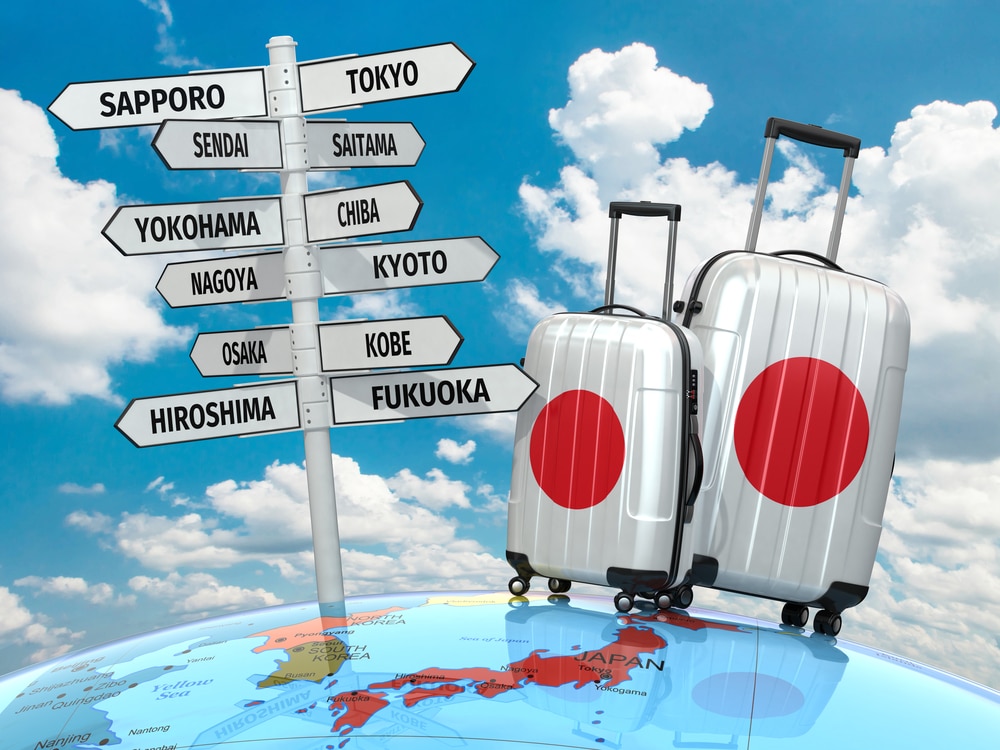
Article by Helen Foster. Disclosure: Some links in this post are affiliate links. See our Affiliate Disclosure.
How to Pack Light For Japan (the basics)
In the following post, we’re going to tell you how to pack light when traveling to Japan. It won’t tell you how many pairs of pants you need, but it will tell you generally what you’ll need, what you don’t, and heaps more tips besides. If you’re tight on time though here are the basics
Pick the lightest, smallest case you can get away with.
Plan on doing some washing – most hotels have laundries.
Bring your most comfy, easily-removed, shoes and decent socks.
Don’t bother with lots of toiletries, strong perfume, workout kit, swimsuits, stilettos, or hair straighteners (find out why below).
Smart casual is a good look for everywhere.
Now, for more details on all of the above, read on…
Choosing a Bag for Japan
Other useful luggage tips, footwear to pack for japan, take clean socks, what to wear in japan during the day, what to wear in tokyo at night, how many clothing changes to pack, how to pack for japan in summer, winter, spring, etc, what if you have a tattoo, wearing cosplay and other styles, packing toiletries for japan, carrying medications into japan, gadgets and gizmos, other stuff.
This is easy, take the smallest suitcase you can get away with. You’re going to be walking up more steps than you think, hotel rooms are smaller than you think – and, if you travel on the Shinkansen you’ll either need to book luggage space (see more on this in our longer post on the rules for taking luggage on bullet trains ), put your bag in front of your knees – or lift your bag above your head.

The Bag I Use
I just traveled for a month to Japan with a Delsey Clavel (that’s it in the foreground of the picture above and opened up in the picture below) which worked really well. I had seven dresses, a month of undies, two pairs of shoes, all my gadgets and toiletries, and still had room to bring back Mouse Ears from Tokyo Disney! and it’s super light to start with.
Check out prices here.
If you’re looking for larger hotels in Tokyo, check out our guide to Tokyo’s larger hotel rooms here.
If you like your space you might want to book a hotel with larger rooms – and to save you hunting for them, we’ve got lists of some top pics.
If you’re going to Osaka, then we also have a list of hotels with larger rooms in Osaka too.
Packing cubes deserve the hype. I hadn’t used them before this trip, I always thought they were just something travel bloggers tried to sell you to make money, but, no, they are brilliant – especially if you’re moving from hotel to hotel. Pick a set with lots of different sizes and I liked having woven straps to keep things in place like this set has .

If you take a backpack, make sure you take it off your back on trains or busy stations so you’re not hitting passing folk every time you turn to try and work out where the heck you’re going.
Luggage transport services are brilliant . If you do decide that the stairs are too much, ask your hotel about shipping your luggage from place to place.
If You Need to Buy a New Suitcase in Japan
If you’re planning to buy a lot of souvenirs, either pack a foldable bag that you can unfurl when you need it – or, you can pick one up in one of the Don Quixote stores you find everywhere.
If you’re looking for something a bit more substantial, Don Quixote can also help, but a shot called Ginza Karen is generally recommended as another inexpensive option. You’ll find it at 1-15-6 Ningyocho, Nihonbashi, Chuo-ku, Tokyo 103-0013.
We’re starting here because it’s the thing that can make or break your Japan trip. Get the shoes wrong and you’re going to be in trouble so…
Pack comfortable shoes. Well-worn in comfy shoes! This is not a time to test out a new pair – I once took a pair of plimsols I’d walked miles in before, but within two days of walking 20km, I had blisters the size of 50p pieces on my feet. It was not good.
Ideally, pick shoes that are also easy to slip on and off as you will be taking them on and off when you go into temples and some hotels and restaurants.

Good Shoes to Consider
Running shoes or sneakers are fine but if you want a more stylish shoe that you can walk in, have a look at Vionics which come highly recommended by friends who spend a lot of time walking around Walt Disney World. They have extra cushioning and support built into the sole which make them good for walking long distance.
Whatever you pick though, break them in.
How Many Pairs of Shoes Do You Need?
This is commonly asked in a lot of Japan planning groups – after all, they’re one of the clothing items that weigh the most and we’ve already discussed the value of packing light for Japan.
I’m in the ‘take two pairs of day shoes’ school of thought. If you do get a blister, or another sore spot, alternating your shoes will help take the pressure off it – and if one pair gets wet, you won’t have to put on wet shoes the next day.

Need Extra Planning Help?
Our Japan trip planners can help. Choose from our 62-page Japan Super Planner, which includes tips on everything from picking hotels to sightseeing. Or, try a specific planner like Tokyo Tips, Kyoto Tips, or the Rail Pass Planner. Find them at our Etsy Store . Use code BLG25 at checkout to get 25 per cent discount.
Consider a Shoehorn
Not something you normally pack, but, if your comfiest shoes don’t come on and off easily, or, if you have trouble balancing on one leg or bending to put a shoe on, this is going to make getting your shoes back on much easier and faster.
Some restaurants will have a shoehorn for guests, but if you have your own you’ll be in and out quickly wherever you have to remove your shoes. there’s a lightweight travel shoehorn here
What Not to Pack: Stilettos
Most Japanese women don’t wear skyscraper heels, they tend to stick with a low-heeled pump (or a massive platform!). Add that to the fact that you’re going to walk a lot and generally, you don’t need heels – even if you’re going to a nice restaurant.
If You Need to Buy Shoes in Japan
If you get there and something happens that means you do need to buy some more comfy trainers or another shoe, you might have problems getting shoes that fit larger feet – but try Zara, H&M, and ABC Mart.

If You Get Blisters
I got blisters on my latest Japan trip too – again, in a pair of shoes I’d worn a lot. I just don’t think you can avoid them when walking these distances.
The good news is that you can easily buy plasters everywhere – even 7-11 and Family Mart sell them. Mine got pretty bad and so I went to a proper drug store where I found the Band-Aid padded blister plasters and, surgical tape which meant I could keep all my plasters in place.
A picture of my Japanese care kit is here in case you need to show someone in the chemist!
Every day I started checking for hotspots and applying plasters and padding where it was needed!
The red thing is a foot roller to help fight aches and pains! Rolling your feet resets the rest of your body and I’m really glad I packed it! That one is a Carnation Pediroller from the UK, but you can find other brands online.
I also packed a spiky ball and ended up buying a brilliant massage stick in a shop called Hands, both can make a big difference with recovery if you’re walking for miles. Oh, and you HAVE to know about Japan’s magic leg patches . They’re so good I wrote a whole post on them.
These get their own heading because you will never go anywhere else in the world where your socks are more likely to be on display than in Japan.
And if you do have to take your shoes off, socks are more polite to expose than bare feet. If you’re wearing sandals that don’t allow for socks under them, carry socks in your bag to slip on if you have to remove your shoes.
You can rinse socks in your hotel room so you don’t need to pack heaps of pairs, but do keep them clean.
If You Need to Buy More Socks
Daiso or the 100 yen stores are a good cheap place to check. Again, ABC Mart can help with more sports-style socks.
Most Japan trip packing lists itemize things at this point – I’m not going to do that as I don’t know what you like to wear.

I travel with 5 lightweight,non-crease, dresses for a fortnight and add tights if it’s cold, and a pair of sandals if it’s hot but that’s probably not going to work for you – just as saying take a pair of leggings and two pairs of black pants with tops won’t work for me and so I wouldn’t attempt to give you specifics either – but, I will offer up general suggestions.
If You Want to Fit In
The most important thing when it comes to packing for Japan is that the clothes you choose are comfortable to sightsee in.
But, some people do want to also fit into the culture of the place they’re traveling to – and if that’s you, I’d say think smart casual when packing for Japan. People there do tend to look quite neatly put together.
Leggings are fine but maybe go for a longer top over them. Jeans and shorts are okay – but, again, maybe with a nice T-shirt or top rather than something more casual.
Also, note that while you’ll see short skirts and skimpy shorts in Tokyo (although these usually have tights underneath them), bare shoulders and cleavage are less common. And things are a bit more conservative in Kyoto.
A good way to get an idea of how to feel comfortable is to look at street videos on YouTube, that’ll give you an idea of what people wear locally where you’re traveling to. The Japan 4k account on YouTube has a good selection.
I’ve not noticed this myself, but some people say they have felt out of place in Japan wearing bright prints or patterns so maybe look at more neutral colors if you think that will bother you.
To be honest, chances are you’re going to stand out in some way on your trip. I’m blonde and that immediately makes me stick out no matter how I’m dressed, so don’t stress out too much about it.
Dressing for Temples and Shrines
Despite my saying most people don’t bare shoulders, for the most part, Japan isn’t like some other countries where you’re not going to be let into a temple if you have your knees or shoulders on show – however, you’re still visiting a place of worship, so it’s a good idea to keep clothing respectful on days where you’re visiting temples and shrines.
That means no short shorts or skirts and you should have your shoulders and any cleavage covered.
One temple that does have a dress code is the incredible Nanzoin temple just outside Fukuoka. They will turn you away if you’re not dressed correctly.
The Nanzoin Temple Dress Code
They ask that you have tattoos covered and that your clothing covers your upper body up to, and including your shoulders and your lower body down to your knees. Crop tops or anything else that reveals your stomach is also a no-no. See the full list of rules here.
Think Layers
No matter what time of year you’re visiting Japan, pack layers – you can pile on extra if it’s cooler or you encounter icy air conditioning. And vice versa.
You might be wondering if you need to bring extra clothes to dress up in Tokyo or Kyoto at night.
If you’re just going for drinks or dinner in an izakaya or local ramen shop then you can just wear what you wore during the day.
If you’re going to a more high-end restaurant, most other people there will probably be in business wear – shirt and trousers for men (jeans are not widely worn in the workplace) and a smart dress or trousers and a nice top that you might wear for an evening work function for women.
But do check if anything more formal is required as some places do require jackets – Le Chateau de Joel Robuchon and Collage at the Conrad in Tokyo are just two examples.
If there is a dress code it will usually be on the restaurant’s website, and often in English if it is a restaurant with an international reputation.
Remember, if it’s a traditional Japanese restaurant, even if you’re sitting in the Western dining room, you may be asked to remove your shoes.
One of the best ways to pack light for Japan is to pick outfits you can wear anywhere and more than once – remember unless you’re on a tour, no one is going to see you again, so it doesn’t matter if you wear the same thing 3-4 times on a trip (and even if you are on a tour, no-one cares!).
One concern you might also have is that some places in Tokyo still allow smoking, however, there’s something about the ventilation that means it doesn’t seem to be a problem in Japan.
If however, you do leave an Izakaya smelling of smoke, you can buy Febreze in Japan and a quick spritz should neutralize the odour.
Here’s what it looks like there. I’d suggest trying to find it in one of the big chemist’s stores as they sell all sorts of household products. If you can’t find it, show someone the picture and they’ll help you.
We also found a few of the hotels on our last trip (like the Citadines Namba in Osaka ) actually supplied a refreshing spray.

A lot of hotels also have laundry rooms where you can do washing, so if you get stuck, you can run a load through the machine (although this can cut into exploration time).
Maybe try doing this after a long day of sightseeing when you might not mind a night chilling out in your room or near your hotel. I also found it was a good way to slow down my over-enthusiastic planning and give myself a break.
They usually have laundry powder built-in (which is what the crossed-out bit means) so you don’t need to buy or pack that.
Or book a serviced apartment which usually have a washing machine. There are a couple of good suggestions for these in this post on the types of hotel in Japan .
What Not To Pack: Workout Kit and Swimsuits
Unless you are extremely fit or need to lift weights on your trip, chances are you are not going to get out for a run or visit the hotel gym on your trip. It’s not unusual to walk 15-25km a day while sightseeing, the steps mount up and you’ll probably be too tired to exercise as well.
Also, you won’t need a swimsuit unless your hotel has a pool. If you’re going to an onsen, or your hotel has an onsen, you will be expected to go in nude so don’t bother packing your swimming kit.
If you’re umming and ahhing about packing your kit, leave it at home!
For fear of stating the stupidly obvious, the type of things you need to pack change depending on what time of year you’re traveling – and also, where you’re staying in Japan.
Japan is a massive landmass and the weather differs hugely from end to end. What you might need in Nagasaki in winter is very different from what you need in Osaka, Tokyo, or Sapporo!.
Generally, the south of Japan is warmer than the north and so, you can get away with packing lighter in the south.

I went to Kyushu in February and got away with a long-sleeved t-shirt under a dress, tights and socks, a cardigan, a thinnish coat, gloves, and a scarf – and I live in Australia where under 20C is jumper weather.
But I was a bit chilly once I arrived in Osaka to fly home – and Tokyo during the same week was snowing. Further North was full-on ski season! Check the specific weather for where you’re traveling and pack accordingly.
What to Pack for Japan in Summer
If you’re traveling to Japan in Summer expect extreme humidity. You will perspire so you might want to take a few extra tops (or see my note below about the super-antiperspirant I always travel with).
You’ll find all sorts of products and gadgets to help keep you cool in Japan’s summer – from simple parasols to cooling sprays or even fans that you wear around your neck. If you’re struggling, head to a branch of Hands (a store that sells pretty much everything) and see what’s on offer.
June and July in Japan are also rainy so you’ll need to make sure you have a lightweight coat that’s going to keep you dry (but don’t pack an umbrella as you can buy them in any 100 yen store).
If you’re traveling in a rainy period, definitely pack more than one pair of shoes.
Or look at a very waterproof pair like the shoes and trainers from Vessi.
This is also one time when the Ziploc trick below can become very important.
What to Pack for Japan When It’s Cold
If it’s cold, you’re going to want layers – if you get to Japan and suddenly realize you’re freezing, head to Uniqlo.
Their Heattech range uses your body heat to create warmth but is small and light to pack – there’s a huge branch just by Shinjuku station. If you want to pick some up before you go, then check it out here.
Also, look for a fantastic piece of Japanese clothing called a Haramaki. This is like a little scarf for your middle and the theory is that keeping your internal organs warm heats the rest of your system.
I have one that I use when it’s cold in my house and I do notice my hands and feet get warmer. You can buy these before you go to Japan on Amazon – or pick one up there.
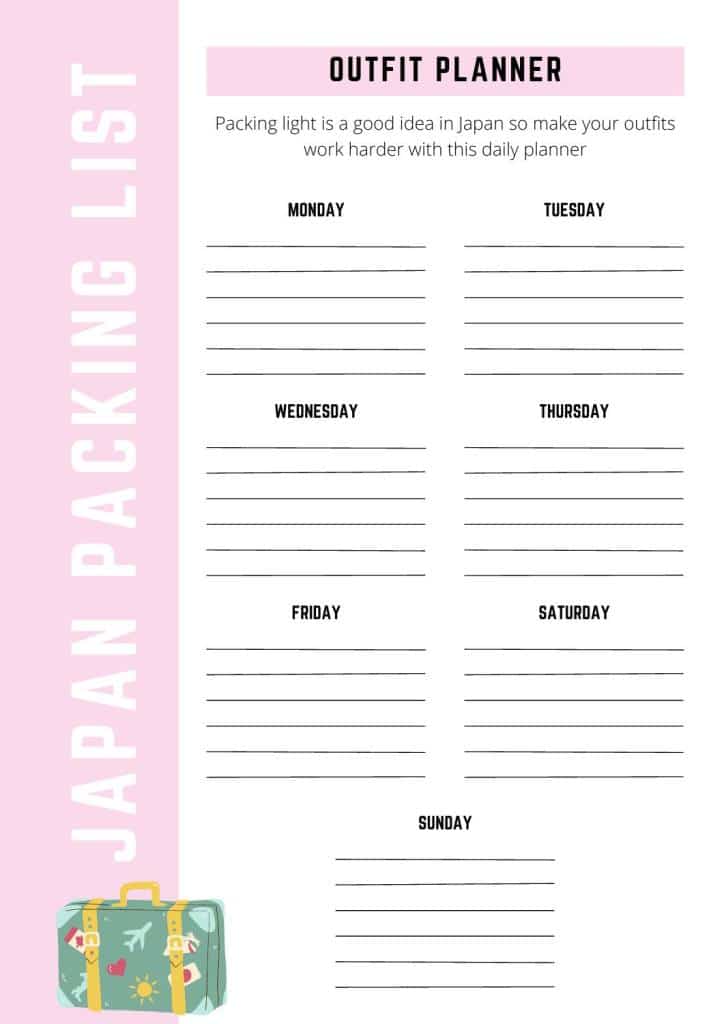
If You Need to Buy New Clothing in Japan
If you’re on the smaller size, you’ll be able to check out all the cool shops, but, if you’re larger than a size 12-14 (UK), you might find it hard to find large enough sizes in every store. Head to Western brands with names you recognize as they tend to stock larger sizes – again, that means Zara, Gap, H&M, or Uniqlo.
Local store Sakazen also offers more western-sized options -and has a ‘Big Size’ section for men.
The sizing thing can work in your favor – I once picked up a bargain skirt in French Connection in Tokyo because it was a size 14!
If you have tattoos you’ve probably read that you won’t be allowed in onsens or pools in Japan, but, when planning your Japan packing consider that you might want to cover them with clothing in some other places too.
Admittedly, Tokyo particularly is becoming more accepting of tattoos, particularly on those who are clearly tourists – when I visited Thermae Yu spa in Tokyo, they were trialing a system allowing female tourists to visit with tattoos, men could do so if their tattoos were a certain size and they showed their passports – but if you’re going to stay in a ryokan. some ban those with tattoos so you’ll need them covered.
Also if you’re visiting a temple, staying somewhere more rural, or out for dinner at a more exclusive restaurant, you might want to pack something that covers your tattoo (or use concealer or a plaster on a smaller tattoo) just out of respect.
How to Cover Tattoos in Japan
There’s a great post on dressing for tattoos in Japan from TaraMoss.com who has sleeve tattoos – and she’s a big fan of arm covers.
You can buy solid-coloured one s of these (usually used for outdoor sports) on Amazon or try these more dressy ones – you’ll also find these in Japan if you get there and start to feel a bit conscious of your tatts. Again, have a look in Daiso for a selection.
Japanese street style fashion is famous all over the world and the word Cosplay originated there so, you might be wondering if it’s okay to dress up in Cosplay or other more individual styles from Japan like Lolita or Gothic Lolita and whether you should bring your looks to get some amazing photos.

The answer for Cosplay is surprisingly, no. It’s not the done thing to wear Cosplay in public in Japan ( find a detailed post on this here ). If people are going to a convention, they tend to get changed when they get there rather than travel in costume.
As for other styles, It seems like it’s totally fine to wear Japanese styles, particularly in areas like Harajuku or Nakano.
Check the Tokyo Fashion site to see what everyone is currently wearing and find the latest shop openings (but I guess you already know that).
If you’re travelling light you might not want to pack your normal bottles of shampoo and shower gel and the good news is you don’t have to.
Japanese hotels are generally very well equipped – especially if they aim at business travelers who will travel light – and you’ll usually find shampoo, shower gel or soap, toothbrushes, razors, and combs in the room, or, by the front desk where you just pick up what you need.
I’m very fussy about conditioner, so I always take a tiny bottle with me, but I brought it back virtually full as the ones supplied in most hotels worked as well for my hair.

Unless you’re very fussy about your brand, you can either use what your hotel gives you or, pick up bigger products when you get there. However, saying that there are a few toiletries you might want to make sure you pack for Japan including…
Antiperspirant
Expats living in Japan say the local brands don’t work the same as the ones they are used to – and that will matter if you’re there in the humid months of June and July
If you’re keeping things light, have a look at Perspirex – it’s a tiny bottle but you only have to apply it every couple of days. It’s seen me through Japan visits and Australian summer trips – do NOT use it on freshly depilated skin though, I learned that the hard way!
Anti-Chafing Products
Another tip I learned from Disney forums, is if you’re on the heavier side, you might want to pop this on before you go out walking for the day as it can help stop rubbing that can cause painful chafing. You can buy it here.
A lot of people also recommend Gold Bond Medicated Powder
Also, look at anti-chafing shorts which you wear under your normal clothes
Hand Sanitiser and/or a small towel
As I explained in my piece on first-timer tips to Japan , one surprising thing you might notice is that you don’t always find towels in public bathrooms in Japan so bring something to wipe your hands on if you don’t want to be constantly wiping them on your clothes.
You can also buy these mini towels in Japan, they’re called Tenugui.
Even before you know what hit, the Japanese would wear face masks to protect others around them if they had a cold or sniffles, please do the same. Either bring your favourite from home, or, you can stock up locally.

What Not to Pack: Heavy Perfume
Some high-end Japanese restaurants like Nihonryori-Ryugin say that anyone smelling noticeably of perfume or aftershave will not be allowed in as they say it spoils the aromas of the food.
However, I also spotted this ‘no perfume’ sign on one of the izakaya in Memory Lane in Shinjuku on this trip.
Where to Shop for Toiletries
Don’t panic if you do forget something. Many hotels supply toothbrushes, combs, and mini tubes of toothpaste.
You’ll also find basic shampoo and shower gel. For anything else, you’ll find big chemist-style stores (a bit like Priceline, CVS, or Superdrug, depending on where you’re coming from) all over Japan and there’s always someone who can help you find what you’re looking for.
One essential thing you have to know about packing for Japan is that some medications are not allowed and others need you to fill in a form called a Yakkan Shoumei or sometimes you’ll see it referred to as a Yunyu Kakunin-sho.
You’ll also need one of these if you’re traveling in Japan for a longer period and want to bring more than 30 days’ worth of medication with you.
And it’s not just controlled or prescription medications either – medications that contain pseudoephedrine are banned which means things you might not think twice about packing normally, like Nurofen Cold and Flu, Sudafed and Vicks inhalers, are banned in Japan.
This document explains things simply.
There are the obvious gadgets and gizmos that you might want to pack like your phone for maps, your camera (if you still carry a separate one), and something to watch/read on the plane and then there are a couple of extra things to buy before going to Japan.
A Travel Adaptor
Japan uses a flat two-pinned plug, so any country will a different plug configuration will need an adaptor to make most items work. However, see the note below about things you might not want to pack even if you can make the plug fit.
If you forget, ask at your hotel reception or go to one of the big electronic stores like Bic Camera.
Phone Power Bank
If you’re using your phone as a camera, to help you get around with a service like Google Maps and a couple of useful apps like the train planning app Navitime ( see more about Navitime here ) or Google Translate, you might find your phone is running out of charge before you get back to your hotel at night.
A power bank lets you refuel on the run – I can’t be without mine in Japan.
Ideally, you’re looking for something that fits in a small bag or even your pocket.
I used this Anker one on my trip and it lasted really, really well – in fact, Mr Japlanease bought one halfway through our trip and had it delivered to his hotel as he decided he preferred this one to his one! I could get 3-4 full charges out of it before it needed recharging.

Multi-Port Charger
I also brought a multi-port USB charger as I was carrying a lot of devices, but, to be honest, I wouldn’t take it again when I’m traveling solo as I think I used it twice in a month – more hotels now have a couple of USB ports in the room which allows you to charge more than two devices at once.
However, if there are two or more of you in the room and you’re both trying to charge phones, Wi-Fi devices, tablets, or Kindles – it could be a good investment.
Pick the best one for your device configuration here .
A Note About Hair Straighteners in Japan
Japan’s voltage is 100V and this is lower than many other countries (it’s 230 in the UK, Europe, and Australia for example), I didn’t know why this mattered until I started seeing chatter on forums about packing hair straighteners.
Hair straighteners can take ages to heat up in Japan, and others, including some types of GHDs, won’t work at all. To work they’ll need dual voltage – to find out what that means, and what you need if you really want to take them, have a look at this guide to using hair straighteners in Japan

Hairdryers might also not function so well in Japan, so leave yours at home and just use the one in your hotel and expect it to take longer to dry (this is my hair – I’m the one on the right – I know your pain – here I just go out with it wet and it dries, but I won’t do that in Japan because I’d look like a hobo!).
US readers might not have the same issues as your voltage is closer to that in Japan (but you will still need an adaptor) but check the piece above to make sure.
Another option is to buy a straighter/hair dryer in Japan – Bic Camera sells them and you’ll find branches of this all over Japan.
If you want to check out brands – straightening iron is (apparently) this in Japanese ストレートアイロン but you can also type straightening iron into the search bar. And it’s pronounced su-to-rai-to-a i-ron
Hair dryer is this ヘアドライヤー but it’s pronounced very similarly so you should be okay.
Lastly in our packing list for Japan come a few other bits and bobs you might want to think about taking with you.
Wallet or Coin Purse
Japan is less of a cash society than it was – but you will need to have some cash on you as small restaurants, shrines and a few surprising places like Daiso don’t always let you use cards.
If you’re used to just flashing your Apple watch at everything you’re going to make sure you pack a wallet to keep your cash, change, and your train card.
If you do want to use your watch or iPhone to pay for things, you’re going to want to check out our digital Suica guide explaining how to put an IC Card on your watch or phone
You will also pick up a lot of change, a coin purse can come in very handy (again, Daiso or the 100 yen store is a good place to pick one up).
Currency Card
While you should always have some cash on you in Japan, a currency card like Revolut or Wise can help you with bigger purchases.
You can load yen onto them before your trip (making it a great way to save for your trip or take advantage of high exchange rates) and then use them as a debit card on your trip where people do take cards, or draw out cash at the ATM.
I used Wise on this trip and it worked well.
Another option if you don’t want to carry cash is to load your cash onto your transport card. See more about that in our post on where you can use cards in Japan – and where you might need cash.
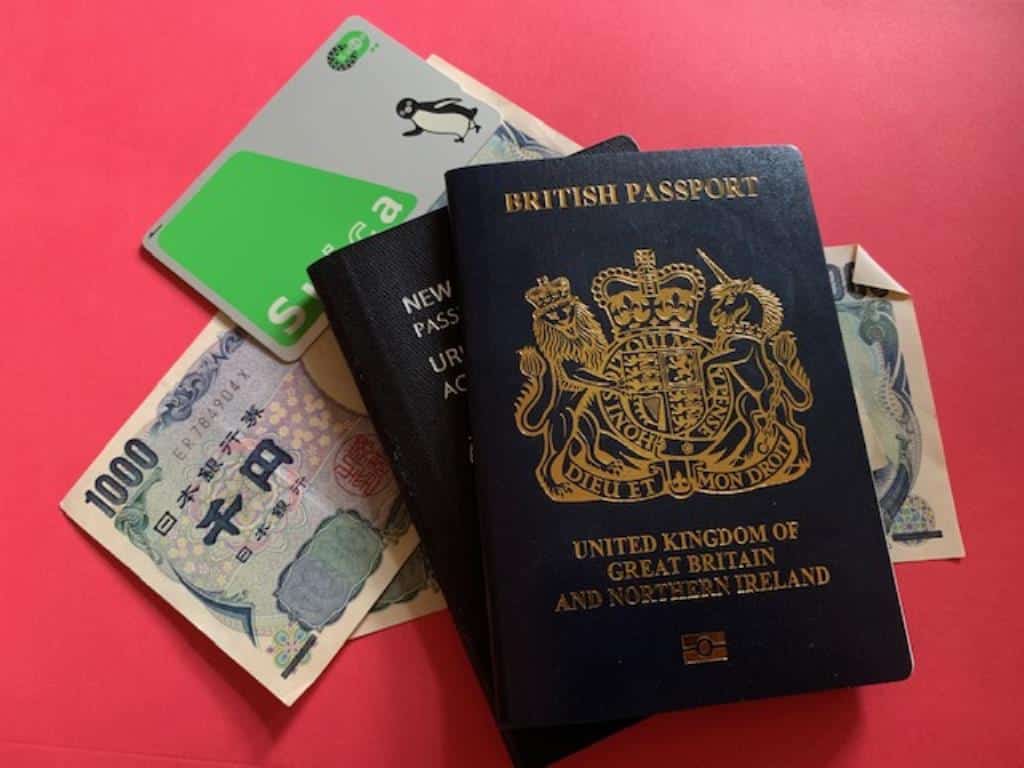
Passport Case
Again, not normally something to worry about as once you arrive somewhere your passport is (hopefully) normally residing in the hotel safe, but, it’s actually Japanese law to carry your passport at all times (and yes, people do get asked for it).
Plus, if you’re using the Japan Rail Pass you need to have your passport on you and a cover can stop it from getting bent and battered.
This one is stylish and neutral – or, if you want to feel like you’re traveling to Japan, pick a cuter one like the selection at Kakao and Friends .
Or, just bring a Ziploc bag and put your passport and rail pass in that together. This will also prevent them from getting wet if you (and they) end up in one of Japan’s notorious downpours.
Rail Pass Voucher
If you are buying a Japan Rail Pass (if you’re not sure yet, then read t his post on how to tell if the Japan Rail Pass is worth it for your trip ) you will be given an exchange voucher that you then swap once you get to Japan. Don’t forget it. You won’t get another one.

Hotel Address
It’s a good idea to have this saved on your phone, or printed out, in Japanese writing. It’s essential if you are going to get a taxi to your hotel but will also come in handy if you get lost.
SIM card or Portable Wi-Fi
If you want to use Google Maps, having your own wifi makes things so much easier. You can order these in advance and pick them up at the airport – or have them shipped to your house.
I used to prefer a SIM card and usually ordered mine from Klook to pick up at the airport as it means someone can help me set it up if I get stuck. You have to do a couple of strange things to set up a SIM card for Japan and the only time I did order one in advance from someone else, it didn’t work for about five hours.
If you prefer to use portable wifi, you can order that at the same time as your Japan Rail Pass here.
On my latest trip, I tried an eSim and this was really helpful as it meant I was connected to the internet the second I landed in Japan. I used Ubigi and was very impressed
If you’re not sure which is best for you, have a look at our post comparing all the ways to get online on your trip .
Business Cards
Okay, you probably won’t need these if you’re just on holiday, but if you are doing any kind of business while you’re in Japan, you will need a decent supply of cards.
So, there you have it – the totally specific list of things to take to Japan. If you’re still wondering about any other elements of what to bring to Japan then please join our Facebook Group and ask them there.
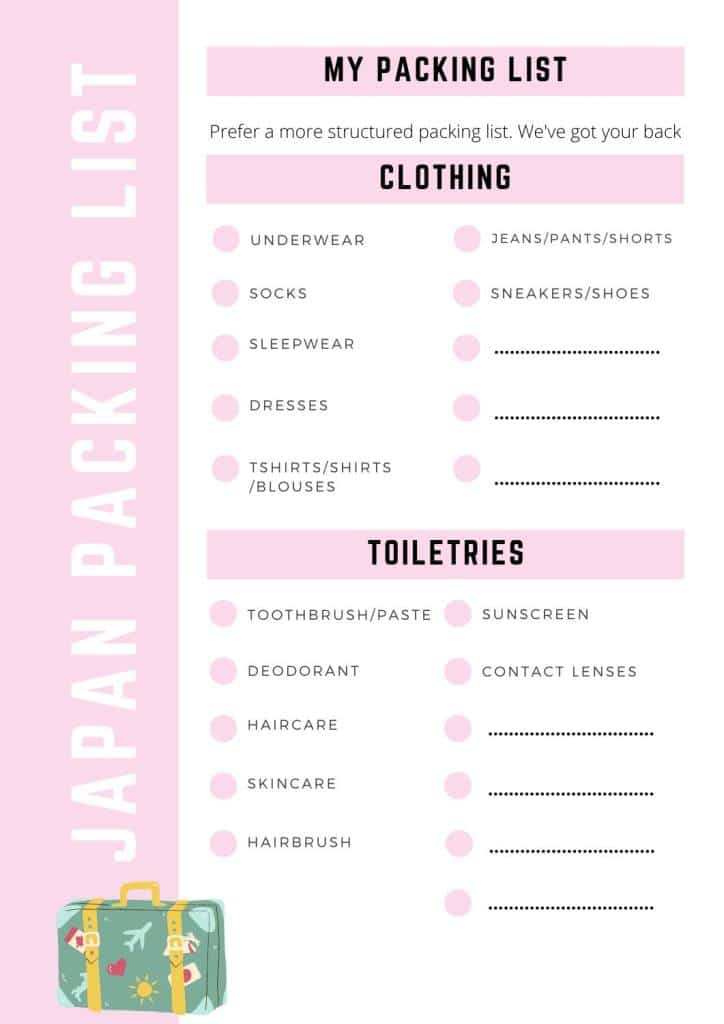
Oh, and if you like the little packing lists scattered around this post, they are one of the planners that we offer in the Japlanease Etsy shop – head over there to see more designs or to purchase our packing list.


Who Writes This Blog?
My name is Helen Foster, and I’m a journalist and author. My travel articles have appeared in publications including The Australian, RAC Horizons, Jetstar Magazine, Sainsbury’s Magazine, and more.
I’ve traveled to Japan five times before- solo and with my partner – and I’ve just returned from trip six in June 2023. So, everything here is pretty up to date.
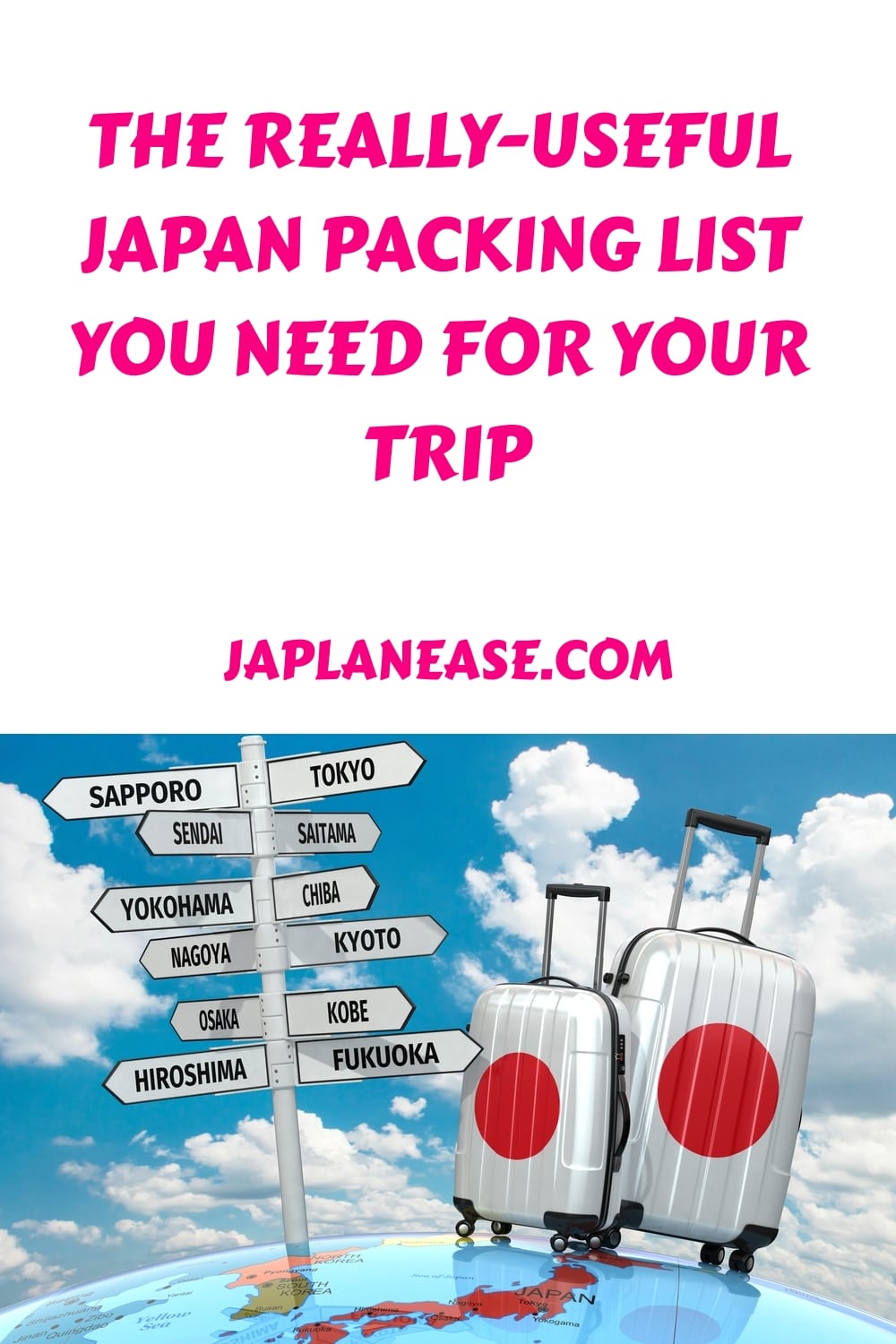
Sharing is caring!
- Meet the Team
- Our Manifesto
- Work with Us
- Budget Travel
- Personal Development
- Work & Travel
- United Kingdom
- More of Europe
- Philippines
- More of Southeast Asia
- More of South America
- More of Central America
- South Korea
- More of Asia
- More of North America
- New Zealand
- Pacific Islands
- More of Oceania
- South Africa
- More of Africa
- More of the Middle East
- Travel Essentials
- Travel Gear
Home » Asia » Japan » Packing List
Japan Packing List • 22 Items you NEED (2024)
Maybe it’s the juxtaposition of Japan’s mega-modern tech society and its culturally-rich ancient history that make the “Land of the Rising Sun” so alluring. Or maybe it’s the idyllic landscape that spans from rivers dotted with cherry blossom trees in Kyoto, to majestic snow-topped mountains in the Japan Alps, to gorgeous subtropical islands in Okinawa.
Whatever it is, Japan remains a truly beguiling travel dream destination.
If you are headed to Japan and wondering what to pack, you’ve come to the right place! I travelled Japan extensively and put together this handy guide on what to pack for Japan – covering your essentials with a top-22 needs packing list , tips on what to wear in Japan, an overview of conditions by season and how to pack for each and what NOT to bother packing.
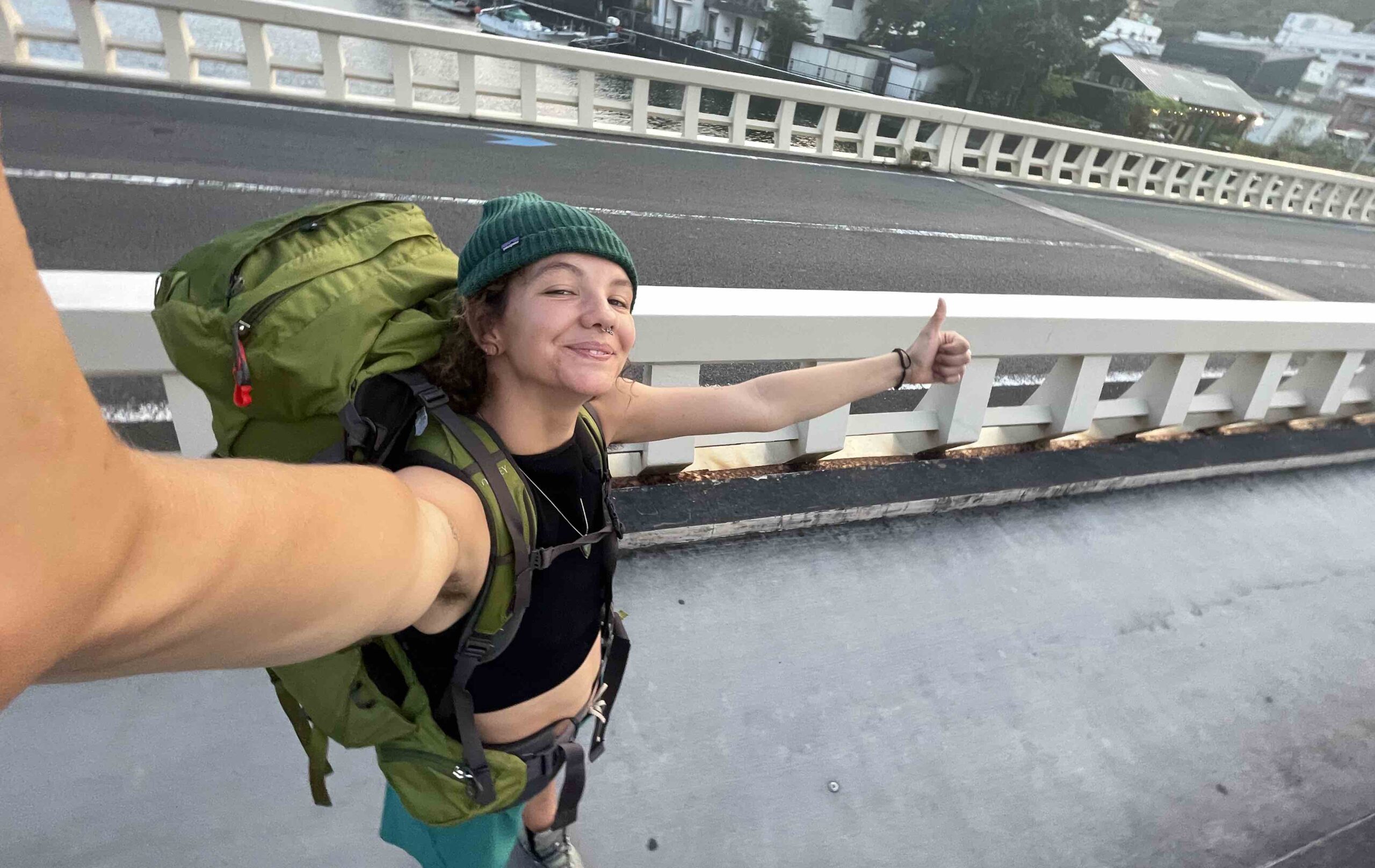
The Broke Backpacker is supported by you . Clicking through our links may earn us a small affiliate commission, and that's what allows us to keep producing free content 🙂 Learn more .

Unlock Our GREATEST Travel Secrets!
Sign up for our newsletter and get the best travel tips delivered right to your inbox.
The Ultimate Japan Packing List
Packing for japan checklist: personal gear, the basic stuff to pack for japan, final thoughts on what to pack for japan.
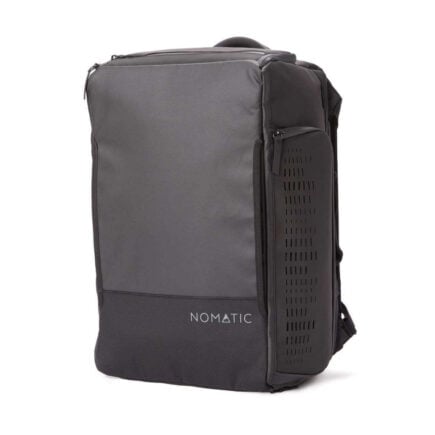
Nomatic Travel Bag
- Capacity > 30L
- Price > $289.99
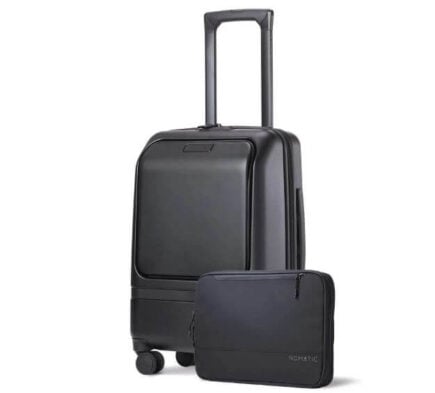
Nomatic Navigator Carry On
- Capacity > 37L
- Price > $549.99
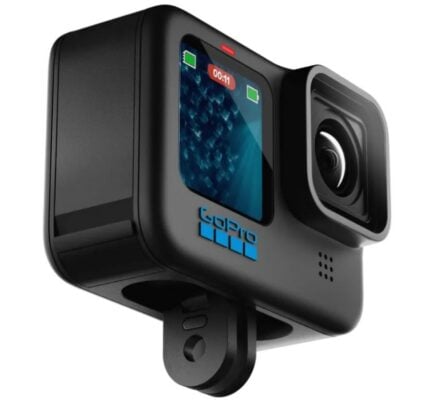
GoPro Hero 11
- Resolution > 5k
- Price > $349.99
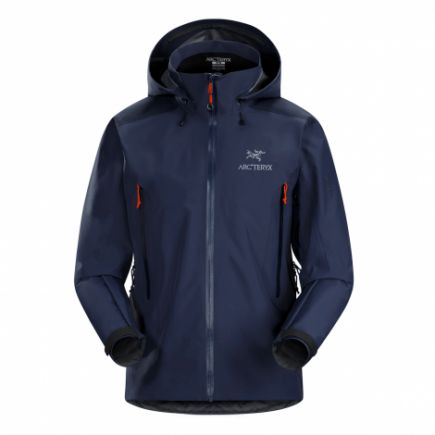
Arc’teryx Beta AR Jacket
- Price > $600

Insurance From World Nomads
- Price > Click For a Quote
So what are the Japan packing essentials, what should you bring to Japan and what to wear in Japan? Read on to find out.
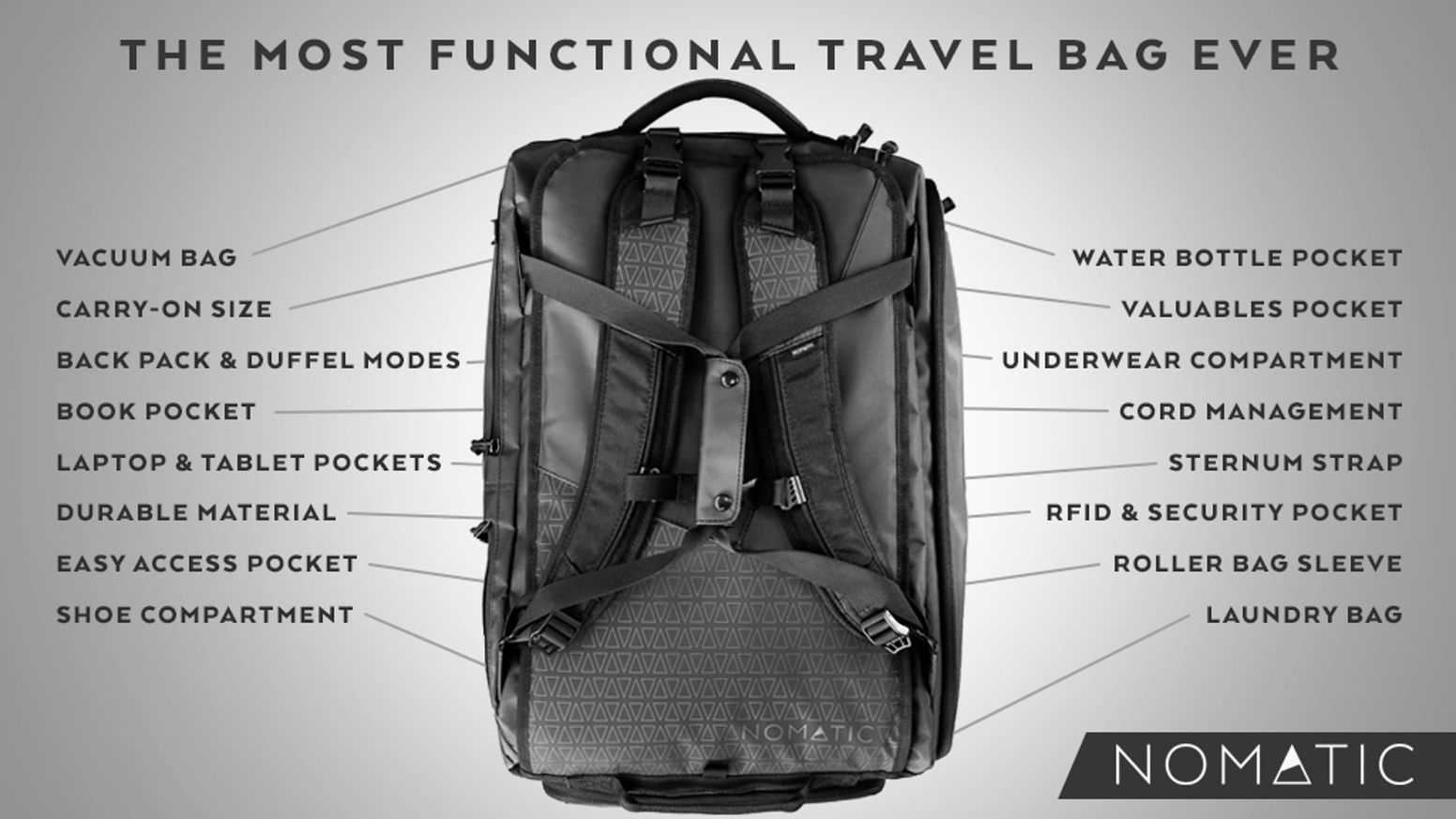
Best Backpack For Japan: Nomatic Travel Bag
If you’re packing for Japan, then you’re gonna need a bag right? Well for all types of travelers and destinations, our number one recommendation is the Nomatic Travel Bag .
The Nomatic travel bag covers every detail to make backpacking travel the best experience. Because of its smart design, it manages to provide loads of packing space in a convenient, carry-on size package! Its handy built-in pockets make plenty of room for all the necessities on your what to pack for Japan checklist – you’ll find separate compartments for important items like shoes, water bottle, electronics, underwear and socks. As an added bonus, there’s also an RFID-safe and cord management pocket.
You have a choice between backpack or duffel bag carry, and extra carrying comfort for your back thanks to its innovative strap system and detachable sternum strap. And its black, waterproof material is every bit sleek and modern as it is durable and tough. There is a reason why most Broke Backpacker staff swear by this backpack.
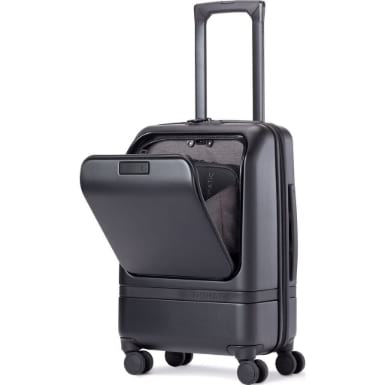
Best Suitcase For Japan: Nomatic Carry-On Pro
Backpacks not your thing? That’s ok. Our friends at Nomatic are back again with a great alternative to their badass Travel Bag; the Nomatic Carry-On Pro. Traveling light is maybe a good idea when visiting Japan as a space is kind of at a premium!
This suitcase is ultra-durable, sleek, and comes with a handy tech compartment for transporting your laptop and other electronic bits. Nomatic has been an industry leader when it comes to travel gear and that reputation is reflected in the quality build design and functionality of the Carry-On Pro suitcase.
Check out our Nomatic Carry-On Pro review to learn more about this epic suitcase. It will do for you Japan trip and many a trip to come.
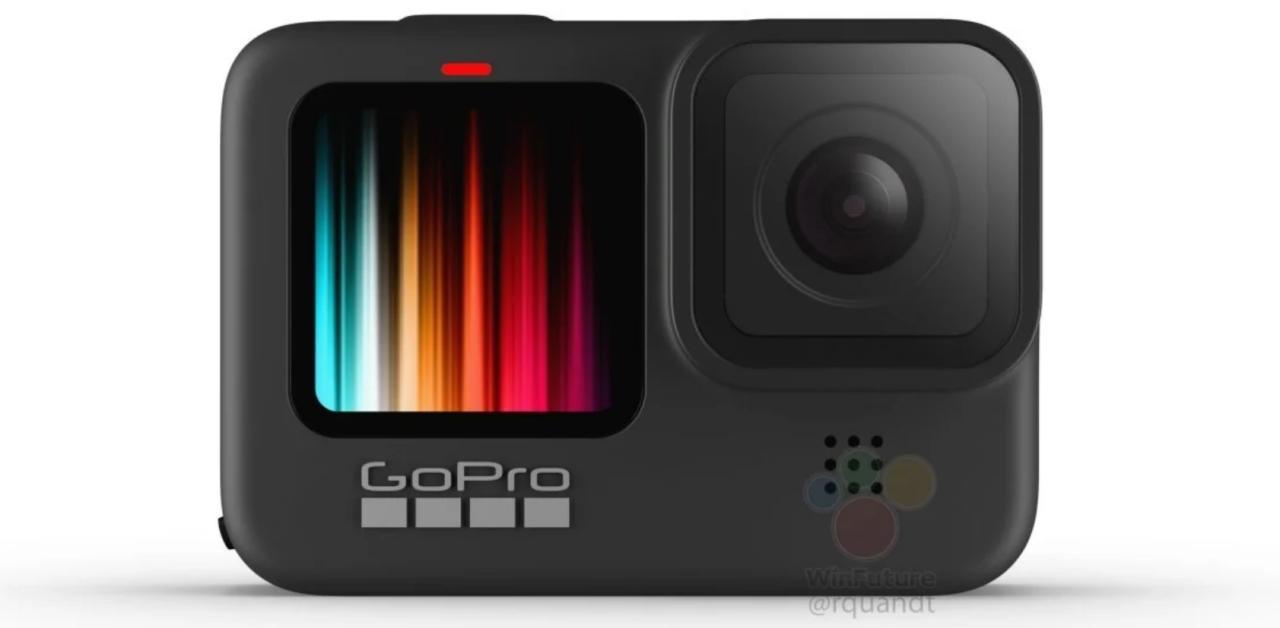
Best Camera For Japan: GoPro Hero9 Black
For most of us, our smartphones now feature cameras with stunning photo capabilities.
But… if you are an aspiring photographer who wants to take next-level photos and video beyond iPhone selfies, I recommend going with an action camera like the GoPro Hero9 Black .
It does deliver pro-quality video and gives you a bunch of a different angle options and shooting speeds to work with for photos (including a selfie-mode).
Think of a camera purchase like this as a long term investment that will have you capturing epic shots well beyond your time exploring here.
If you are looking for something cheaper for video specifically, check out these epic GoPro Alternatives .

Best Sim For Japan – HolaFly eSim
The good news about Japan is that there is extensive 4g and 5g Internet coverage, taxi apps and food delivery apps. The bad news is that your native SIM card will not work and so you will not be able to access any of this online goodness until you rectify that particular situation.
You can waste time hanging around Japanese mobile phone shops queuing to get a plastic sim or you can simply install an eSim onto your phone before you leave home. You just access the HolaFly site, choose the package you want, download it and off you go – you are online the moment you land at the airport.
So, if you’re looking for a SIM card for Japan , eSims are easier to set up and better than the environment than plastic sims. The downside is that not all phones are eSim ready.

Best VPN For Japan – PIA VPN
In case you don’t know this, a VPN is a Virtual Privacy Network. It is basically a piece of software or programme you run that essentially “hides” your IP address and therefore your computer’s location.
All travellers should use a VPN as they can be used to access blocked sites in countries that have internet censorship as well as enabling you to stream TV from backhome! Digital Nomads however REALLY need a good VPN as it provides extra protection against fraud, trackers and other dubious cyber-scum bags.
There are a lot of VPN providers out there but we use PIA VPN as they offer a solid level of protection at a very tempting price (if you buy the annual package its a bargain!)
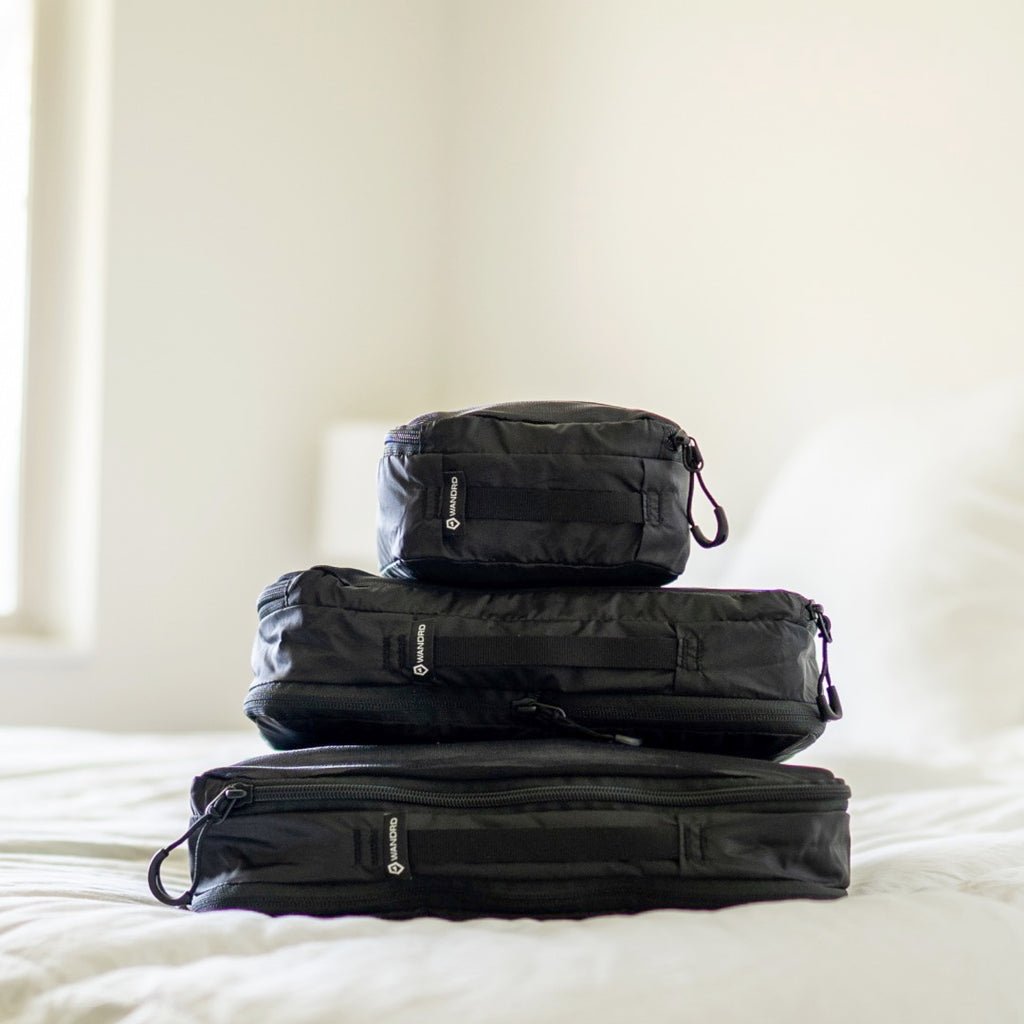
Packing Cubes For Japan – Wandrd Packing Cubes
In case you have never used them, packing cubes are little compression cubes that allow you to neatly pack clothes in in order to help facilitate better packing. They allow you to pack more stuff, and to keep it all better organised.
For the longest time, I thought that packing cubes were a superfluous indulgence, but boy was I wrong. Now I never travel without a few.
These ones from WANDRD are great quality and excellent value for money.
The weather in Japan does vary a lot depending on season. You do need to do your research as the winters can be snowy and the summers hot so pay close attention to local, up to date, seasonal forcasts.
The Japanese also take fashion very seriously so backpacker chic is NOT recommended. That said, don’t exactly expect to “fit in” as some of the local styles are pretty far out!
Want to save money on accommodation?

We got you. For reals.
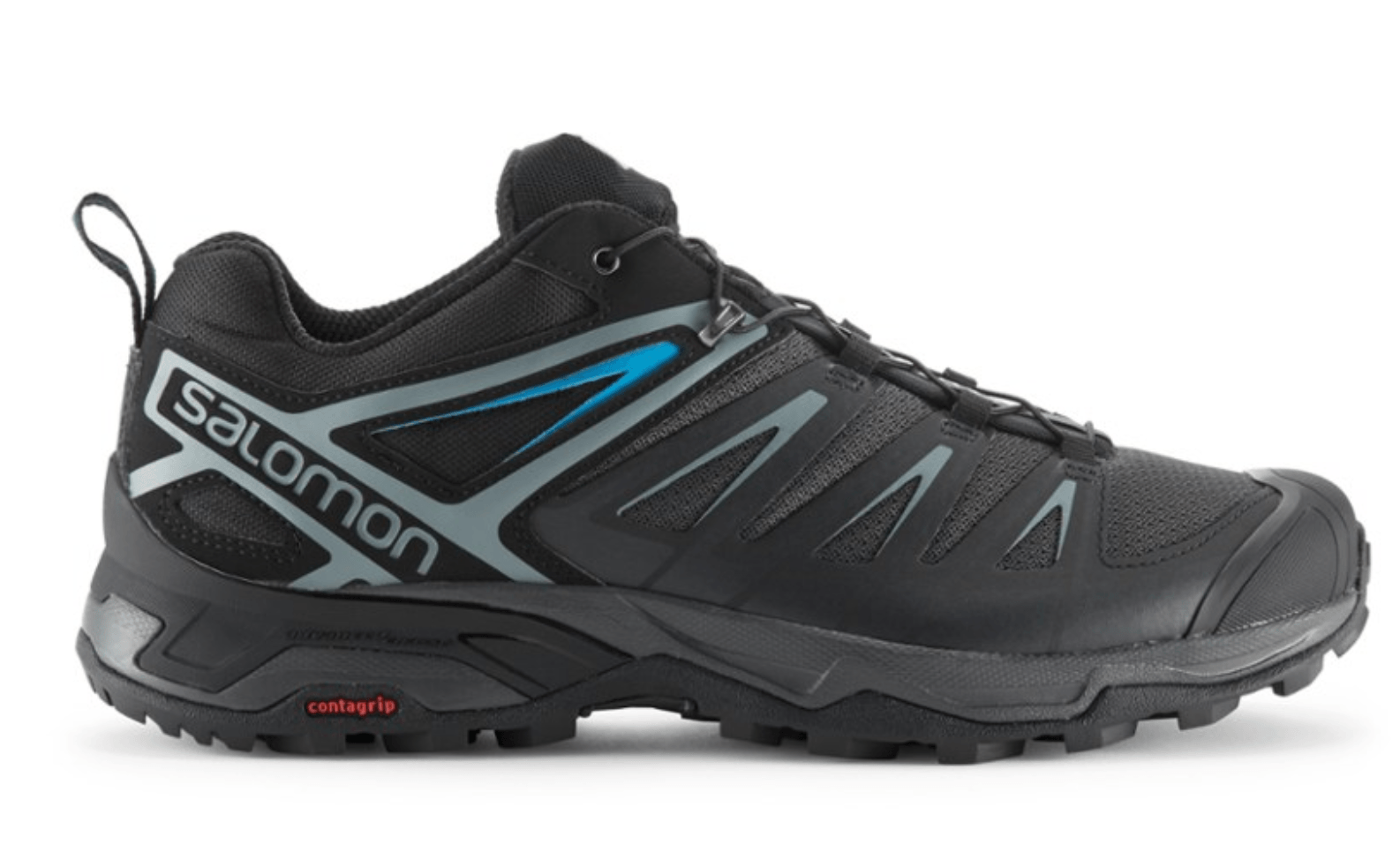
Good Shoes – Salomon X Ultra 3 Low Aero
Visitors to Japan have a tendency to underestimate the amount of walking that is part of the day to day experience. Whether you are sightseeing, city slicking, or headed outdoors, expect a lot of walking in your trip. As such, it is wise to pack a pair of comfortable walking shoes.
I admit that most shoes that are also good for hiking are not the most attractive pieces of footwear. But they are some of the most comfortable and deliver good ankle support for a long day of walking about town. I mean, your body is already going to be suffering enough from all of that Sake and Karaoke!
Plus, the mountains Japanese countryside offer excellent day hiking opportunities, so packing a pair of hiking shoes gives you the option (and eliminates excuses) to go head for the hills when the city becomes too much. You could even do Mount Fuji in these.
Check out the women’s Salomon X Ultra 3 Low Aero .
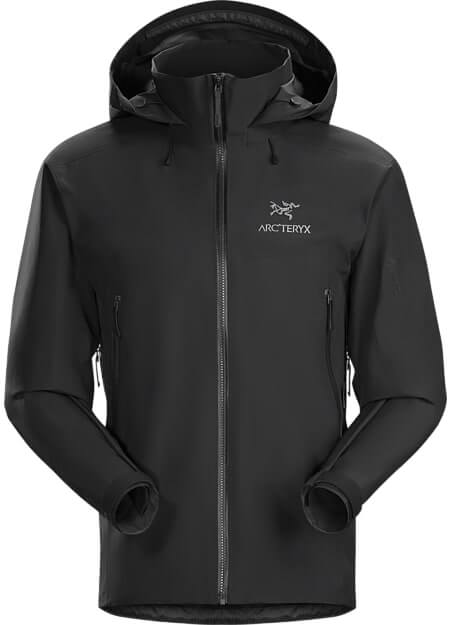
Good Rain Jacket – Arcteryx Beta AR
Japan can be very wet and a little bit chilly. Bringing a decent jacket is therefore a sound investment when you visit Japan.
There is no such thing as bad weather, only the wing gear for it. Don’t let a bit (of a lot) of rain ruin your trip and make sure you are ready with some top notch rain gear.
This is our pick of the many rain jackets we have tried. It’s reliable & stylish and looks good worn out in the mountains or in city bars.
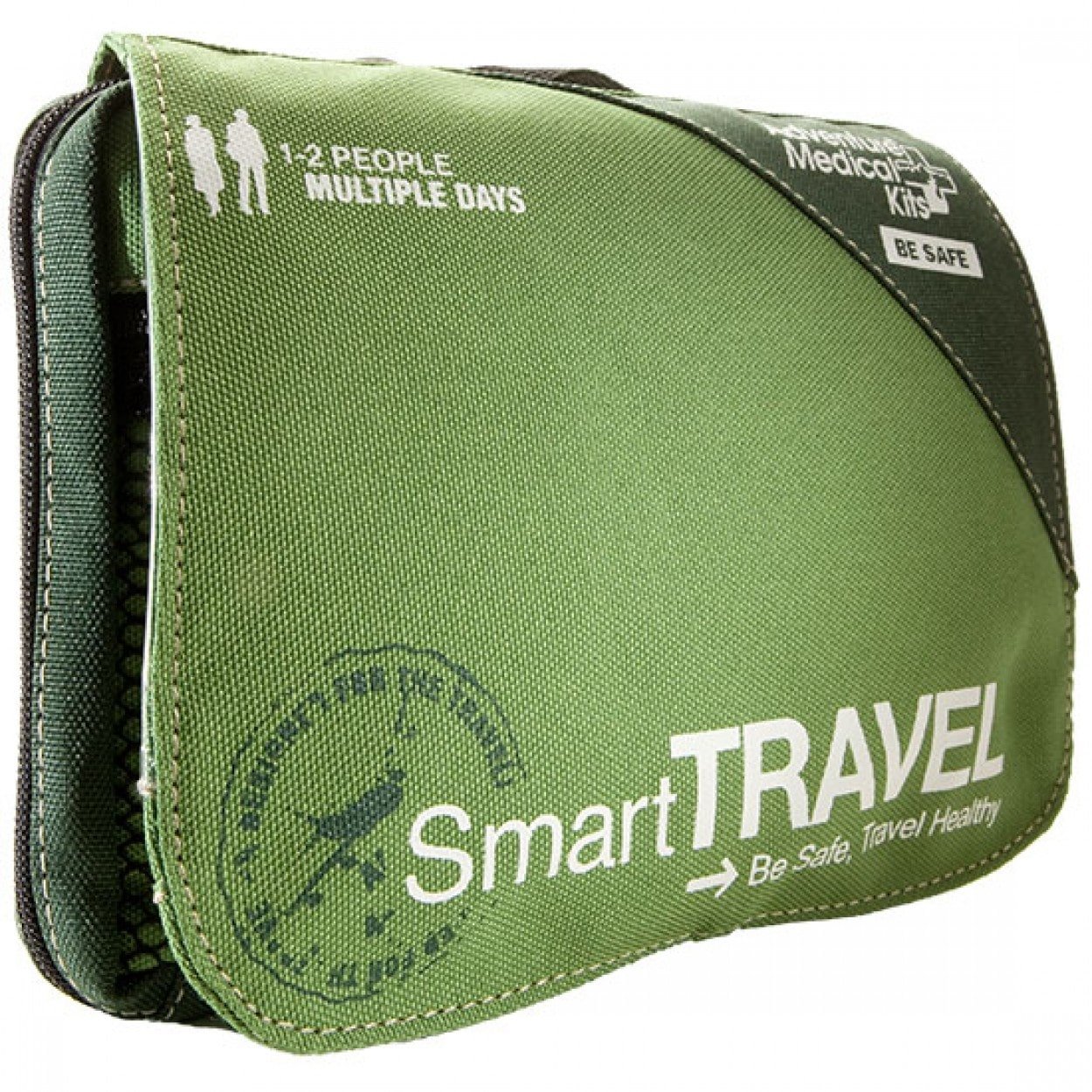
Travel First Aid Kit
You don’t need to tote around half a pharmacy, but a well-stocked first aid kit should be in all our backpacks. Stuff happens on the road and it’s inconvenient and embarrassing when you can’t manage small situations like a cut finger or hangover migraine.
You can tuck this lifesaver away in a forgotten pocket – and it’ll be there when you need it.
Tip: Add a few bits and pieces to the first aid kit after you purchase it, like extra headache medicine, any personal meds you need (like allergy pills), whatever you take to calm your stomach and a few more plasters.
Travel Insurance From World Nomads
ALWAYS sort out your backpacker insurance before your trip. There’s plenty to choose from in that department, but a good place to start is Safety Wing .
They offer month-to-month payments, no lock-in contracts, and require absolutely no itineraries: that’s the exact kind of insurance long-term travellers and digital nomads need.

SafetyWing is cheap, easy, and admin-free: just sign up lickety-split so you can get back to it!
Click the button below to learn more about SafetyWing’s setup or read our insider review for the full tasty scoop.
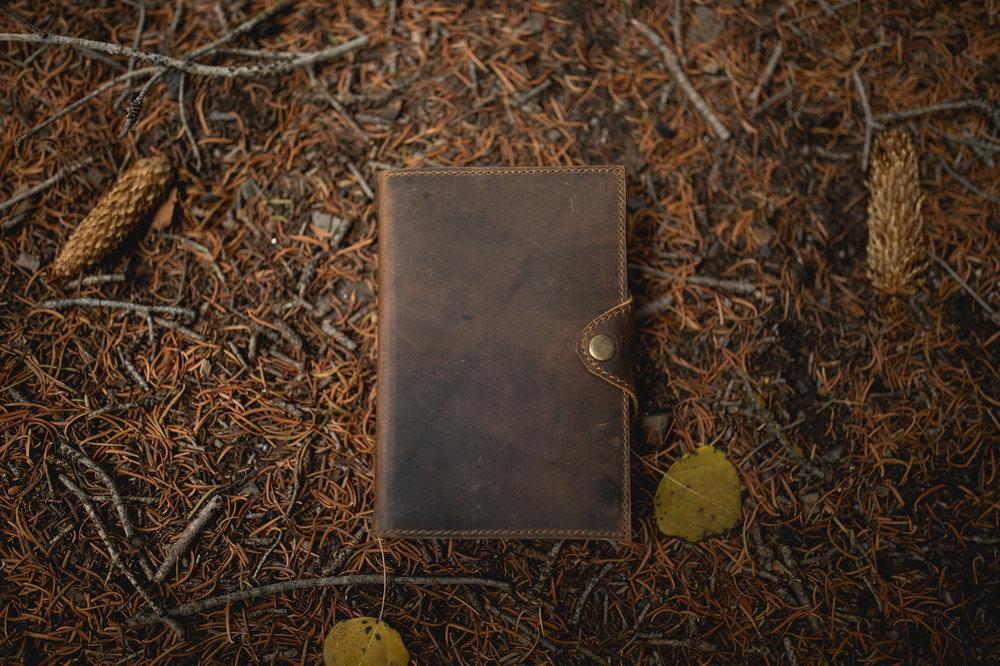
Planner/Travel Journal
Keeping a journal is one of the best things to do when traveling. The Drifter Leather Journal by Kodiak is our favorite, it works great for digital nomads and organized backpackers and can be used as planner or a dream diary – whatever you want!
Keep on track with your goals, travels and save those precious memories, especially the ones you do not want to share online. This one is bound in beautiful leather so it looks beautiful and will withstand life on the road.
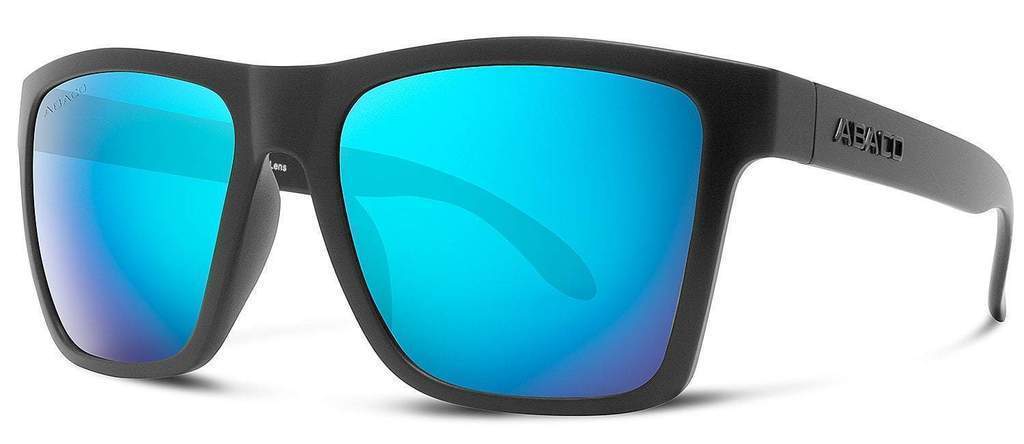
Abaco Sunglasses
A reliable pair of sunglasses is undoubtedly one of your Japan packing essentials. Our favorites are Abaco Polarized Sunglasses because they deliver on quality and style.
They’re built tough with triple-layer scratch-resistant lenses and trademarked Adventure-proof Frame Material. You can also customize them with your choice of lens and frame colors to reflect your own style.
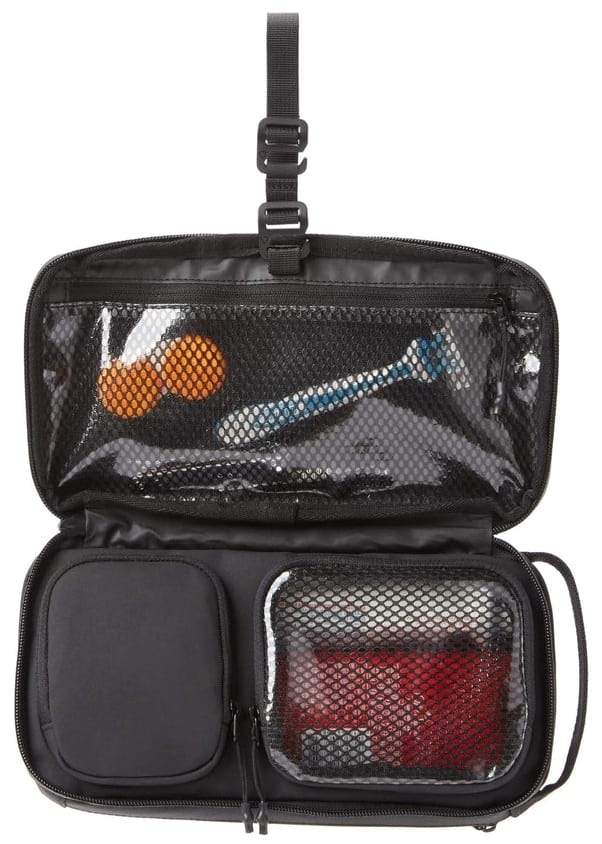
Hanging Toiletry Bag
Another backpacker/traveler favorite for staying organized is a hanging toiletry bag . It’s extremely helpful to have all of your accessories neatly gathered in one bag that you can hang for easy accessibility, especially when counter space isn’t plentiful or even available. A well-organized bag is worth having whether you’re tree whilst camping or a hook in the wall – it helps to have quick access to all your stuff.
Historically, I have been the guy who has my stuff all over the bathroom, so getting one of these things really changed the toiletry game for me. Plus they are not too expensive either. A no-brainer essential. No complete Japan packing list should be allowed to exclude a hanging bag!
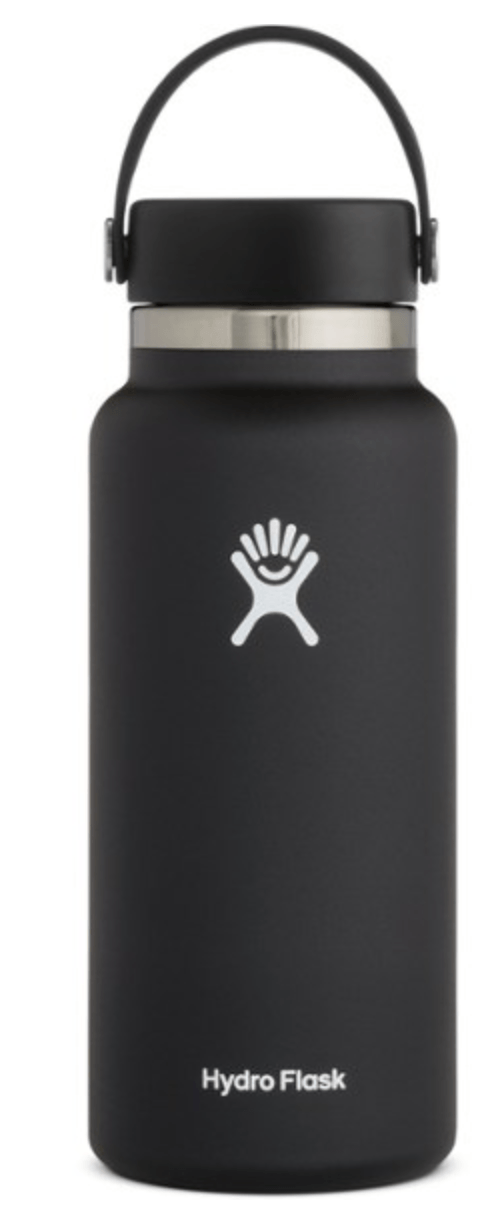
Waterbottle – Hydroflask Vacuum Bottle 32 oz.
Packing a reusable water bottle is probably the best thing you can personally do to combat single-use plastic bottle use whilst traveling. There is simply zero need to buy plastic water bottles. Tap water in Japan is safe and delicious. Fill up your bottle each time and carry it with you when you go out in order to avoid buying water throughout your day.
We love the Hydroflask Vacum Bottle for its quality and because it keeps cold water cold for many hours and vice versa for hot beverages. This bottle is the ideal water bottle to get not just for your Japan trip but for daily use. Please don’t be that person buying plastic water bottles. We are all judging you…especially mother earth.
If you go with the Hydroflask, you’ll probably never need to buy another waterbottle again.
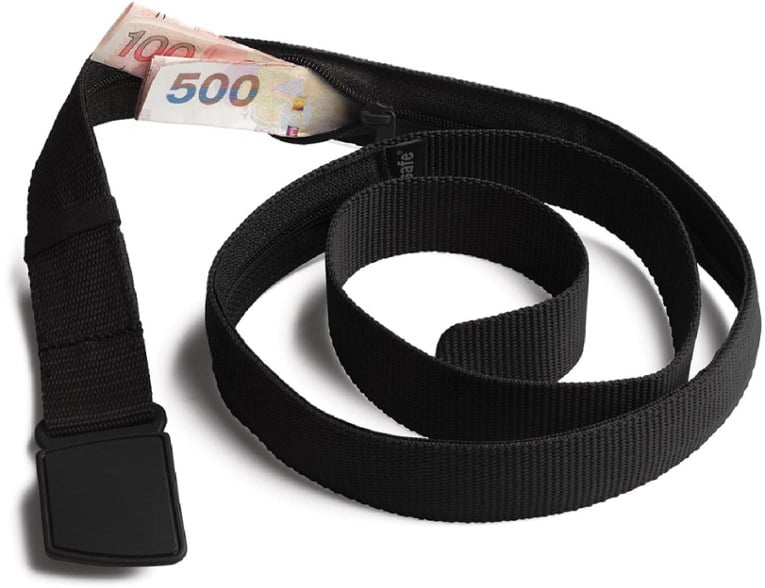
Money Belt – By Pacsafe
Japan travel is typically safe and crime and mis-haps are relatively low. However, shit can and does go wrong everywhere on earth.
Therefore it is always a good idea to use a money belt to hide your cash just in case something does go wrong.
Note that there are lots of cheap money belts on the market that will fall to pieces pretty much immediately. It is well worth spending a few bucks and picking up this one from Pacsafe instead.
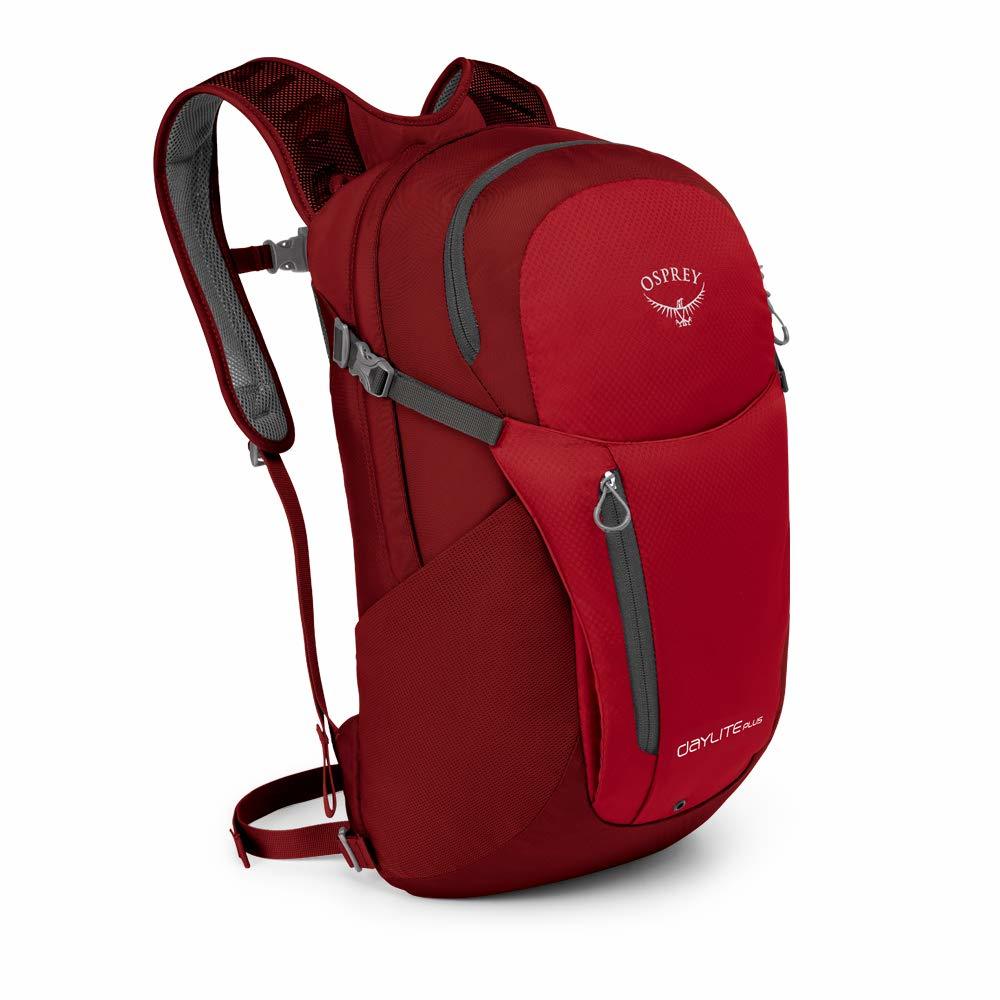
A Good Daypack for Hiking – Osprey Daylite Plus
If you’re planning on taking day trips or going for a hike in Costa Rica , you will need a daypack. They are great for carrying water, hats and gloves and for packing sandwiches for lunch. We love Osprey products and this daypack is our personal pick.
The Osprey Daylite Plus has a mesh-covered panel to keep your back cool and fresh by minimizing contact with the back of the pack itself and allowing air to get between you and the pack.
Check out our full review of the Osprey Daylite plus for more details.
On top of the essential items listed above, here is an additional suggested checklist of what to pack for a trip to Japan:
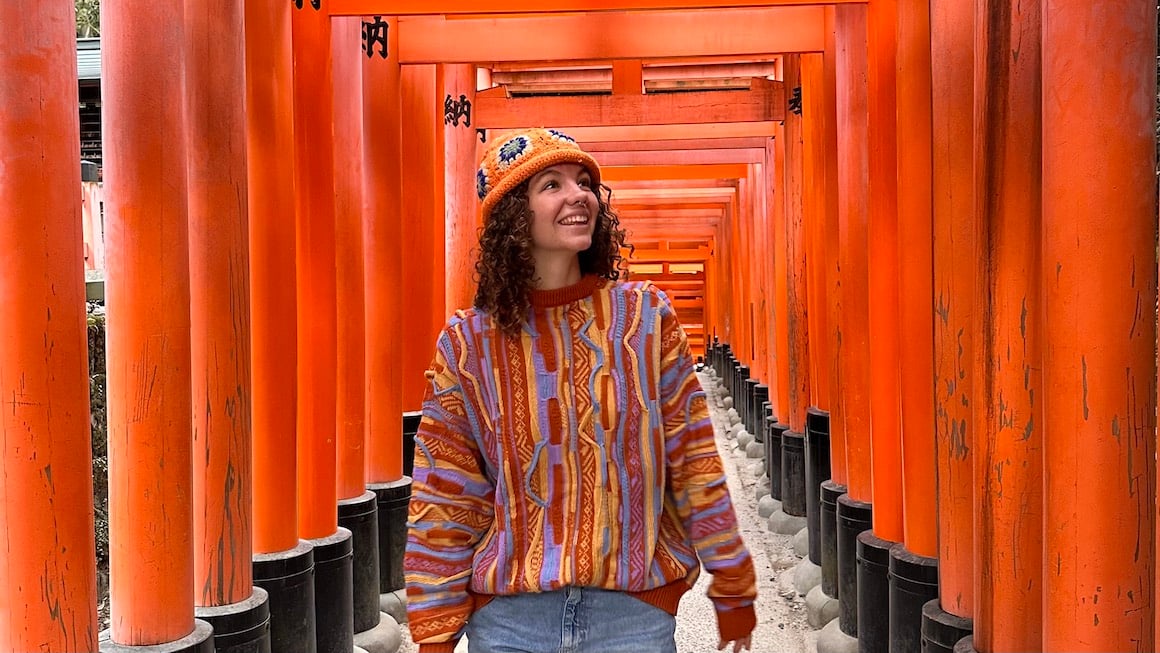
- A few pairs of comfortable pants/jeans
- 1-2 pairs of shorts (summer/late spring)
- A few pairs of socks
- (Sexy) underwear x 2/3
- Ladies: a few dresses, pants, outfits, or desired lady apparel for a night on the town. Whatever makes you comfy!
- Dudes: A few collard shirts or something half-way decent for a night on the town. Whatever makes you comfy!
- Smartphone with a good camera for photos if you are not bringing an actual camera
- Portable power bank for charging your phone on the go
- Phone charger
- Amazon Kindle for reading by the pool
- Copy of your passport just in case
- Cash (not too much, there are ATM machines everywhere)
- Packable Towel
- A travel adapter for Japanese outlets .

Our GREATEST Travel Secrets…
Pop your email here & get the original Broke Backpacker Bible for FREE.
You should be super excited about your Japanese adventure now that you’re equipped with all you need to know about what to pack for Japan – and we’re excited for you! If you feel overwhelmed – just breathe – and refer to our 22-needs packing checklist and our tips on what to wear and pack by the season you choose to travel.
Just keep the packing light and culturally appropriate, and you’re set. Add a touch of style wherever possible to fit in and integrate as much as possible into Japan’s rich and unique culture. Take advantage of all the country has to offer by taking time to get to know locals and blending in with their norms. And, surely, be prepared and stay safe for any situation.
And that’s it! The rest is a piece of cake. Now get out there and enjoy it!
Made it this far? You get 15% OFF to book a place to stay ! Offer valid exclusively for Broke Backpackers 😉

Share or save this post

TAKE CASH! Japan is believe it or not; not very credit card friendly!
Leave a Reply Cancel reply
Your email address will not be published. Required fields are marked *
Save my name, email, and website in this browser for the next time I comment.
Notify me of followup comments via e-mail.
Inside Kyoto
A Kyoto Travel Guide
Packing List For Japan 2024
Use my comprehensive packing list for Japan to ensure you’ve got everything you need to make your Japan trip hassle free.

Minimize your pre-trip stress with my comprehensive packing list for Japan. Travelling light is always ideal, and you don’t need to bring much with you to cover almost any situation in Japan. Where a product is mentioned below, I’ve linked to Amazon.com for reference (all links are affiliate links).
Travel Essentials For Japan
- Planning a trip to Japan can seem overwhelming. However, if you break it down into 10 steps, you’ll find that it’s pretty easy. See our step-by-step Japan Trip Planning Guide for essential tips.
- Passport: Make sure it has at least six months validity and one empty page.
- Visa: Many nationalities can enter Japan without needing to arrange a visa in advance, but it’s best to check ahead. See Do I Need A Visa For Japan for more details.
- Flight tickets: Even in this day of electronic ticketing, it’s helpful to have a paper copy to refer to and show airport staff. If you are still researching flights to Japan, check a flight comparison site as a useful way to compare multiple airlines’ flight times and prices
- Hotel reservations: Having a print out is helpful for hotel staff as well as for yourself. If the hotel provides an address in Japanese, this is useful for taxi drivers. Also, you’ll be asked to fill in your first night’s hotel address in your landing card before immigration, so a printout is handy. Book Japan hotels online at Booking.com and Agoda.com
- If you’re going to do a lot of train travel in Japan, consider buying a Japan Rail Pass. See my article Japan Rail Pass: Is It Worth It? for more detailed info. If you decide you need one, you can buy a Japan Rail Pass directly online .
- Credit Cards and Debit Cards: VISA and MasterCard are widely accepted in Japan – American Express not so much. Ensure you tell your bank before you leave your home country that your card may be used in Japan. Also bring an ATM debit card to withdraw Japanese yen from your checking account. See Getting Money In Kyoto for more information – it’s pertinent to the whole country.
- Make a copy of all your passport and credit card details: Use your cellphone to take photos of your passport photo page and the back and front of your credit cards. Email them to yourself in Gmail or other internet accessible email account. Now you have all the details and emergency numbers if you should lose your cards or passport.
- Wifi and SIM Card access: It’s easy to get your own data-only SIM card in Japan and also find public free wifi in Japan. Read our in-depth guide about Japan esims, physical sim cards and pocket wifi . See also our comprehensive guide to the Internet in Japan for tourists .
- Japan Maps: There’s still no quicker way to get a sense of the big picture than looking at a hardcopy map. For Japan, the best commercially available maps are made by Periplus. The Periplus Tokyo map is the best English-language map of Tokyo, and their Kyoto map is the best English-language map of Kyoto. Likewise, the Periplus Osaka map is the best English-language map of Osaka. If you want an all-country map, I recommend their Japan map . You will not find anything better in English.
- Guidebook: Having a real guidebook can be useful in tandem with online information – plus it’s handy to browse on the plane. My recommendations are Lonely Planet Japan for the whole country and Lonely Planet Kyoto City guide if you’re just visiting Kyoto and around. Yes, I’m biased, because I’ve worked on both books.
Travel Insurance For Japan
Considering travel insurance for your trip? World Nomads offers coverage for more than 150 adventure activities as well as emergency medical, lost luggage, trip cancellation and more.
Luggage For Kyoto
Japan is incredibly easy to get around with public transport that’s super efficient and well organized. A wheelie suitcase and day backpack will suffice for most trips, assuming you’re sticking to the cities not going overnight hiking or on other adventure excursions into the wilderness proper. There are storage lockers at Kyoto Station (and other stations) big enough to store a large suitcase for a day if you need to stash luggage after checking out of your Kyoto accommodation. If you need to store luggage for longer, there’s a luggage storage office below Kyoto Station.
Clothes For Japan
Depending on what time of year you go to Japan, it can very hot or quite cold, or somewhere in between, so it pays to think ahead. See my Best Time To Go To Kyoto page for a rundown of what to expect from the weather month by month in Kyoto – I’ve written similar guides for Tokyo and Osaka , too. Obviously, research ahead of time about the likely conditions before you arrive.
- The classic travel advice applies – wear layers and use breathable fabrics. Cotton and linen are good, as are more modern heat-wicking clothing fabrics used by UnderArmor and other sporting brands, especially in the summer months. These fabrics are especially good for underwear and designed for both sexes. Denim is not so good as it’s heavy and holds moisture. You are likely to be doing a lot of walking, so you want to be as comfortable as possible.
- Similarly, make sure you have some lightweight comfortable walking shoes . Unless you intend on doing some of Kyoto’s more demanding hikes , you really don’t need to bring heavy hiking boots etc. And, if you’re like me, you might be happy doing even those hikes in running shoes.
- A lightweight fleece is a great item to have even in summer months simply to keep you warm on airplanes and other travel situations where the air conditioning can be arctic and beyond your control.
- A quick drying towel packs down super small but can be extremely useful as an extra towel for hair drying etc.
- Pack everything using travel cubes – they organize your clothes so you can access everything near instantly.
Toiletries And Sundries
Having a well-stocked toiletries bag can save you a lot of inconvenience and discomfort wherever you travel. In Japan, you can restock from the ubiquitous convenience stores like 7-11, Lawson and Family Mart. For pharmacies, you will find large pharmacies all over town, particularly around train stations. They carry Japanese versions of most over-the-counter medicines and pharmaceutical products. If you speak slowly, you can usually get your point across when asking for help finding things.
- Shower gel, shampoo, toothpaste and don’t forget your toothbrush
- Sunscreen, sunglasses and hat, especially during spring and summer. It can get very hot. Be sure to get sunglasses that properly filter harmful UV light rather than just look good. For sunscreen, go for a 30 SPF or above.
- Painkillers (see important note below)
- Cold/flu medicine, lozenges for sore throats, anti-histamines for hay fever (see important note below)
- Tampons and sanitary pads
- Razors and foam or gel
- A travel First Aid kit , particularly plasters for blisters, cuts etc
- Decent toiletry bag to keep everything organised. The roll-up style you can hang from the back of a door is particularly useful.
Important Note Regarding Bring Your Own Medicines Into Japan
Please note that Japanese customs can be very strict regarding the importation of some relatively common drugs, including any opioids, psychotropics, tranquilizers, and certain antihistamines. They can also be strict regarding medical equipment like syringes. If you have any doubts, refer to the following links:
- Japanese Ministry Of Health: Information for those who are bringing medicines for personal use into Japan
- Embassy Of Japan In Australia Advice (links to PDF)
Electronics For Japan
- No doubt you’ll bring your cellphone so remember the charger and charger cable and also ensure you have a universal adapter so you can plug it into Japanese style plug sockets. Japan uses a two-prong plus without the third pin (the ground pin), so you will need an adapter if you want to use three-prong plugs. If you forget them, they are available at electronics shops in Japan.
- If you’re bringing a tablet or Kindle or laptop, same advice applies: remember the charger!
- You can easily get a data-only Japanese SIM card for your phone which will be much cheaper than roaming on your existing SIM although you can do that too. See our comprehensive guide to the Internet in Japan for tourists .
- Your cellphone is likely the single most expensive item you will have with you during your travels. Make sure it’s protected from drops and knocks by getting a robust cellphone case. The Otterbox range of cases are a good example of protective covers that will save a phone from falling on sidewalks, kitchen floors etc.
- Japan is so photogenic you might want to pack more power than just your cellphone camera. You can get add-on lens for your cellphone that provide zoom, wide angle and fish eye lens capabilities. Getting one of the Canon compact cameras is also worth considering if you want a dedicated camera.
Check Hotel Availability
Destination, check-in date, check-out date.

Long-Haul Flights To Japan
If you’re flying to Japan from the USA, Europe or Australia, you have some long flights ahead of you. (See Kyoto Airport Transport and Tokyo Airport Transport and Osaka Airport Transport pages for info on getting to and from Tokyo, Kyoto and Osaka airports). Make yourself as comfortable as possible with these tips:
- If you’re coming from the USA, have TSA approved luggage Locks .
- A travel pillow can make a big difference to your comfort and ability to get some sleep on the plane
- Having a passport cover to protect your passport and stash all your paperwork in while you’re moving through the airport is worthwhile
- Wherever you travel in the world, it’s wise to not keep all your cash, credit cards and other valuables in one place on your person. Separate them into different pockets and consider a travel neck pouch too.
- Cut down on your time going through security queues by minimizing metal items on your person. A belt with a plastic belt buckle can be a real timesaver
- The aforementioned lightweight fleece is good to have to keep you warm
- Airplane cabins dry out your skin and can irritate allergies: consider bringing anti-histamine tablets to avoid hayfever-like sneezing (although see note above re importing drugs into Japan) and also moisturizer to keep your skin from feeling dry
- Noise cancelling headphones are worth the hefty price tag to block out the airplane engines
- A Kindle reading device is a great way of bringing hundreds of books or use the Kindle app on your tablet or phone
- Audiobooks – Audiobooks are a great way to make the most of travelling time and also shut out the noise of airplane and airport environments. Audible offers a free trial and has thousands of best-selling audiobooks to access and download. See my list of my favorite books about Japan if you need some inspiration.
- TV Show Downloads – You can download a wide selection of TV shows and movies to your mobile device with Amazon’s Prime Video service , letting you watch them anywhere without any kind of internet connection – perfect for plane journeys. See my list of my favorite movies, TV shows and documentaries about Japan if you want some ideas on what to watch.
- It’s worth noting that Amazon sometimes gives away Kindle devices and noise-cancelling earphones on their Amazon Giveaways page. The Giveaways page has hundreds of offers giving away different items, some quite expensive, in return for a small task like watching a short video or signing up for a newsletter. However, many items have no requirement at all – you simply click a button and see if you won the item or not. Unfortunately Amazon Giveaways are only open to people with a USA shipping address but if you live in the US, it’s worth checking for some free stuff that might enhance your holiday.
Travelling with Kids In Japan
Japan is a great place to travel with children: It’s safe, clean and filled with fun things for children to do. Be sure to bring any medicines that children might need from home. Also, bring a couple of English books for them if you like to read to them before bed. If you forget, you can buy English-language children’s books at major bookstores in Japan, including Maruzen in Kyoto . For more details on travel with children in Japan, see our Kyoto with Children page.
Kyoto Vacation Checklist
- For all the essentials in a brief overview, see my First Time In Kyoto guide
- Check Kyoto accommodation availability on Booking.com and Agoda.com - often you can book with no upfront payment and free cancellation
- You can buy shinkansen (bullet train) tickets online from Klook - popular routes include Tokyo to Kyoto , Kyoto to Osaka and Kyoto to Tokyo
- Need tips on where to stay? See my one page guide Where To Stay In Kyoto
- See my comprehensive Packing List For Japan
- You can buy an eSim to activate in Japan or buy a data-only SIM card online for collection when you arrive at Tokyo's Narita or Haneda Airports or Kansai International Airport . You can also rent an unlimited data pocket wifi router
- Compare Japan flight prices and timings to find the best deals
- If you're making frequent train journeys during your visit, you might save money with Japan Rail Pass – see if it's worth it for you
- A prepaid Welcome Suica card makes travelling around Kyoto easy – here's how
- World Nomads offers simple and flexible travel insurance. Buy at home or while traveling and claim online from anywhere in the world
- Do you want help planning your trip? Chris Rowthorn and his team of Japan experts at Japan Travel Consulting can help
Kyoto District Map

- Central Kyoto
- Northwest Kyoto
- Northern Higashiyama
- Southern Higashiyama
- Downtown Kyoto
- Kyoto Station Area
- South East Kyoto
Disclosure: InsideKyoto.com is a participant in the Amazon Services LLC Associates Program, an affiliate advertising program designed to provide a means for sites to earn advertising fees by advertising and linking to amazon.com and amazon.co.uk. World Nomads provides travel insurance for travellers in over 100 countries. As an affiliate, we receive a fee when you get a quote from World Nomads using this link. We do not represent World Nomads. This is information only and not a recommendation to buy travel insurance.

Japan Packing List: What To Bring And Wear In Japan
By: Author Kris
Posted on Last updated: January 29, 2023
Great! You decided that you are going to do that epic trip to Japan. Just one thing though, is what to wear and bring to Japan to make your trip hassle-free.
Read it here in our complete Japan packing list
There is a really good chance that this post contains affiliate links. If you click one of them, we may receive a small commission (for which we are deeply grateful) at no extra cost to you.
Table of Contents
What To Pack For Japan
Use this complete packing list for Japan to ensure you know what things to take to Japan.
Japan Travel Essentials
First things first, these are the travel essentials for Japan. Make sure you can check these off before you continue with the other things to bring to Japan.
Our ultimate Japan travel guide.
The Official Stuff You Need To Bring For Your Japan Trip
Most countries require your passport to be valid for an additional 6 months, but not so in Japan.
In Japan, it just needs to be valid for the duration of your stay and it needs to have at least one empty page for the entry stamp.
You will probably not require a Visa for Japan.
That is as long as your stay is not longer than 90 days which is more than enough for most travel purposes.
Just to be sure you can check the official page of Visa-exempt countries here .
Flight Tickets
Immigration officials may ask you a proof of outbound flights.
Although they usually don’t request this it may be a good idea to carry a paper copy of your outbound tickets.

Check If Buying A Japan Rail Pass Is Worth It
Getting around Japan is very convenient with a Japan Rail Pass and as Japan uses an addressing system unknown to most other people you can use the help of a GPS to navigate the urban jungle.
Trains are the most convenient option to get around Japan.
Tourists can buy a Japan Rail Pass that allows them unlimited train rides for 1, 2 or 3 weeks.
This can give you some serious savings, certainly if you’re going to travel by train a lot. Check our comprehensive article about the Japan Rail pass to learn everything about the pass.
We explain how to find out if you will be saving money, how to buy the pass and how you can use it once you’re in Japan. Just note, you need to buy the Japan rail pass before you arrive in Japan.
Japan uses an addressing system based on districts and block numbers.
Except for Kyoto, that uses a combination of the Western and the Japanese system to make it even more complex, no street names are used.
Finding your way in mega-cities like Tokyo can be challenging without GPS.
There’re quite a lot of hotels that offer a free ‘handy’ smartphone but as not all hotels come with this benefit we seriously recommend to buy a local (data-only) SIM that you can use along with your smartphone to help you navigate the urban jungle.
Here you can find all info about the best tourist SIM card for Japan. You could also opt for a pocket WIFI device. The main advantage is that you don’t need to touch your phone. Here you can find more info on the best pocket WiFi rental for Japan.
Carry Some Cash
It’s not necessary to take huge amounts of cash as credit cards are widely accepted and ATM’s can be found in many places and most accept foreign cards.
We do recommend to carry some cash at all times.
On one rare occasion, we did encounter a train station that only accepted cash to buy tickets and no ATM could be found in that station that accepted foreign cards.
Quite a stressful situation as we were heading to the airport to catch a flight…. so to be on the safe side, make sure you have at least some cash at all times.
Make sure to bring anything you might need to authenticate your online transactions (eg. card reader) if you plan on using your cards online while you’re abroad.

Getting around Japan is very efficient with Japan’s metro system and trains.
But those train stations can be huge. Shinjuku in Tokyo is even the world’s busiest train station.
That means that you will be walking several kilometers with your bags.
That’s why we recommend either a backpack or a lightweight suitcase with wheels .
There’s no need to carry your luggage with you if you don’t want to. You can forward your luggage to your next hotel with the convenient Yamanote luggage forwarding service. Read this and many more in our article with tips for traveling to Japan for the first time .
Things To Bring To Japan
Here we list what to bring to Japan.
- E-reader : I think e-readers must be one of the best inventions of the last years :-). Before we used to carry at least 3 books each. They not only weigh a lot, but they also take a lot of space as well. We tried both Kobo and Kindle e-readers but Kindle is hands down the best, we both read on a Kindle Paperwhite .
- Chargers : Make sure you have all your chargers ( laptop , mobile phone, camera, kindle, …)
- Charging station : A USB charging station is handy with all those devices that charge on USB (even my trimmer charges on USB).
- Travel adapter : Japan uses Type A & B power outlets (similar to those in the United States and Canada). Make sure you don’t need an AC adapter. If you travel a lot you will be good of with a World Adapter .
- Power Bank : A Power Bank can avoid disappointment when your phone dies while you’re on the road.
- Photo camera . If you’re still looking for a camera the Canon EOS M100 is a very good compact and affordable camera.
- SD Cards : At least 2 SD cards. Things can happen so make sure you have at least 1 backup card with you in case your card fails during your trip. Take a backup every once in a while so you’re sure you don’t lose any pictures. Google Photos offers unlimited free storage for your pictures. We recommend Sandisk cards for their quality. The Sandisk Extreme Pro SDXC variant if you plan on filming or the slower budget variant, the Sandisk Extreme SDHC , if you will only use it to snap pictures.
- A local SIM card will keep you connected wherever you go in Canada. You can buy one in a local electronics store like Yodobashi & BIC Camera. Or you can order one upfront that will be waiting for you in your hotel upon arrival. Ordering online is possible on Klook and Bmobile .

What To Wear In Japan
Wondering what to wear in Japan? Unfortunately, there’s no easy answer as a lot of things to take to Japan will depend on the season you’re going.
Here’re our suggestions for each season.
What To Wear In Japan In Spring
Spring is an excellent season to visit Japan as early in spring the cherry blossoms will start appearing in Southern Japan.
They start blossoming in the South and gradually make their way Northwards.
The exact blossoming period is different each year.
For more info have a look at our Japan Bucket List article and we also list the best Sakura spots in Tokyo . (Sakura is what the Japanese call the cherry blossoms)
The temperatures start rising in March and in April and May you have pleasant temperatures during the day but chilly evenings as soon as the sun sets.
The cherry blossoms are lovely but if you suffer from hay fever make sure to bring along your allergy medication to fully enjoy them.
Japan Packing List Spring
- T-shirts , preferably in a breathable fabric like cotton.
- Long sleeve shirts
- Light jacket
- Light sweater as it tends to cool down rapidly as soon as the sun sets
- Both long trousers and short trousers . We didn’t expect we would need them when we were there in April but we could have used a pair of short trousers.
- A pair of shoes that flips on and of easily
- Sunglasses and sunscreen . We particularly like polarized sunglasses because of the increased visual comfort and we picked a sunscreen with SPF50 and a broad spectrum for a good protection

What to Wear in Japan in Summer-Japan Packing List Summer
The temperatures continue rising in summer.
By the end of May, the rainy season starts and announces a period of hot and humid days.
The rainy season ends by the end of July but the days continue to be hot and humid and generally unpleasant if you’re not used to this kind of weather.
Japan Summer Outfit
- Compact travel umbrella . You won’t have a problem buying an umbrella in Japan but these compact models can come in handy for future trips.
- Insect repellent : mosquitos are not that much of a problem in the cities but if you go to the countryside or places like Hokkaido you’re better off prepared
- T-shirts , preferably in a breathable fabric like cotton or linen .
- Comfortable shorts , skirts and long trousers in thin fabrics .
- Zip-off pants are always a great option as well.
- Swimwear: if you are planning on going to the beach or swimming pool, remember that the typical Japanese onsen (public baths) are taken naked
- Sun hat , sunglasses , and sunscreen . We particularly like polarized sunglasses because of the increased visual comfort and we picked a sunscreen with SPF50 and broad spectrum for a good protection
- Light sweater

What To Wear in Autumn in Japan
Autumn is another lovely option to discover Japan. Colorful autumn leaves , known as Koyo in Japanese, draw just as many visitors in autumn as the cherry blossoms do during spring.
The best time to view the colorful foliage is subject to weather conditions but you will find several sites that try to give predictions.
Overall the best period to see the famous fall foliage is mid-to-late November.
It starts to get cooler by the end of September.
October offers pleasant temperatures slightly above 20 degrees Celsius.
November tends to be somewhat cooler but thanks to the clear blue and sunny skies it is still a lovely month to travel.
What to Wear in Autumn in Japan
- Both long trousers (no denim) and short trousers .
- Light Jacket
- Lightweight fleece , for the colder evenings, certainly towards the end of the season
- Travel scarf
- Both long trousers (no denim) and short trousers . Zip-off pants are always a great option as well.
- Sunglasses , we particularly like polarized sunglasses because of the increased visual
- Sunscreen , we picked those with SPF50 and broad spectrum for a good protection

Winter in Japan
The Winter months are low-season in Japan.
Temperatures range from cool to cold, there may be some snowfall in January and February but the snow usually melts as soon as it falls.
You could opt to visit Japan in Winter to avoid the crowds but the best seasons to visit Japan are Spring and Autumn.
What to Wear in Japan in Winter
- You can choose to dress in layers but a warm and insulated jacket could be better in cities where you will often be going in and out of buildings. It’s easier to just remove your jacket each time you go inside instead of multiple layers of clothing. We love the insulated Jackets of Point Zero for men and the Zshow Down Jacket for women .
- Mittens will be great to keep your fingers warm but aren’t practical at all when you need to grab your train ticket or want to take a picture. That’s why I’m now a big fan of high-tech gloves that allow me to use my mobile phone without taking off my gloves. Fingerless gloves would work as well of course.
- Sunglasses . We particularly like polarized sunglasses because of the increased visual comfort
- Lip balm , since we discovered Burt’s bees it’s our favorite brand
- Thermal underwear is ideal to keep you warm when you spend many hours outside in the cold.
- Jeans and/or warm trousers
- Lightweight walking shoes : The good news is that while you’re discovering those mega-cities you will have no problem to reach those 10,000 steps a day. So you better take a pair of comfortable lightweight walking shoes on your trip.
- Footwear that slips on and of easily . Many establishments in Japan require you to take off your shoes. Ryokans, (some) restaurants and other places with tatami floors are just a few. We took our shoes about 15 times on and off in 2 hours when we were visiting the cultural village in Takayama. It’s also common to take off your shoes when entering someone’s home. That’s why wearing shoes that slip on and off easily is a huge plus.

Other Japan Packing Tips
Travel cubes , or often called packing cubes, are containers made of fabric used for packing clothing.
They come in all shapes, colors, and sizes and will help you organize your bags .
Instead of digging through the whole bag of a suitcase to find that specific shirt you’re looking for you can now just grab the cube you need.
By rolling your clothes into cubes you will also minimize wrinkles .
Lastly, cubes will slightly compress your cubes and can be nicely stacked so you will manage to fit more into your bag .
Travel comfort
Flights aren’t as expensive anymore as they used to be but the comfort onboard has reduced at least as much, maybe even more. That means, more than before, you have to take matters in your own hand to ensure a comfortable flight. Here are a few things that can help.
- Noise-canceling headphones : The noise-reducing feature of noise-canceling headphones compensates for the monotonous hum of the aircraft engines. It helps me to sleep, or just to relax when I want to listen to some music. If you close your eyes you can completely forget you’re on an aircraft. The Bose earphones are generally recognized as the best.
- Travel pillow : A travel pillow doesn’t take up much space but can make a big difference for red-eye flights where you want to get some sleep.
- E-reader : A Kindle e-reader will keep you occupied reading for hours. That flight will be over before you even knew it started. 🙂

Japan Travel Insurance
Last but not least… As you might expect health care in Japan is excellent but it comes at a high cost. Make sure you have some sort of insurance before you leave for Japan.
We never had anything serious happen on any of our journeys around the world but you know what they say, better safe than sorry…
Here is a complete post on choosing Japan travel insurance.
Other Japan Travel Tips
- If you are traveling through Japan, our Japan travel guide will help you plan your trip.
- If you are starting your Japan trip in Tokyo take a look at our Tokyo articles. Here you will find where to stay in Tokyo, the best places to visit in Tokyo , a detailed Tokyo 2-5 days itinerary and a complete guide to Tokyo’s public transport.
- If you are planning a 3 week Japan itinerary, you will find a lot of information here. if you have 2 weeks to spend in Japan, take a look here.
- If you are heading to Osaka, take a look at our 2-day itinerary and where to stay in Osaka article. If you are wondering what to do in Osaka at night, take a look here.
- If Kyoto is on your Japan itinerary, take a look at our detailed Kyoto itinerary and find out what you can do in Kyoto at night.
- If you are looking for some fun activities to do in Japan we can recommend a Japanese cooking class or a night walk in Gion.
Le Travel Style
by Courtney Delfino • a San Diego based travel + lifestyle blog inspiring you to travel in style
Japan , Packing Guides , Travel · Last Updated: May 15, 2024
Your Ultimate Japan Packing List: Essentials for an Unforgettable Trip
A complete japan packing list: essentials for an incredible trip.
So you’re visiting Japan and need guidance for an Ultimate Packing List? Get ready for an unforgettable experience because Japan awaits! Unlike any other destination, Japan boasts a captivating blend of culture, stunning natural landscapes, vibrant cities, and a culinary scene that will tantalize your taste buds endlessly. Over the past few years, Japan has skyrocketed in popularity as a travel hotspot, and it’s not hard to understand why.
Embarking on a journey to Japan is exciting, but proper planning and smart packing are essential to ensure a seamless and enjoyable adventure. In this blog post, we’ll dive into the excitement of planning your trip to Japan and emphasize the importance of packing wisely. We’ve curated a comprehensive Japan packing list that covers everything you’ll need for your trip. Let’s make sure you’re well-prepared for the journey of a lifetime!
While all opinions and recommendations are always my own, my content on this blog post may contain affiliate links for hotels I’ve traveled to, tours I’ve completed, and products I recommend. This means I get a small commission (at no additional cost to you) if you book a stay or purchase a product after clicking one of these links. As always, I am thankful for your support to continue offering free resources.
Essentials to Pack for Japan
First things first, let’s cover the essentials. Start by ensuring you have all the necessary documents meticulously organized. These include your passport, flight or train tickets, credit cards, hotel reservation details, travel insurance documents, and any required identification (we mainly used our passport). Another item to consider is a portable Wi-Fi device or SIM card for internet access,
Regarding train travel in Japan, if your trip spans less than 10 days, we suggest holding off on purchasing the Japan Rail Pass. Instead, consider using a JR Pass calculator to determine whether it’s a worthwhile investment for your specific itinerary.
Additionally, it’s wise to have Japanese Yen on hand as many smaller establishments prefer cash payments. It’s a wonderful time for Americans to visit Japan currently because the yen-to-dollar conversion favors us (as of June 2024). Furthermore, we found that withdrawing cash from 7-Eleven ATMs through our credit union incurred minimal fees. Making it a convenient option (don’t forget to load up on those snacks while there).
SHOP OUR AMAZON PACKING ESSENTIALS
Japan Packing List: Clothing
Since Japan has a varied climate, seasons, and cultural expectations it’s best to bring these items to ensure you are prepared for your trip. This will vary depending on what season you are traveling but we planned this Japan Packing list around a mild to chilly climate such as spring/fall. During the summer months, it can be extremely hot and I wouldn’t recommend visiting at that time. Below are the clothing essentials to pack:
Wide-Leg Pants : Embrace comfort without sacrificing style with wide-leg pants. Ideal for long days of sightseeing or relaxing in cozy cafes. Their relaxed fit allows for unrestricted movement while providing a fashionable silhouette that effortlessly transitions from day to night.
White-button down : a versatile and timeless addition to your travel wardrobe, perfect for exploring Japan with style and sophistication. I tend to choose the affordable option for this wardrobe staple. Mainly because you can only wear a white shirt for a few seasons before it gets dingy.
Neutral Sweater : A wardrobe staple, a neutral sweater offers warmth and versatility for your Japan adventure. Whether layered over a collared shirt for a sophisticated ensemble or paired with jeans for a casual vibe, this timeless piece adds effortless charm to any outfit.
Classic Jeans : A timeless wardrobe essential, classic jeans are a must-pack item for your trip to Japan. Versatile and durable, they effortlessly complement any outfit. I tend to splurge on my pants being that I wear them over and over so I want to ensure the best quality.
Trench Coat: Perfect for unpredictable weather, a trench coat adds a touch of sophistication to your ensemble while protecting from rain or wind. Its timeless design and lightweight fabric make it an ideal outer layer for exploring Japan’s enchanting cities and scenic landscapes.
Overcoat : Elevate your fall/winter wardrobe with an overcoat, a stylish and functional layering piece that offers both warmth and refinement. Whether exploring snowy landscapes or navigating urban streets, this versatile outerwear ensures you stay cozy and chic during your Japanese adventures.
Shoes to Pack for Japan
Comfortable Walking Shoes : When exploring Japan’s bustling streets and scenic landscapes, comfortable walking shoes are a must. Opt for supportive sneakers or lightweight walking shoes with cushioned soles to ensure all-day comfort and stability. I swear by these walking shoes they are not only chic but so comfortable (they run a bit big, if between sizes size down). Pair them with a wide-leg pant, white-button down, and a trench coat and you have the perfect travel outfit!
Flat Booties : Versatile and comfortable, flat booties are perfect for exploring Japan’s diverse terrain while maintaining a chic and practical look. Whether strolling through bustling city streets or navigating cobblestone pathways, these shoes provide the ideal balance of style and functionality.
Luggage and Electronics
Selecting the right luggage is key to a smooth and efficient travel experience in Japan. Look for a durable suitcase or backpack that meets airline size restrictions and offers ample storage space for your essentials. Opt for features such as multiple compartments, built-in organizers, and sturdy wheels for easy maneuverability through airports, train stations, and crowded streets. Additionally, having certain electronics will come in handy during your Japan Itinerary which is outlined below.
Carry-On Luggage : Since you are most likely going to be traveling from city to city consider packing in a carry-on luggage. For an efficient travel experience look for a lightweight suitcase. However, if you are an over-packer like myself and need two suitcases this large checked luggage is great. Furthermore, many hotels offer a luggage forward program to ship your luggage a day before to your destinations. It’s quite affordable however, you are usually without your luggage for 24 hours.
Packing Cubes: Stay organized on the go with packing cubes, essential for maximizing suitcase space and keeping your belongings neatly arranged throughout your journey. These lightweight organizers simplify packing and unpacking, allowing you to focus more on enjoying your travels. These compression packing cubes come in handy when packing bulky items.
Universal Power Adapter : A reliable power adapter is an essential travel companion for your trip to Japan. Make sure to pack one that is compatible with Japanese electrical outlets, which typically feature two flat pins. Look for adapters that also accommodate polarized plugs if you plan to bring devices with polarized plugs.
Noise Cancelling Headphones: While Japan was one of the quietest countries we have ever visited (if you know, you know) it’s respectful to wear headphones in train cars if you plan on watching videos, listening to music, etc. It is very much frowned upon to be loud when traveling in public transportation so respect the culture and put on your headphones. I swear by these headphones as they make the loudest environments quiet and peaceful.
Personal Care + Miscellaneous Items
While on the go it’s important to bring self-care items to help us maintain routines while traveling. So when packing don’t forget those items such as prescription medications, sunscreen, an umbrella, insect repellent, toiletries, reusable water bottle, and hand sanitizer.
In addition, don’t forget to pack a travel journal. Each Japanese train station offers a unique free stamp—a delightful souvenir of your journey. Collecting these stamps is not only a fun activity but also a charming way to commemorate your travels, especially if you plan on exploring multiple stations during your time in Japan. (And trust me, you’ll be visiting quite a few stations—it’s all part of the adventure!).
With thoughtful preparation and strategic packing using this Japan Packing List, you’ll be ready to fully immerse yourself in Japan’s rich culture, breathtaking scenery, and unforgettable experiences. By carefully selecting and organizing your belongings, you can ensure a smoother travel experience. Our provided list serves as a helpful guide, covering essential items for your Japanese adventure. However, it’s crucial to tailor the list to your individual needs and preferences. Consider factors such as the season, planned activities, and personal preferences when packing.
Thanks for reading fam! And before your trip check out my Japan Travel Page for more free resources and itineraries to use for your trip!
You’ll Also Love
Leave a reply.
Your email address will not be published. Required fields are marked *
Save my name, email, and website in this browser for the next time I comment.
Exploring the Best Restaurants in Mexico City
- Privacy Policy
- Work With Me
Copyright © 2024 Le Travel Style · Theme by 17th Avenue

1 (800) 605-2282
- Member Portal (Travel Medical)
- CBP Portal (Trip Protection)
+1 (800) 605-2282 Outside US: +1 (317) 262-2132
Send Us A Message
- There are no suggestions because the search field is empty.
The Only Japan Packing List You’ll Ever Need
Japan is a great destination for business travelers, students, and tourists alike. There’s a lot to see and do, from amazing examples of natural beauty to man-made monuments, historical sites, and wonders you won’t see anywhere else. Bustling metropolises and a different way of life characterize the major cities of Japan, while outlying areas encapsulate a simpler lifestyle and a slower pace.
Like any trip, travel preparations can be a little bit stressful. Visiting a foreign country involves research and planning to ensure things go smoothly when you travel. We’ve compiled the ultimate Japan packing list – a one-stop-shop that covers the needs of anybody traveling to Japan.
We’ll touch on some key areas of consideration and planning for you to think about before you start packing, like appropriate clothing items, caution about restricted items, and guidance on medication.
With this Japan packing list, you’ll be all set and ready to go – without ever having to panic that you forgot something important at home!
Japan Climate and Weather
Choosing the right clothing for your Japan travel is a vital part of your packing experience. The weather and climate of Japan dictate the kind of clothing you’re going to need to bring.
There is great variability in weather and temperature throughout Japan, with the northern island of Hokkaido being cooler than the mainland and other islands. Even within a given island, mountainous areas tend to be cooler and receive more precipitation than lower elevations.
Looking at the main island of Honshu, home to the major cities like Tokyo, Osaka, and Kyoto, the average temperature during winter (November-February) is slightly above freezing, while summers (June-September) can reach a humid and balmy 35° C (95° F).
Rainfall dominates in summer, and there is a risk of typhoons as summer turns to autumn. The best time to visit is in the spring or late autumn when temperatures are mild, and rainfall and other weather threats are less dominant.
Some Things to Consider Before You Pack
To narrow down your packing list, consider the type of trip you’re taking, your intended destinations, and other specific needs you may have in relation to your trip.
Type of Trip/Intended Destinations
Your destination and the type of trip you plan to take determine the kinds of clothes you’ll need to pack. Going up to the mountains to ski in winter means you’ll need heavy winter clothes, but a trip to the island of Okinawa, even in the winter, requires lighter clothing.
Check the weather forecast for your destination(s) the week before your trip so you can pack the right type of clothing.
Explore The City Guide for Your Destination:
- City Guide to Tokyo
- City Guide to Osaka
- City Guide to Yokohama
- City Guide to Sapporo
- City Guide to Fukuoka
Restricted Items
Know what items you can’t bring, both on an airplane and through customs. Like most countries, there are several categories of items that are restricted or have pre-certification requirements. A full breakdown of Japanese customs procedures and information is worth a read, but highlights of restricted items are summarized as follows:
- Fruits and vegetables, soil, and many plant species
- Animals or animal products
- Items made from endangered species
- Illegal drugs
- Weapons and ammunition
- Uncensored pornography
- Counterfeit or stolen products, bootlegs, or knock-offs
Special Needs
Ensure you have the appropriate items, clothing, and equipment required for any special needs or disabilities you may have. Whether this is adaptive clothing, mobility aids, or oxygen, check to make sure it’s permitted . Most medically-required items are allowed, though you may need to pre-certify or register them prior to your arrival.
Shopping/Souvenirs
Most people buy souvenirs when they travel to a foreign country. Leave some extra space in your suitcase if you plan to purchase souvenirs, or lay an extra duffle bag flat in the bottom of your suitcase just in case.
The Ultimate Japan Packing List and Travel Checklist
Keeping the above considerations in mind, here’s a detailed Japan packing list:
Japan Travel Essentials
Remember all your basic everyday items, such as your travel documents, ID, wallet, and money.
- Passport (be sure it has 6 months or more left before it expires)
- Visa (if required – see Ministry of Foreign Affairs for more information)
- Proof of airline tickets/reservations/boarding passes
- Customs forms and documents
- Verification of hotel reservations
- Transportation information and tickets
- Credit cards, cash, traveler’s checks, and other currency
- Identification documents, such as your driver’s license
- Maps and guide books
- Translation guide and/or travel apps on your smartphone
- Travel medical insurance
Luggage and Bags
Bring a lightweight, portable bag to carry with you in addition to your checked and carry-on luggage for the trip. Between public transport and a lot of city walking, even a carry-on sized suitcase can be a hassle. A comfortable “day bag” like a backpack is ideal for quick trips.
- Checked suitcase (if needed)
- Smaller carry-on luggage
- Purse, backpack, or day bag
- Garment bag for nicer clothes
- Laptop bag or briefcase
- ID tags for all your bags, with your name, home address, and hotel address listed
Pack as sparingly as possible – about a week’s worth of clothes should suffice for trips lasting a week or more – and re-wear items of clothing when you can. Most of the populated areas and cities in Japan have laundry service in hotels or coin-operated laundry in town that tourists can use.
Bring layers so you can always add or subtract clothes to be comfortable if the weather shifts. Japanese style is modern, but there is an element of modesty in public life that is not always present in the U.S. or Europe. Avoid highly revealing clothing.
- Undergarments x 8
- Sturdy pair of walking shoes
- Dress shoes
- Glasses/sunglasses
- Jeans, khakis, or light pants x 2
- Shorts or a light dress or skirt x 2
- Long-sleeve and short-sleeve shirts x 7
- Pajamas or sleepwear
- Formal/business wear
- Mittens, scarf, hat (if visiting in winter or colder destinations)
- Jewelry as desired/required by the type of trip – avoid bringing if you can
- A hat or visor for when it’s sunny
Toiletries and Personal Care
Pack toiletries in your checked baggage to comply with airline regulations. Don’t sweat toiletries too much – they are easy to pick up at convenience stores or hotels.
- Toothbrush and toothpaste
- Dental floss
- Contact lens solution/contacts/glasses
- Nail clipper/file/tweezers kit
- Razor(s) and shaving needs
- Feminine care needs
- Cologne/perfume
- Creams and ointments you might need
- Hair ties, bobby pins, or headbands
Medical and First Aid
You can easily purchase key first-aid items at convenience stores in Japan. However, basic wound-care items are always good to have with you while you travel. Check to make sure your prescription and over-the-counter medications are permitted in Japan and carry them with you.
- Bandages, gauze, and wound-care items
- Over-the-counter medications like painkillers, cough medicine, motion sickness pills, and vitamins
- Prescription medications – you may have to pre-certify the medication a month or more before your travel
- Any medical equipment or devices you may require (g., hearing aids)
- Copy of your medical history and medication information, either on your smartphone app or on a sheet of paper in your wallet/purse in case of emergency
- Emergency contact information
Electronics
Bring your smartphone and associated chargers, plugs, and gadgets for your trip to Japan, and keep in mind whether you’ll want to access them during the flight.
- Smartphone and charger
- Portable music player
- Portable power bank
- International adapter(s) for plug-in devices (Japan uses the 100V standard vs. the U.S. 120V standard, though the plugs look similar and many devices will work without issue)
- SIM card(s) to use your smartphone for calling and data while traveling (check with your wireless provider and plan)
- Camera and accessories
- Laptop/tablet/e-reader/other computer devices and associated cords, adapters, and accessories
Miscellaneous
Pack a few of these extra items to have with you “just in case.”
- Stain remover pen
- Wrinkle release spray for clothes
- Portable sewing kit
- Glasses repair kit
- Pens and paper/notebook
- Deck of playing cards
- Spare batteries for electronics
Travel Items for Plane/Other Transit
The flight to Japan from the U.S. and Europe can be long. Consider packing the following items to help with the plane ride and other long travel times once you land.
- Earplugs or noise-canceling headphones
- Antibacterial wipes and/or hand sanitizer
- Travel/neck pillow
- Sleeping pills or motion sickness pills
- Updated airline apps
- Updated media content on your devices
- Book(s)/magazines/reading material or e-reader and associated cords
Explore Additional Resources for Your Japan Travel Adventure:
- Japan Travel Visa: Here's What You Need to Know
- All You Need to Know About Traveling Japan for the First Time
- How to Cheaply Travel Japan
- 14-Day Japan Travel Itinerary
- Travel Health Insurance for Japan
Blog Categories
- How-to Guides
- Insurance Education
- Lists & Tips
- Student Resources
- Travel Guides
Related Blog Posts
Travelfornoobs
The Ultimate Japan Packing List
Japan packing list – all the things you should not forget, what to take in your bag for japan.
You’ve booked your plane ticket and the time of departure is fast approaching? After the joys of such a decision, comes the question of knowing what to put in your suitcase to go to Japan. No need to panic, we have prepared a very complete list of the essential things to bring to make sure you don’t miss anything once you are there.
In order to leave no room for unforeseen events, it’s of course preferable to go through this list a few days before leaving rather than the day before departure, as you might miss some items.
Take the time to read and download it in order to identify the things that you absolutely must pack and that you might miss and that could make you lose time and money if you forget them.
You will also need to think about packing according to the type of accommodation you will be staying in, the different modes of transportation you will use during your trip, the climate and the season, as well as the activities you plan to do.
In order to help you prepare your suitcase, this checklist of the essential things to bring in Japan gathers several categories: clothes, accessories, various objects… It will allow you to have a concrete vision of a typical suitcase for Japan.
An advice, think of keeping some space in your luggage if you wish to bring back souvenirs or to make some clothing shopping on the spot.
Thanks to this travel list, preparing your bag for Japan will be a real child’s play and you will just have to enjoy your adventure!
Note : This article contains affiliate links to Amazon.
- Important hings to do before you go
- Essential documents
- Transport essentials
- Backpack & luggage
- Clothing and shoes
- Hygiene & Toiletries
- Photo, Video & High Tech
- Useful accessories
- Medication and first aid kit
- Activities and Useful Links (+ Printable checklist PDF)
1/ Important things to do before you go
Prepare your travel itinerary Apply for a visa (if necessary) Make your vaccinations (if necessary) Check-up at the doctor / dentist Take out a travel insurance Photocopy or scan important documents (passport) Write down e-mail and useful phone numbers in your address book Warn your bank about your trip abroad (if necessary) Book accomodation for your first night ( Do it now before everything is fully booked! Check the best hotels on Booking ) Download offline applications and maps for Maps.me Download movies offline Prepare your favorite music playlist Turn off or turn down the heat of your house Empty garbage cans Water the plants Give a copy of your house/car keys to a family member or friend Close doors and windows
2/ Essential documents
Even before you buy your plane ticket, remember to check the validity of your passport : it must be valid for at least six months after your return date (for some countries) and have a blank page. Another tip: send your important documents to a secondary email in case you lose them.
Passport ID card Plane or train ticket (have a paper copy just in case) Reservation documents (e-ticket, train ticket, hotel reservation) Visa (if necessary) International driver’s license, if you wish to rent a car Health insurance card Travel insurance Credit card Cash Useful numbers in case of emergency Itinerary and address of your accommodation (hotel / AirBnB / camping) Vaccination certificate Diving license, sailing license, etc. Some business cards with your contact information, email, blog, website
3/ Transport essentials
The little things to have with you at all times during the flight or the trip by train or bus:
Phone and charger Book / Magazine / Kindle / Travel Guide MP3 player Chewing gum Pen + notepad Travel pillow ( my favorite ) Sleep mask ( my favorite ) Earplugs Snacks / sandwich Small water bottle Nasal ointment for dry nose Sunglasses Glasses case Watch Hand sanitizer Disposable face mask Tissues Motion sickness medication
4/ Backpack & luggage
Waterproof dry bag ( my favorite ) Handbag Travel laundry bag ( my favorite ) Carry-on suitcase ( my favorite ) Travel bag ( my favorite ) Luggage tag ( my favorite ) Travel Packing Organizers ( my favorite ) Rain cover for backpack ( my favorite ) Zippered carry-on bag Shoe bag ( my favorite ) Fanny pack Lightweight foldable backpack ( my favorite )
5/ Clothing and shoes
Socks Underwear (panties, thongs, bras, briefs, boxers…) Tank tops Skirt ♀ Dress ♀ Pajamas T-shirts Long sleeve shirt ( for her , for him ) Short sleeve shirt ( for her , for him ) Polo shirt ( for her , for him ) Sweatshirt / pullover ( for her , for him ) Jeans Lightweight pants ( for her , for him ) Money belt ( my favorite ) Shorts Jogging suit Jacket / coat K-way ( for her , for him ) Windbreaker ( for her , for him ) Hat / cap / beanie Scarf / bandana Swimsuit Buff scarf ( my favorite )
For shoes, you will have to choose according to the activities you plan to do:
Comfortable walking shoes Shoes for going out (restaurants, bars, clubs…) Flip-flops (for the beach, showers…) ( for her , for him ) Hiking shoes ( for her , for him ) Sandals ( for her , for him ) Water shoes for walking in water (beaches, waterfalls, rivers…) ( for her , for him ) Light trekking shoes ( for her , for him ) Crocs
6/ Hygiene & Toiletries
Microfiber towel ( my favorite ) Toilet bag Portable Travel Bottles ( my favorite ) Toothbrush & toothpaste Dental floss Soap Shampoo Facial cleanser Nail clippers Cotton buds (biodegradable) Tweezers Make-up Deodorant Comb / Hairbrush Razor & shaving foam ♂ Biodegradable wipes ( my favorite ) Toilet paper roll Perfume Makeup ♀ Contact Lenses Contact lens product Pocket mirror
7/ Photo, Video & High Tech
For photographers and videographers:
Camera Lens Memory card Polarizing filters ND filter Extra battery Charger + cable + plug adapter Cleaning kit External hard drive USB key Stabilizer Drone ( my favorite ) Waterproof phone case Flash Solar charger ( my favorite ) Gopro ( my favorite ) Waterproof case Selfie Pole External battery / Powerbank ( my favorite )
Don’t forget:
Portable speaker Ipad / Tablet Laptop PC External battery Headphones or noise cancelling headphones ( my favorite )
Useful apps to download before you go to Japan:
AirBnB Booking Couchsurfing Flush – Public Toilet Finder (Useful for finding toilets!) Google Maps Google Translator Google Trips Lonely Planet Guide LoungeBuddy Maps.me Meetup Tripadvisor Uber Whatsapp XE Currency
8/ Useful accessories
The accessories you will take in your bag for Japan will depend on your travel style:
TSA lock ( my favorite ) Headlamp ( my favorite ) Sleeping bag ( my favorite ) Sheets ( my favorite ) Swiss Army knife (not in the hand luggage!) ( my favorite ) Travel clothesline ( my favorite ) Powdered or liquid detergent Clothes pegs Spork ( my favorite ) Ziploc bags Lighter Folding umbrella ( my favorite ) Toilet paper Mosquito repellent ( my favorite ) Mosquito net ( my favorite ) Sunscreen cream Aloe vera gel Waterproof pouch for smartphone For hikers : GPS, map, compass, water bottle Walking stick ( my favorite ) Anti-sweat talcum powder ( my favorite ) Beach towel ( my favorite ) Sawyer water filter ( must-have !) Pills to purify non-drinking water Mask, snorkel, fins Diving accessories (gloves, dive computer, lamp, knife…)
9/ Medication and first aid kit
I suggest that you consult your doctor and dentist before leaving. Beware of unauthorized medication and remember to keep your vaccinations up to date!
If you have a treatment don’t forget to take your personal medication and your prescription if necessary (or medical certificate).
You can buy a first aid kit already prepared ( my favorite ).
Cotton buds Tweezers Round-tipped scissors Pairs of single-use latex gloves Bandages Paracetamol or ibuprofen for pain Sterile compresses Disinfectant spray for wounds Physiological saline solution in pods (wound cleaning) Condoms and other contraceptives
For longer trips and higher risk locations, we can also add:
Sterile adhesive skin sutures (steristrips) Rehydration solutions (in case of dehydration) Water purification tablets Water decontamination tablets (Aquatabs or Micropur) Medication for altitude Medication for sore throat Anti-malarial medication Survival blanket Tick tweezers Ointment against itching (antihistamine) Probiotics for the stomach Corticosteroid pills and cream Analgesics (painkillers) Survival blanket Cold medicine (decongestant) Biafine (in case of burns or sunburns) Broad-spectrum antibiotics without a prescription Anti-diarrhea tablets (immodium, smecta)
10/ Activities and Useful Links + Printable checklist
You can download the complete travel list in PDF format and print it by clicking here.
Book your hotel in Japan now on Booking.com
AirBnb : Get a discount for your first booking!
Book now your activities in Japan on Getyourguide:
backpack Japan business travel list Japan check list Japan checklist Japan checklist travel Japan Japan travel checklist Japan what to pack Japan what to take essential for Japan essentials for travelling to Japan how to dress in Japan how to pack for a trip to Japan how to pack for Japan list for travel to Japan list of luggage for trip to Japan list of things to bring on a trip to Japan luggage list Japan necessary for Japan trip packing light for Japan prepare your backpack for Japan printable packing list for Japan the essentials for going to Japan travel list Japan vacation packing checklist for Japan what should I pack for Japan trip what should I put in my travel bag for Japan what to bring for a trip to Japan what to pack for Japan what to put in my suitcase to go to Japan what to put in your suitcase for Japan what to take to go to Japan what to wear in Japan
Leave a Comment Cancel reply
What to pack for Japan – our Japan travel essentials
By Author Toni Broome
Posted on Published: July 3, 2017 - Last updated: March 9, 2024
A few insider tips on what to pack for Japan can make all the difference. We share what we’ve learned in this essential Japan packing list for first time visitors.
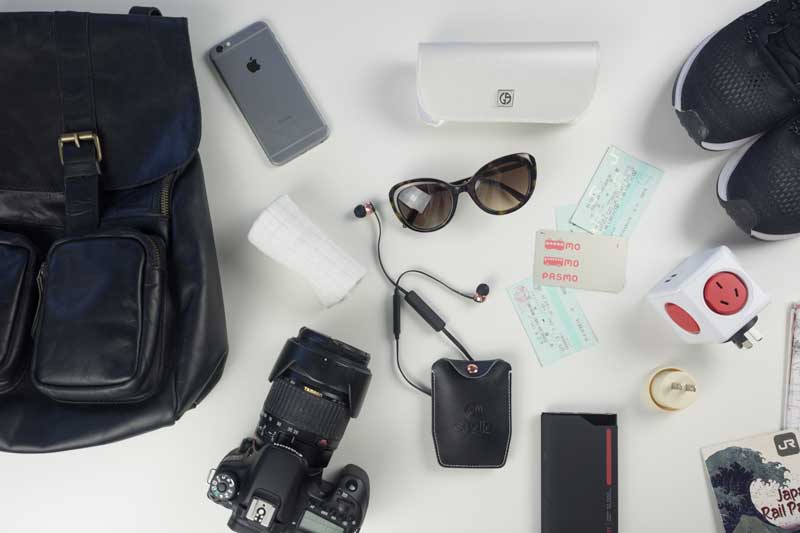
I’m not going to insult your intelligence here by telling you how many pairs of socks to take or what size bag to pack, we all have our own dress style and you’re either a pack into your hand-luggage person or you’re not. It’s no secret that I’m not although I do like to minimise as much as possible with an effective capsule wardrobe that all mixes and matches together.
What I’m going to cover here is a handful of items that I’ve found indispensable on each and every trip we’ve made. I hope it will be helpful to you too as you count down to your holiday and put together your Japan packing list. If you have any questions please leave us a comment at the bottom of this article or through our contact page.
Still in the planning stage of your trip? Find some great inspiration in our comprehensive Japan Guide covering destinations all around the country
Table of Contents
1. Comfortable shoes that are easy to remove
2. a stored value card for trains and buses, 3. your favourite earphones, 4. cash and your atm card, 5. a travel sim or wifi router, 6. sunglasses, 7. your camera gear, 8. a travel day bag, 9. a small towel, 10. travel power accessories, 11. probably not the japan rail pass anymore, what to wear in japan, what not to pack for japan, our japan travel essentials.
To see Japan you’re going to walk a lot. So unless you’re spending most of your day on a bus on an organised tour it can’t be avoided. The primary mode of transport for locals and visitors alike is a combination of the super-efficient public transport system and your feet.
Like most big cities the streets are busy and people move around at a moderate to fast pace. With days or weeks on your feet, you are going to want to be kind to them. I know you may want to make a fashion statement in Tokyo but I’m going to side with your feet on this and suggest comfortable shoes.
I know, BORING, but your feet will thank you for it. If you want the chance to dress up for that splurge at one of the many Michelin-starred restaurants or high tea with an astonishing view of the city then go ahead and pack your killer heels. For your urban exploration, reasonably flat and comfortable shoes that won’t give you blisters and you can walk all day in are what you are going to want.
We regularly walk at least 10 kilometres a day in Japan, you don’t have to do that much but it is surprising how quickly it clocks up.
The second trick is to pick shoes that are quick and easy to take off and put on. You’re going to be doing that a LOT too, far more than you’ve probably needed to do in other countries. In Japan, you will not only take off your shoes when you enter someone’s home but also in most temples, shrine buildings, castles and anywhere there’s a tatami mat floor.
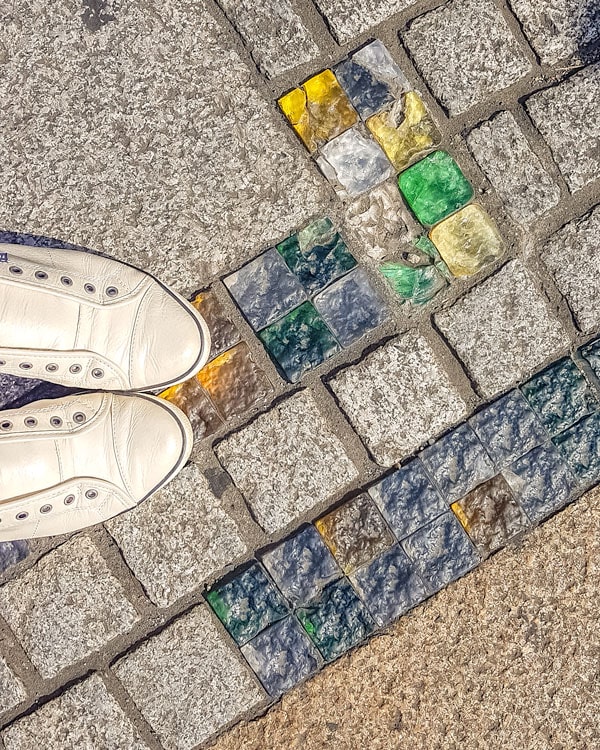
On my last couple of visits, I’ve put a lot of miles on my Frankie4 Nats. Frankie is a brand created by a Podiatrist and Physiotherapist couple in Brisbane so they are kind to the feet. I’ve got several pairs from the range but these particular leather sneakers work with jeans, casual pants, and even dresses. Best of all they have an elastic gusset meaning that while they come with laces for a more standard look I wear them without most of the time in Japan so they are very easy to slip on and off while still providing excellent arch support and comfort.
The Japan Rail Pass works on Japan Rail lines (or ferries) but there will no doubt be times on your travels when you want to use subways, buses and non-JR trains. The best option for this is to tap and go with a stored value card, often referred to as an IC card or intelligent card in Japan.
The IC cards include SUICA , ICOCA and PASMO. Changes over the past few years have made these much more useful as they’re no longer only used in specific regions they can be used interchangeably as you travel across the country. A few years ago I used to have one for Tokyo, another for Osaka and a separate day or weekly pass for Kyoto, now I can just load up one to use right across Japan.
What will determine which one you purchase now will be where you want to pick it up, SUICA or PASMO in Tokyo or ICOCA in Osaka.
Not only can you use these little gems for your transport but they also work in some convenience stores, called Konbini in Japan and many vending machines making them a convenient way to have cash on hand without carrying a heap of change.
Further Reading | Tips and Tricks on getting the best out of transport in Japan
It’s a fair distance flight to Japan from Australia, the USA or Europe so you’re going to want some entertainment and comfort on the plane. You’ll also likely spend some time on bullet trains, local trains, subways and possibly even buses where you may want to block a bit of external noise, listen to your latest podcast or just relax with some music.
We like to minimize the number of times we move accommodation and as a result, we tend to take longer day trips. It often means early starts or a reasonable commute back after dinner and time in transit starts to add up but it works well for us.

I’ve recently switched to the Sudio ETT wireless buds which seem to give me all the use I need during the day on one charge plus multiple additional charges are stored in the tiny wireless case. You can read our full review of the Sudio ETT earphones here.
I’ve used Sudio products for years, these latest ones have replaced the Niva and Vasa Bla earphones that have alternated in my purse constantly over the past couple of years. I absolutely love their design aesthetic, comfort and sound quality but also that they’ve been so durable for daily use despite constantly floating around somewhere in the bottom of my bag or backpack.
Drew’s current favourites are still the Regent wireless over-ear model and I sometimes use the Regent II, especially when flying alone. These offer the benefit of cancelling out the majority of external noise which is great in busy airport lounges, inflight or when working around a lot of ambient noise. They’re super comfortable to wear too, like sound pillows for the ears.
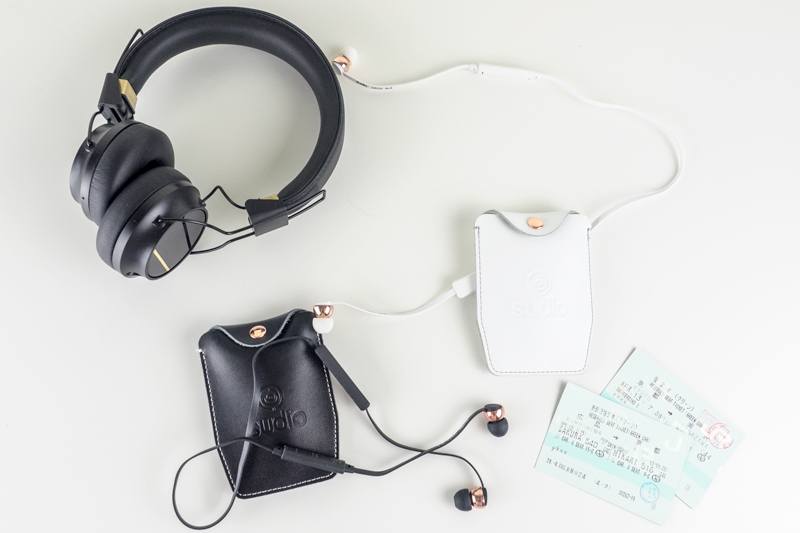
Something that surprised me on our early visits to Japan was that despite its advanced electronic technology, automation and love of gadgetry the consumer banking system is positively antiquated and cash was the only accepted payment in many places.
Things have changed quite a bit in this area over our years of visiting but Japan is still a cash economy. In preparation for the influx of visitors expected for the Olympics you can now generally use credit cards in hotels, middle to high-end restaurants, department stores, some western fast-food restaurants and taxis but it is not the norm for smaller purchases and debit cards unless powered by a credit card brand generally won’t work.
For those of us used to swiping a card or even our phone for everything from a cup of coffee to a major purchase, this may take some getting used to. While I suggest arriving in the country with some cash if at all possible you will undoubtedly need to refill your wallet if you’re there for more than a few days.
EFTPOS machines that operate in English are fairly easy to find, especially if you’re in major cities. The post office machines have an English button as do the machines in most convenience stores. The 7-Eleven is our backup which has always had the ‘English’ button cash and recently Lawsons and the slew of others also have the language option available and accept international cards.
To keep your expenses down check what your bank fees are for withdrawing cash from an international ATM before you leave home, Ubank, for example, has no overseas fees on their transactional account but the 4 big banks charged for every transaction and it can add up. Withdraw cash in the largest sum you are comfortable carrying at a time to avoid frequent transactions and always withdraw from your cheque or savings accounts, taking a cash withdrawal on a credit card incurs interest immediately, there is no free credit period.
There was a time early in our travels to Japan when we could get by with WIFI at the hotel and Starbucks and then use paper maps throughout the day. For some people that will still work but Japan doesn’t have extensive free internet and while unplugging at the beach or poolside is a novelty it can be more frustrating than freeing in a busy country like Japan especially if you don’t speak the language fluently.
There are some key apps and websites I like to have immediate access to when travelling in Japan so internet connectivity as we move around is essential for us. The top three I use in Japan are:
- a translation app like Google Translate or VoiceTra that will read a sign or menu and even help with translating a simple conversation,
- Google maps that I integrate with a personalised ‘my map’ that I have created in advance with my key destinations and wishlist, and
- a train app, I’m currently using the Japan Transit Planner from Norikae. While Google Maps works adequately if you are just hopping the subway around Tokyo, I find the algorithm makes things a bit more complex than they need to be and won’t always get the best solution for longer distances or more out-of-the-way spots.
I’ve recently had to review my connectivity options as my WIFI router was due for replacement, with the new options available I have switched to using a SIM or eSIM from TravelKon that I have in my hands before I leave Australia. It saves time buying or collecting it at the airport on arrival when I am tired and just want to get into the city and I have it connected and working before I step off the plane.
I’ve discussed all the options including free WIFI in detail in another article to help you decide if want a connectivity option and which one to go with, global roaming, WIFI routers , renting local SIMS in Japan and international SIMs will suit different travellers.
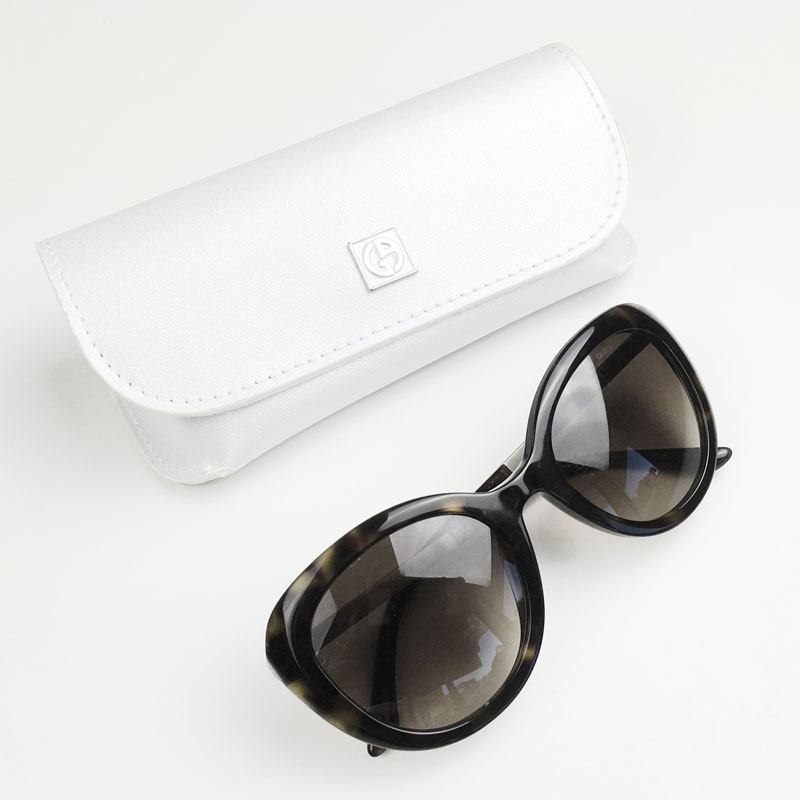
I usually have at least one pair of glasses in my bag every day because I live in a subtropical region with a very high number of sunny days. What did surprise me though is that I also wear them every day in Japan, no matter what season I travel in.
In the shoulder seasons of spring and autumn, those grey skies can cause a huge amount of glare especially when you walk around looking up at the blossom.
On winter visits again we found the combination of clear but cold days and the reflection snow and wet ground made them essential.
What makes the cut for camera gear is the part of packing I always struggle with the most. It generally comes down to how much I can fit into my 7 kg of cabin baggage as I won’t trust camera gear or electronics to the hold of an aeroplane. While I agree with the consensus that the best camera is the one you have with you when the shot presents itself, and phone cameras have progressed a long way, I still like to pack something with a bit more creative control, Japan is a very photogenic country.
I love my Olympus OMD EM1, it’s a fabulous camera and takes incredible pictures on a small and light body so it’s much easier to fit that into my bag and to carry all day when travelling. If there’s only room for one lens it will be the Olympus Pro 12-40mm (or 24mm – 80mm in full format terms) so that’s almost always attached.
If I need to go even lighter then the Canon G7x mkII has been a great alternative. It’s point and shoot in size but has full manual options and shoots in RAW, it takes decent video with creative options like timelapse and is just over half the price of the Sony RX100 which is also a very nice compact camera.
When using your camera all day a good strap makes all the difference and a couple of years back I switched from my women’s Black Rapid crossbody to the Peak Design Slide Lite after the Black Rapid worked its way undone one too many times. I’ve found its attachment mechanism more trustworthy and I love that it’s so quick-release to avoid accidents when the camera’s on the tripod.
Its slimline design works well-worn crossbody even with the additional straps of a pack or bag but it’s also designed to be worn around the neck or flipped over for more traction just on the shoulder. I also do a bit of a wrist wrap with it when doing food and product photography that keeps it secure and out of the way.
Some may prefer to travel with a tote or large handbag. I do myself in some countries when I’m concerned about theft but in Japan, I prefer my leather travel backpack as my daily carry. My current one from Colorado is robust and the perfect size to fit a tonne of stuff in it including my Macbook or camera gear but still looks stylish enough to pass as a handbag when it needs to rather than something I used to carry my school books in.
For hand luggage, I’ve been using the Peak Design Everyday Backpack for years now and regularly carry it on day trips and hiking too. I use the 20L and Drews has also converted and purchased the 30L. It’s a unique design but I love the adjustable compartments and pockets that fit so much in and it’s still streamlined and very easy to pack with everything having its place. It’s also comfortable to carry even for longer periods and fully loaded. There are separate spaces for everything and I always feel my laptop, iPad and camera gear are well protected.
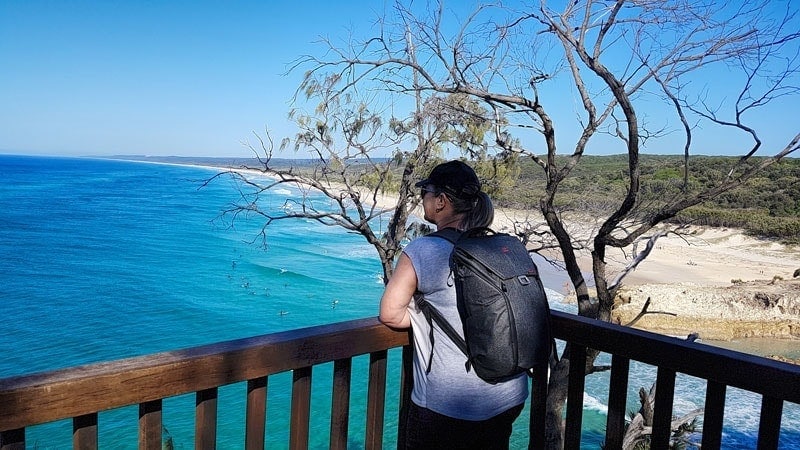
This is a little quirky but while Japanese public toilets are generally kept extremely clean and supplied with toilet paper they generally don’t have air dryers or paper towels for drying your hands. If you plan on visiting a few shrines and temples throughout the day you will also need to do the customary hand washing as you enter each one. In the cooler months, this can leave you with very sore and chapped hands after a few days if you don’t dry them well. After a couple of times just giving them a shake and wiping them on your jeans isn’t enough.
Many Japanese women will carry a small towel with them known as tenugui , they are available in many souvenir shops and are generally a smooth cotton fabric rather than the terry cloth towel common in the West. These multi-use items are re-purposed for everything from drying your hands and mopping your brow at a hot summer festival to a makeshift apron and wrapping a bottle of sake for a gift. A sand-free towel is also a compact option to pack and useful when you come across a foot onsen
I have a couple of items in this category, the first thing in my bag when packing for Japan is a couple of power adapters as our plugs are different in Australia. You can always pick them up at BIC Camera in Japan fairly cheaply if you don’t have one. The second gadget is a power cube, like a modern plugboard but it takes up very little space and allows me to charge up to 6 devices at once with 4 power plugs and 2 USB sockets into a single power adapter.
With at least two cameras, two phones, a laptop, two tablets plus sundry gadgets such as wireless earphones and a fitness watch there’s a bit of a nightly routine involved in plugging everything in so it’s ready to go in the morning, downloading the camera cards and backing everything up.
The other item we can’t do without is a power bank. We use a 10,000 ohm one as that is the maximum some airlines allow you to fly with and it’s the best balance of capacity to weight for our use giving multiple recharges to use throughout the day. Using maps, train timetables, phone cameras and social media, in addition to iPad or Kindle, portable WIFI and wireless earbuds there is always something that needs a top-up at some stage.
The Japan Rail Pass was routinely our top money saver when travelling in Japan. We’ve bought one for almost all of our trips since 2010 but the 2023 price increase has changed that dramatically.
Now more than ever, the JR Pass isn’t ideal for every trip or traveller so ignore what you hear and do your own calculations. It is convenient but not worth paying a premium over booking individual tickets as you go. We have a guide on EVERYTHING you need to know about the Japan Rail Pass so you may want to take a read of that if you are considering getting one.
Click to see the latest prices for our favourite online supplier of the Japan Rail Pass

Japan is fairly moderate in the range of what is acceptable to wear, especially if you’re a visitor. Tidy casual attire is quite acceptable even in the big cities for your urban exploration. Somewhere like Tokyo, you’ll probably see the full spectrum from the morning swarm of impeccable grey suits to Lolita dresses and fluffy character onesies.
Somewhere in the middle is your best bet, you don’t need a new wardrobe to visit Japan but there are a couple of taboos still to keep in mind. While very short skirts are common, visible cleavage is not, necklines are generally kept modest and tattoos are still not widely accepted in Japan, they may cause offence and in some places such as onsen (public hot pools), you will usually be refused entry.
We’ve visited Japan in most seasons and the biggest tip on dressing for Japan’s climate is to wear layers. The weather can be highly variable from one hour to the next, especially in Spring and Fall. Depending on the direction of travel an hour’s trip on a train can have you in a vastly different climate.
Learn from our Kyoto sunshine to Nagahama snow faux pas and even in the apparent consistency of Sapporo’s snowy winter , we benefited from layering. Every time you step into a restaurant, shopping centre or even a train you are going to be toasty hot even if there’s a blizzard enveloping the city outside.
As a general rule, I’d also suggest packing a capsule wardrobe of items that mix and match together well even if that’s not your normal style. Be brutal, if it doesn’t go with at least 2 other items in the suitcase it stays behind. Items that can be dressed up for the evening and down a bit in the day are most useful and as with shoes, prioritise comfort over cute.
Sometimes what you leave out of your case can be as important as what you put in. Here are a few things to consider if you’re trying to reduce the volume.
Basic toiletries. Most hotels and we’ve stayed in a fair few across Japan over the years, have an exceptional selection of body care products. Beyond the standard shampoo and soap, they regularly have toothbrushes, nail files, and even razors. The one thing I have wanted on occasion that is common in overseas but usually missing in Japan is body lotion, the air conditioning and dry air leave my skin parched.
I wouldn’t travel without my holy grail products for a full trip but if you want to make use of the popular luggage transfer service or take a single night somewhere with minimal luggage such as Kinugawa Onsen or Kurashiki Bikan then these provided products can be an option and take just what you need in your overnight bag.
The other reason I might intentionally pack light on skincare and hair products is that most of my all-time holy grail beauty products are Japanese brands. These aren’t always cheap but they are significantly better priced than at home so Shu Uemura, SKII, Shiseido and my holy grail Biore face sunscreen are coming home with me in bulk. Plus I need a bit of space to try a few new products out each trip.
Umbrellas. Yes it does rain fairly frequently and you’ll likely end up wanting one but umbrellas are cheap and widely available in every second store. Simple umbrellas are considered disposable items in Japan which I find a bit counter-intuitive given their approach to waste and recycling.
It’s also the only thing that seems to be regularly ‘stolen’ in Japan, you go into a store, leave it in the rack outside if it’s wet and it seems to be considered fair game for ‘borrowing’ if you take too long to come back and claim it. Again a strange contradiction in this country which in our experience is exceptionally honest and safe for people and property.
Hairdryer. There was ALWAYS a hairdryer provided as there is pretty much everywhere now so save the space in your bag, it might take a couple more minutes without your super-powered version but it’s not that bad.
So there you have it, our essentials when packing for Japan and a couple of things you can potentially leave behind. Have a fabulous trip if you are heading off soon and please do drop a comment below if you have any questions, or suggestions of your own that belong on everyone’s Japan travel checklist.
This site uses Akismet to reduce spam. Learn how your comment data is processed .
Monday 20th of March 2023
Great advice - thank you! Heading over next week for 3 weeks with my hubby and 2 year old son - we are from Central West NSW. I've added (and removed) somethings from my packing list based on your recos.
Toni Broome
Have a great trip Ronni! We aren't heading back until November and already can't wait.
Monday 3rd of February 2020
I am going to be in Kyoto in April, and was thinking about a day trip to Ine or a similar small fishing village.
Can you recommend anything, a tour or some transport options please? Is Ine suitable for a day trip?
Thanks in advance.
Hi Nick, although it's in Kyoto prefecture it's more time consuming and complex to get to than many destinations in a neighbouring prefecture. If you wanted to do an independent day trip you'd take the limited express from Kyoto to Amanohashidate (just over 2 hours) and great to explore then a bus up to Ine which is another hour or so, you'll need to allow waiting time though as the bus is infrequent. The public boat trip in Ine runs about half-hourly. Whether you do it independently or as a tour a lot of the day will be taken up with getting to and from Kyoto city if you do it that way.
A tour has the connections and transport worked out to maximise what fits into the day but you lose the flexibility to stay longer at one place and skip another. For tours I would usually use Klook but their Ine / Amanohasidate tour leaves from Osaka not Kyoto, I've also booked activities through Viator who do a day tour that leaves from near Kyoto Station. I'll link them up so you can see what they include.
For us, Ine on a day trip would be pushing too far, that hour on the bus each way from Amanohasidate and roughly an hour between buses would be too time-consuming. I don't mind the 2-hours to Amanohashidate because you can do that by limited express each way so it's comfortable and you just sit back until you arrive, there is only a couple of direct limited express each day but they would work OK to get there and back. Depending on your travel style, how long a day you were prepared for and what you wanted to do there, you could do it.
Thursday 12th of April 2018
Hi love your blog. I'm heading over to Japan on the 22nd of April. Can you expand a bit more on the pocket WiFi. When I have travelled to other countries I have just purchased a Sim card for my iPhone, but from what I have read it is not that easy in Japan. What do you recommend?
Friday 13th of April 2018
Great thanks for your help. Ive ordered a rental wifi unit from Wifi 2 go and see how it goes. I'm quite a big data user and it often traps me. I just blew an extra $200 in NZ recently because of my data usage!I'm so excited to be going to Japan! Thanks for your help. I said you recommended me to Wifi 2 go.
Hi Sally. In Japan you can't just purchase a SIM card for your phone as a visitor as you do in many other countries, you need to live there, even for foreigners living in Japan it takes a fair bit of perserverence and effort to get one. You can rent a SIM but our experience travelling as a couple is that the pocket WIFI is a better option for us as it can serve to multiple devices. I've written about it in the linked article and discuss the various options, I choose the option of getting the device before I left and return it when I got home as it was no more expensive than organising it there and to be honest yet another queue at the airport when I get there is the last thing I feel like doing usually. https://www.2aussietravellers.com/pocket-wifi-japan/
Sunday 8th of April 2018
Hi 2 AT, Your web page is very informative. I will be travelling soon to Japan but after much thought and planning decided not to get the JR pass before leaving. As will be just taking the long distant train from Kanazawa to Nagoya and Nagoya to Tokyo. I’m still unsure if I’m doing the right thing. Please advise. Thank you.
Monday 9th of April 2018
Hi Sheila, if you are just doing those two long distance routes then the JR pass definitely won't pay off. The quickest route to Nagoya is the limited express and switch to the shinkansen at Maibara and costs Y8,020 and then Nagoya to Tokyo on the Hikari shinkansen is Y10,880. The 7 day pass in yen is Y29,110. The JR pass is often good value and well worth considering but doesn't suit every traveller or travel style.
Saturday 17th of February 2018
Thanks Toni, yes I've read that Japan is still prefer cash than cards especially in more rural area. We'll keep in mind to have cash all the time Thanks again for your input
Plan your trip

- Bahasa Melayu
- Bahasa Indonesia

What to Pack for Japan: 8 Essential Things for a Hassle-Free Trip
Planning a trip to Japan can be both exciting and daunting. You want to make sure you have everything you need for an enjoyable and stress-free journey, but the fear of forgetting something important can be overwhelming. The last thing you want is to spend precious vacation time scouring stores for essentials you left behind. To help ease your worries and ensure you have a memorable trip to Japan, we've compiled a list of must-pack items recommended by seasoned travelers. From practical essentials to cultural niceties, these items will not only make your trip more comfortable but also enhance your experience of Japan's unique culture and customs. So, before you start packing your bags, read on to discover what to bring on your Japan adventure.
1. Cash and credit card
2. pocket wi-fi or a sim card, 3. download useful apps, 4. electrical adapter and power bank, 5. japan rail pass, 6. right clothes – and layers – for the weather, 7. suitcase space, 8. comfortable walking shoes.
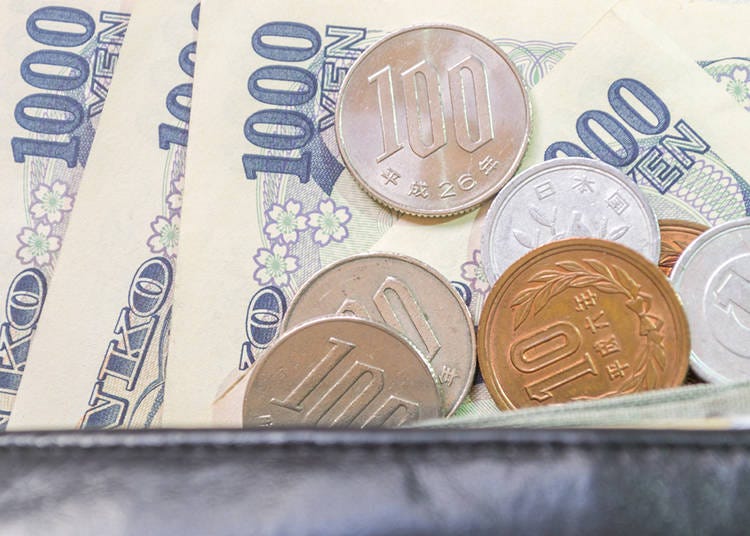
While it may seem mundane, having both a credit or debit card and cash is essential for travelers in Japan. While the country is advanced in many ways, it still has a cash culture, and cards may not be accepted everywhere. It is recommended to have at least 20,000 yen in cash on hand and to inform your credit card company of your travel plans in advance to avoid declined transactions. Those with limited cash may be surprised to find that it can be difficult to find an ATM that accepts international cards. To ensure peace of mind, it is best to bring at least half of your spending money in cash. While carrying all cash raises safety concerns, Japan is a very safe country if common sense precautions are taken, such as not keeping all the money in one place. If you need to withdraw cash, 7-Eleven or Japan Post Bank branches typically have ATMs that accept international cards, but be aware of withdrawal limits, which can vary by location. Additionally, paying for small items with large bills, such as 10,000 yen, is generally not an issue in Japan, and currency aside from yen is typically not accepted.
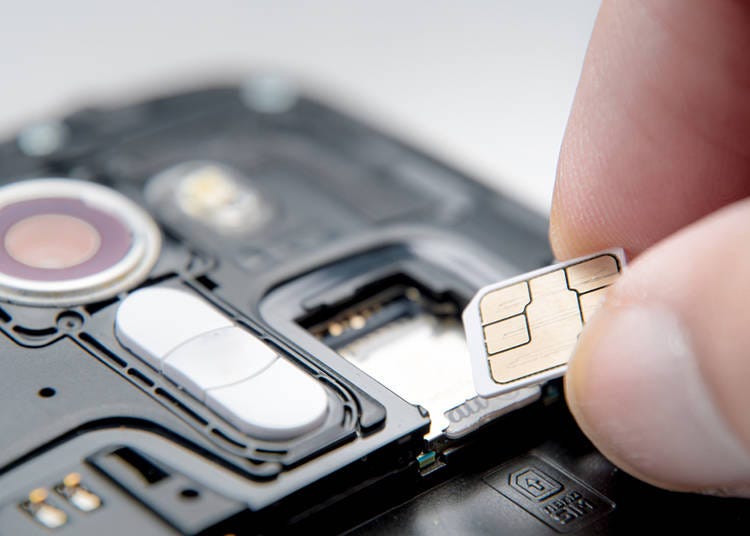
If you bring your mobile phone from home, you may not be able to use the Internet or face high roaming fees when accessing maps and other apps. A simple solution to this problem is to order a SIM card or portable WiFi before your trip, which will allow you to access the Internet anywhere in Japan. There are many different SIM and pocket wifi providers at reasonable prices, and you can order it before you arrive in Japan, sometimes even with delivery to your hotel . The advantage of this is that you can update your social media accounts during your trip and share your experiences with your friends.

Another plus point to having access to the internet wherever you go is that you can use a translation app or phrasebook. It is best to download this before your arrival so that you can get used to using it, ideally before you are desperately trying to communicate with a hotel owner in the middle of nowhere, but you would be really taken aback to see how much these apps have progressed these days. For someone who doesn’t know a single word of Japanese, it is a real lifesaver. Using an app will also allow you to experience the Japanese language; you might even pick up some easy words to help you on your journey, such as: ・Sumimasen (excuse me) ・Arigatou gozaimasu (thank you) ・Onegai shimasu (please) ・...wa doko desu ka? (where is...?) ・Ikura desu ka? (how much is it?)
- Transit maps (e.g. Google Maps or Japan Navitime)
- IC cards/train reservation apps (e.g. Suica)
- A translation app like Google Translate (which also supports image translation - perfect for menus)
- Ride-hailing app (e.g. JapanTaxi)
- Earthquake alert (e.g. Prep)
- Weather app
- Messaging (e.g. Facebook Messenger)

Your mobile phone battery will go down pretty quickly when you are using the internet and apps, never mind any other electrical goods you might have that you want to use, so an adapter is essential to pack. We all have this vision of Japan as a country where you can get any electrical item you want, whenever you want it, but actually, you will struggle to find a Japanese adapter that works with a Spanish or British plug – especially in the countryside or at 3 a.m. in Shibuya , Tokyo. It is really something that none of us can live without. If you are coming from the United States or Canada , most electronics can be used as-are: Japan runs on a 100-volt current that keeps them happy. Be aware, however, that 3-prong outlets are not, for the most part, available in Japan and that you may want a slim adapter if bringing a laptop or other device. Finally, you may also wish to consider bringing a portable USB power bank to keep your devices juiced when you’re on the go. Where can I buy a plug adapter and power bank? If you do not yet have a plug adapter or power bank, you can pick one up at an electronics store such as BicCamera or Yodobashi Camera. Many convenience stores will also carry simple tech like power banks and SD cards as well.
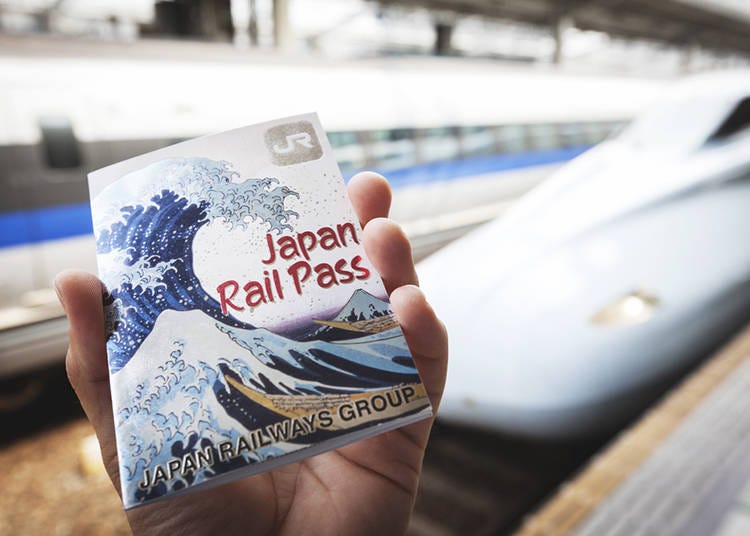
If you are more of a gung-ho traveler who arrives in a country without planning your stay, then you might become a bit unstuck when you realize that a Japan Rail Pass is one of the most cost- and time-efficient ways to travel around the whole country. The reason being the fact that you need to buy the pass before you arrive in Japan. While it may be possible to buy a Japan Rail Pass at a few stations in Japan, but these are more expensive than buying online before you arrive. (Buying and reserving beforehand really helps make your journey so much simpler – especially if you intend to visit several places around the country and not just stay in the Tokyo area.) Passes are sold as either one-week, two-week, or three-week tickets, and they allow you to use the Shinkansen to travel the whole length of the country, as well as all JR lines in Tokyo – plus the Narita Express train between Narita airport and Tokyo. Before you pick up a pass, though, it's best to run your itinerary through a service like Google Maps or Hyperdia, noting prices of different transportation options to make sure that a Japan Rail Pass makes sense. One of the easiest considerations is that if you are going from Tokyo to Kyoto, then explore around the Kansai region for a short while before heading again to Tokyo, then the Japan Rail Pass may make sense for you. If, however, you intend to stay around a specific area - e.g., just around Osaka/Kyoto or Tokyo - then a day pass or regular train tickets might make the most sense.
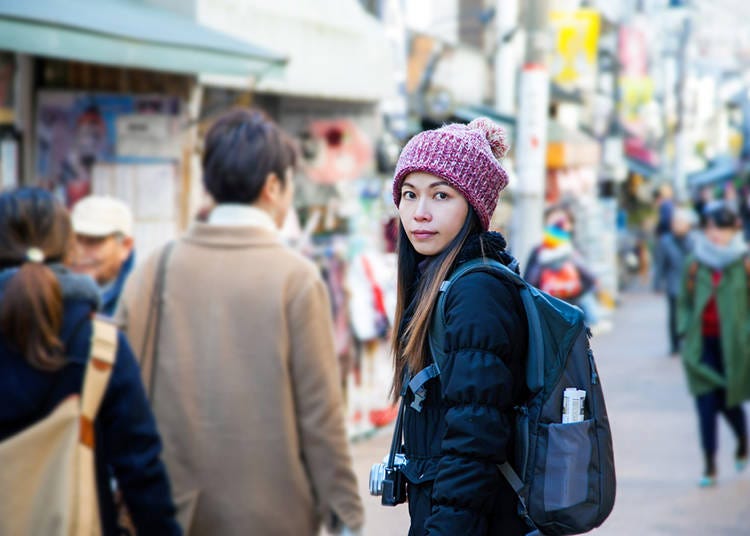
It sounds like common sense to say that clothes are essential, but actually, for Japan you have to think quite hard about weather and clothes. In the summer it is really hot, and in the winter it is quite cold. During the winter there can be heavy snow in the north but mild temperatures in the south. It can even be confusing if you are just staying in one place: for example, if you are in Tokyo when it is cold the obvious thing to do is dress warmly, but then you get on a train and you start to feel uncomfortably warm! There can be quite a temperature difference between being outside and being inside, trains and department stores , in particular, seem to maintain a quite high temperature – which is a bit of a nightmare for someone padded out in several layers of clothes. The best advice is to check what the weather is like during your stay and bring clothes which can easily be taken off.
- Clothing: 7 sets of comfortable, weather-appropriate outfits (considering the season)
- Clothing: 7 pairs of socks and underwear
- Clothing: Pajamas or sleepwear (note that many hotels and especially ryokan will furnish this)
- Toiletries: Makeup and cosmetics (if applicable)
- Toiletries: Toothbrush and toothpaste (note that this, plus soap, shampoo, razors and shaving cream are often available at hotels/ryokan)
- Toiletries: Sunscreen and insect repellent
- Toiletries: Feminine hygiene products (if applicable)
- Tech: Smartphone and charger
- Tech: Camera, charger, and spare SD cards
- Tech: Portable charger or power bank
- Tech: Adapter and converter for Japanese outlets (if necessary)
- Misc: Passport and other travel documents
- Misc: Wallet with cash and credit cards
- Misc: Travel-sized umbrella
- Misc: Lightweight day bag or backpack
- Misc: Medications and prescriptions (if applicable)
- Misc: Portable water bottle

Japan is a culture which is big on gift-giving, especially if you travel on the Shinkansen you are bound to notice the sheer number of gift shops at stations. So, if you are in Japan to visit friends, and more importantly, if you are going to meet your friend’s relatives, then you need to make room in your suitcase for a few small gifts. Japanese people are very grateful when they receive a gift, and will be quite proud if you give them something unique from your country.
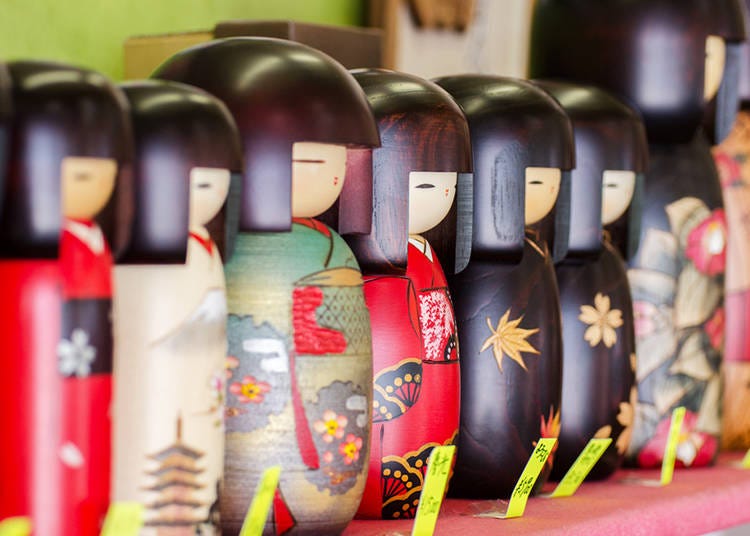
Bringing gifts to Japan will aid one last important thing to include on your list of items to take to Japan or rather a necessity for when you leave Japan, although technically speaking, it isn’t an item – space! Japan is heaven for shopaholics, but even shop-resistant travelers will find themselves buying traditional crafts, delicious sweets , and more. However, if you bring a fully packed suitcase, then you will struggle to bring anything home. And you don’t want to avoid buying something you really want just because you are thinking about suitcase space all the time! Make sure you just bring what you really need and nothing else, because you will certainly be going home with a heavier suitcase than the one you arrived with.
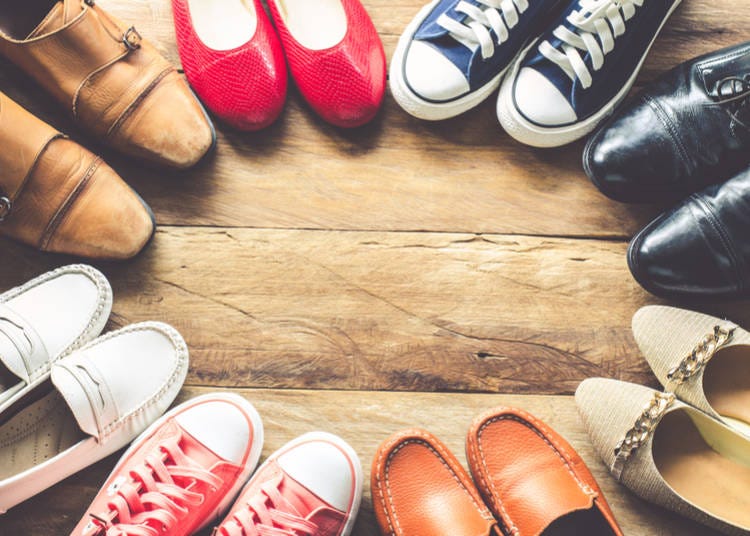
As opposed to many other countries, where shoes are typically worn indoors, you'll find that shoelaces impose something of an inconvenience during your stay in Japan. When going to a traditional Japanese restaurant, you'll probably take off your shoes. When staying at a ryokan , you'll be taking them off as well. Going inside a temple ? You get the idea: you'll encounter many other occasions in Japan where having a pair of shoes you can easily slip on or off without worrying over laces is such a convenience. Also, keep in mind that you'll want a pair of comfortable walking shoes. Many visitors remark that they walked more during their stay in Japan than they typically do in their home country. Accordingly, wearing a pair that's kind to your feet will help keep your trip very happy indeed. (The same goes for socks: be sure to bring a warmer pair for winter months and a thinner pair for summer - or even a pair of sandals!) A top tip by seasoned travelers: if you buy new shoes for your trip, be sure you walk around with them plenty ahead of time in order to get your feet used to them. (It's sometimes better to wear a pair of shoes that are already worn in, to avoid blisters!)

- Category Other Contemporary Culture
- How To: Sightseeing
Share this article.

Recommended places for you

Yoshida Gennojo-Roho Kyoto Buddhist Altars
Nijo Castle, Kyoto Imperial Palace

ISHIDAYA Hanare
Kobe, Sannomiya, Kitano

Kamesushi Sohonten
Umeda, Osaka Station, Kitashinchi

Kanemori Red Brick Warehouse
Shopping Malls

Jukuseiniku-to Namamottsuarera Nikubaru Italian Nikutaria Sannomiya

Rukku and Uohei
Sapporo / Chitose

Shibuya Levels Up: Exclusive Food and Experiences at the New Shibuya Sakura Stage (Opened July 25)
by: Miyu Shimada

Discover Tokyo’s Best-Kept Secret: The Allure of Sento Baths

Travel Smart: 10 Essential Disaster Prep Items from Japanese Convenience Stores

What to Do in Tokyo in September 2024: Asakusa Samba Carnival, Tokyo Game Show & More Fun Events
by: Kaori Kimura

Experience the Magic: Mt. Fuji and Lake Kawaguchi Fireworks Festival (August)

Tokyo Summer Festivals: Bon Odori, Digital Festivals, and Theme Park Events for August 2024

We have gathered some fashion items from Japan in Marunouchi!

Visiting Hokkaido Japan: 14 Things to Know Before Traveling to Japan's Wild North

3 Famous Ramen Shops in Yamagata - Japan's "Ramen Prefecture"!

Exploring Tokyo 'Urahara': 4 Ura-Harajuku Spots for Unique Fashion, Food and Creative Inspiration!

[MOVIE] Survival Japanese: Shopping

Numazuko Kaisho in Ueno: Good Quality, All-You-Can-Eat Seafood for Just US$12!?
- #best sushi japan
- #what to do in odaiba
- #what to bring to japan
- #new years in tokyo
- #best ramen japan
- #what to buy in ameyoko
- #japanese nail trends
- #things to do japan
- #onsen tattoo friendly tokyo
- #best coffee japan
- #best japanese soft drinks
- #best yakiniku japan
- #japanese fashion culture
- #japanese convenience store snacks
What to Pack for Japan: 7 Essentials You Shouldn’t Forget [Download]
Published on 2015-06-03 by Sakura Mobile

Toothbrush. Check. Underwear. Check. Hairdryer…. Wait, would your hairdryer even work in Japan? Packing is, inevitably, the worst part about traveling. Nobody likes to do it, but everybody has to yet we always leave it until the very last minute. There is procrastination and then there is running around trying to locate the “safe place” you hid your passport while the taxi is waiting outside to take you to the airport. If you’re headed to Japan, but are stuck in the packing blues, your life has gotten a little easier with our essential tips on what to pack for Japan and our downloadable Japan packing list.
What to Pack for Japan
Smartphone (japan travel sim card).
This goes without saying, but if you use a smartphone back home, then definitely bring it with you. While free WiFi is gaining momentum in Japan, there are still many places that don’t have strong signals (if any). To overcome this issue, you can easily rent a travel SIM that works with unlocked phones and have it mailed directly to the airport you’re arriving at or to any address you’re staying at. Note that most companies offering Japan Travel SIM cards have limited quantities in stock, so if you want to get the best deal possible, consider reserving early; otherwise you may pay an arm and a leg for data if you have to purchase the card after you land at the airport.
Comfy Shoes that are easy to take off

Power Converter or Adapter (JIS C 8303 / NEMA 1-15)

Small Luggage

Hand Towels

Smart-Casual Clothes
While most restaurants and bars don’t have a dress code, it wouldn’t hurt to have one set of smart-casual attire–especially if you are planning on going to an upscale Japanese restaurant or a fancy hotel bar in, say, posh Ginza or Omotesando.
What Not to Pack for Japan
Ditch the heavy shampoo bottles! For real. They only take up space that you could be using for something else. Besides, have you ever successfully transported a bottle of shampoo without it leaking in your bag? It’s too risky. Instead, just pick up a small bottle at a nearby convenience store or drugstore for a few hundred yen. In most stores, the selection of hair products is quite substantial, and you’ll even find Western brands like Lux and Pantene.
Most hotels, 3-star and above, will provide you with a toothbrush, toothpaste, soap and a razor. If your hotel doesn’t, just swing by a nearby convenience store for whatever it is you need. Get your mouthwash, floss, toothbrush and the whole spiel once you arrive.
Low-Cut Shirts
Casual clothes, like shorts and a t-shirt, are perfect for sightseeing–especially during the muggy summer months. Having said that, try to avoid wearing low-cut shirts that show your assets. While Tokyo is a glitzy and glamourous fashion hub, most people dress on the conservative side. Meaning, low hanging spaghetti straps and short shorts may warrant unwanted attention from locals. Also, for men who enjoy a morning ritual of jogging without the restriction of a sweaty shirt, you may consider leaving your shirt on while in Japan as this is considered very unusal by the locals. If you’re thinking of purchasing some stylish clothes in Japan, here’s what you should know: clothing sizes usually run a little smaller (e.g., an American XS would be a Japanese S, an American S would be a Japanese M, etc.). But don’t worry; if you usually wear a women’s XS?M, you’ll find clothing your size in most stores. If you’re an L–XXL, Uniqlo and Western shops, like GAP or Zara, may be your best options. For men, it won’t be as difficult to purchase clothes that fit, unless you’re 6 feet (approx. 180 cm) or taller.
Seasonal Accessories
Don’t bother bringing your favorite gloves, scarves, and hats, unless you’re planning on going hiking and need to have waterproof ones. Most of these seasonal items can be purchased for cheap at places like Uniqlo or Daiso (the Japanese version of a dollar store, except so much better), and you don’t want to risk losing any of your favorite accessories in a foreign country.
Bottom Line on What to Pack for Japan
Save space in your suitcase for all the amazing souvenirs your going to buy, because you’ll definitely regret packing too much when you don’t have any room left. Some travelers end up buying another suitcase just for all their newly purchased items. While that’s one way to go about it, it’s definitely not the most economically friendly way. Save some cash by taking our advice on what to pack for Japan with our Japan packing list PDF below.
Don’t forget to download our Japan packing list .

Share this:
- Share on Tumblr

- Search Please fill out this field.
- Manage Your Subscription
- Give a Gift Subscription
- Newsletters
- Sweepstakes
If you click on links we provide, we may receive compensation.
- Travel & Lifestyle Products
I’m About to Board a 15-Hour Flight to Asia: Here’s Everything I’m Bringing With Me
Ear plugs, heated eye masks, snack bags, organizers, and more.
:max_bytes(150000):strip_icc():format(webp)/EunaPark-DDM-Headshot-9132011f51374ad8ad679d5244e71e92.jpg)
Real Simple / Tyler Roeland
I’ve been traveling to Asia since I was a toddler, so 15+ hour long-haul flights feel like nothing to me anymore. Of course, as a kid, my parents were the ones to prepare the snacks, activities, and comfy essentials. But now as an adult with over 25 years of international traveling under my belt, I’ve honed down my routine, starting from leaving my house to head to the airport to landing at my final destination.
From a hands-free skincare routine to portable batteries that serve as my main and backup power source in a crowded airport and on the plane itself, I’m sharing my 15 must-have travel essentials that I’m carrying with me on my upcoming two-week trip to Seoul, South Korea. Best part? Everything’s conveniently available on Amazon, and Prime members can get everything faster with free two-day shipping. While I can’t promise that you won’t lose your luggage or your flight won’t be delayed, I can help prepare you to get through what could be an uncomfortably long day to be pretty pleasant.
Amazon Travel Essentials for a Long-Haul Flight
- Anker 20,000mAh Power Bank , $40
- Loop Quiet Ear Plugs , $28
- CorneaCare Self-Heating Eye Mask , $35
- Apple AirTag 4-Pack , $80 (was $99)
- Fyy Travel Cable Organizer , $10 (was $13)
- Bagsmart Compression Packing Cubes (Pack of 6 ), $39 (was $43)
- Sony WH-1000XM5 Noise-Canceling Headphones , $328 (was $400)
- Stall Mate Wipes , $12
- Apple iPad Mini (6th Generation) , $389 (was $499)
- Comrad Knee High Compression Socks , $27 with coupon (was $28)
- E11ement Hypochlorous Acid Face Spray , $10
- D'Alba Italian White Truffle First Spray Serum , $20
- Stasher Platinum Silicone Food Grade Reusable Storage Bag , $10 (was $13)
- Trendy Queen Zip Up Hoodies , $20 with coupon (was $50)
- Refresh Plus Preservative-Free Lubricant Eye Drops , $22
Anker 20,000mAh Power Bank
It’s no secret that I am a tech lover. From multiple cameras and bluetooth earphones to laptops and iPads, I am always looking for extra power to source my hobbies and leisure activities. But, I absolutely despise having to search for an outlet, so I always have a portable charger on me. For long-haul flights, though, I carry around this 20,000mAh Anker power bank that can fully charge my iPhone and iPad multiple times, and even give my Macbook Pro extra juice. With such a large power capacity, it does take a bit to charge, but once it’s loaded, I can travel days without being bound to a wall outlet or broken airplane charging port.
Loop Quiet Ear Plugs
You’ll never catch me without my Airpod Pros when I’m traveling, but when I want to just sleep undisturbed without killing the battery on my earphones, I’ll opt for these Loop ear plugs instead. They’re the tiny-but-mighty secret to helping me sleep on planes—and they don’t fall. Each ear plug comes with a range of insert sizes, and once you have your proper fit, it doesn’t feel like you have anything in your ears. They also come in a variety of colors, and if you’re looking for higher noise cancellation, the brand offers different models for that, too. I love that it comes in its own tiny carrying case, which features a little loop that I attach to my keys for easy access.
CorneaCare Self-Heating Eye Mask
As a chronic contact-wearer and monitor-starer, dry eyes are an inevitable part of my life. While I’ve been wearing these eye masks to sleep to help relieve my dry eyes, they’re the best for sleeping on a plane. Each eye mask is individually wrapped, and as you unwrap and unfold the mask, it’ll start heating up on its own. I’ve found that the warmth lasts around 20-25 minutes, which is more than enough time to put me to sleep. And, of course, having the darkness of the mask keeps me asleep. They’re comfortable to wear, too, thanks to the thin and stretchy mesh fabric that fits snugly but gently around your ears. I always carry a few with me in my personal item, especially for 15+ hour flights that I know I’ll be in and out of sleep. I’ve even given these out to friends who struggle to sleep on planes, too, and they were wowed with how the warm eye mask helped.
Apple AirTag 4-Pack
Every frequent traveler knows that Apple AirTags are a must. They’re slim, easy to use, and the battery lasts ages. I have one in each of my luggages when I’m flying (usually one carry-on and one check-in), one in my personal item, and one in my passport. Once I land at my destination, I’ll take these out of my luggage and insert them into my handbag, camera bag, wallet, and passport case—having the four-pack is so convenient. I’ve used these for years and still haven’t had to switch out the battery, which is also easy to re-install. And as an Apple-only device user, the tags seamlessly connect to all my devices for easy management and watching of my valuables.
The key to traveling comfortably is to always be prepared, and these are just a few of the many travel hacks I’ve acquired over the years of boarding a lot of long-haul flights. If you’re looking for more practical and also unassuming things that I promise will help for a smoother travel experience, find my must-haves below.
Fyy Travel Cable Organizer
Bagsmart compression packing cubes (pack of 6), sony wh-1000xm5 noise-canceling headphones, stall mate wipes, apple ipad mini (6th generation), comrad knee high compression socks, e11ement hypochlorous acid face spray, d'alba italian white truffle first spray serum, stasher platinum silicone food grade reusable storage bag, trendy queen zip up hoodies, refresh plus preservative-free lubricant eye drops, more must-shop products.
:max_bytes(150000):strip_icc():format(webp)/unsexy-beauty-treatments-GettyImages-1211175889-277ac6b0a0a649688fc081574fda152f.jpg)
Related Articles
If You Travel A Lot And Still Don’t Have Any Of These 44 Products, You’re Doing It Wrong

Popular items from this list include:
- A pack of four mini refillable perfume spray bottles for scents you can safely take on your travels without TSA getting rid of them
- A portable cordless phone charger if your device is chronically under 10% when you’re out and about
- A water-resistant hanging cosmetic bag with four separate compartments that will help you keep your makeup and skincare products organized.

From Our Partner
Huffpost shopping’s best finds, more in shopping.
- Search Please fill out this field.
- Manage Your Subscription
- Give a Gift Subscription
- Newsletters
- Sweepstakes
If you click on links we provide, we may receive compensation.
- Travel Products
- Trends + Deals We Love
- Amazon Products
I Shop for a Living, and I Found the 12 Amazon Labor Day Deals Worth Buying Up to 91% Off
Save big on editor-approved travel essentials, starting at $14.
:max_bytes(150000):strip_icc():format(webp)/Amelianewheadshot10_4-b90d8f0bc4914a49a58880b6e983a6ec.jpg)
Travel + Leisure / Reese Herrington
The dog days of summer may finally be behind us, but online retailers are heating things up this weekend with massive Labor Day sales. And since this day marks the transition between summer and fall, now is a great time to fill any gaps you might have when it comes to necessary travel essentials far in advance of the hustle and bustle of upcoming holiday travel. Naturally, Amazon is leading the charge with tons of major discounts on everything from travel-friendly apparel to hardside luggage .
As an avid Amazon shopper and travel editor, I’ve already begun digging for the best deals ahead of the fall travel season. After sifting through hundreds of products, I can confidently say that this year’s Amazon Labor Day Sale has something for everyone . Ahead, I rounded up 12 of the top deals worth buying this weekend. With portable camping chairs , weekender bags , electric toothbrushes , and more, this list is chock full of practical products that’ll make your next traveling experience so much more enjoyable.
ETRONIK Weekender Overnight Bag
This large weekender duffel from Etronik, dubbed the “ Best Travel Bag Ever ” by Amazon shoppers , is a whopping 58 percent off (with the on-site coupon) during Labor Day weekend. Available in 20 different colors and styles, it comes with a removable toiletry bag and features multiple individual compartments, including a separated vented shoe compartment that keeps stinky sneakers tucked away from the rest of your belongings. Made with a waterproof nylon fabric, it also comes with a USB charging port, a luggage trolly strap, and a removable padded shoulder strap.
Sony WH-1000XM4 Wireless Premium Noise Canceling Headphones
I’ve owned — and loved — my Sony over-ear headphones for years, and now that my model is on sale for Labor Day weekend, I’m strongly considering buying another pair in a different color. Originally priced at $348, the WH-1000XM4 model is currently $100 off. The noise cancellation, long battery life, and touch sensor controls are all superb, but my favorite feature is the speak-to-chat function, which picks up voices mid-conversation, pausing whatever you were listening to so you can hear the person you speaking. Over 46,000 five-star reviewers agree, with one happy shopper reporting that these Sony headphones are a bargain and “the best noise canceling headphones I have ever owned.”
Trendy Queen Womens Oversized Sweatshirts Hoodies Half Zip Pullover
You can never have too many sweaters, hoodies, and sweatshirts during fall, and I’ve been eyeing this Automet pullover since it went on sale. Currently 62 percent off with the on-site coupon and available in 24 different eye-catching shades, this sweatshirt comes with a giant kangaroo pocket in the front and a perfectly oversized silhouette. Cuffed wrists on the sleeves trap in warmth, while the half-zip front allows you to cool off on warm afternoons. Psst: If you prefer hooded sweatshirts to pullovers, check out this option , currently $27 off for Labor Day.
Ring Video Doorbell
A doorbell camera can provide peace of mind while you’re away from home. This weekend, you can snag the industry-leading Ring Video Doorbell camera before your next trip — for $40 less than the original $100 price tag. This 1080p HD video doorbell camera is compatible with Alexa and links directly to your phone, tablet, or PC, providing real-time video and audio feeds of visitors outside your home. You’ll get instant push notifications to your devices whenever the doorbell rings or the built-in motion sensor is triggered, providing an added sense of security while on lengthy trips.
Bagail 8 Set Packing Cubes
Packing cubes allow you to keep all of your clothes, accessories, and toiletries organized within your checked luggage. This specific set from Bagail is just $14 for Labor Day and comes with a laundry bag, a zippered shoe bag, a cosmetics bag, a discreet underwear cube, and three additional mesh packing cubes. Available in 14 colors, these cubes are great for keeping your items separate and easy to retrieve on short notice.
Allbirds Women's Tree Runner Go Everyday Sneakers
Quality athletic shoes can be pricey, but these discounted Allbirds Tree Runners are a steal at just $68. Available in eight different colorways, these everyday sneakers are great for traveling, long walks, and workouts alike. Made with an ultra-breathable tree fiber upper and springy, cushioned midsoles, these sneakers are a bouncy, cool, and totally effortless footwear option to add to your travel wardrobe.
Coolife Expandable Suitcase Luggage
Upgrade your luggage on a budget with this three-piece hardside suitcase set from Coolife. Currently on sale for $190, it comes with everything you’d need for weekend trips to extended vacations, including a carry-on spinner, a medium checked suitcase, and a large checked suitcase. Each piece in this three-piece set is constructed with a lightweight-yet-durable outer shell, reinforced grip handles, dual spinner wheels, and a sturdy adjustable handle. For more color options, check out this other set from Coolife , also on sale for Labor Day.
Apple AirTag 4-Pack
Apple AirTags are an invaluable tool for keeping track of your checked luggage, wallet, keys, and — even your pets. Right now, you can score a pack of four for $80 versus the original $99 price. Simply connect them with your Apple device’s Find My network, and you’ll begin receiving real-time updates on the precise location of your most valuable items.
BOSTANTEN Small Sling Bag
My mom owns this specific crossbody sling bag from Bostanten and loves it; now that it’s nearly 50 percent off, I’m considering buying one for myself, too. Constructed with a water-resistant faux leather fabric, this expandable bag contains five credit card slot pockets, two main zippered pockets, a front zip pocket, a hidden pocket on the back, and a concealed earphone cable hole. It’s just as stylish as it is practical, though, thanks to the wide, woven shoulder strap, and gold hardware.
Jiangler Auto Face Tracking Tripod
It can be difficult to remember to take photos on busy travel days; perhaps even more difficult is trying to get a decent photo of you and your group when there’s no willing passersby to take one for you. This nifty face-tracking tripod, currently 91 percent off for Labor Day, automatically tracks faces, adjusting the position of your smartphone’s camera to perfectly align with anyonein frame. This tripod’s built-in camera rotates 360 degrees to capture your every move, enabling you to get the perfect group photo or TikTok video every time.
Coleman Portable Camping Quad Chair with 4-Can Cooler
With autumn right around the corner, I’ve been keeping an eye out for reasonably priced camping chairs that are comfortable yet durable enough to stand the test of time. This Coleman camping chair, currently discounted at $31, ticks all of my boxes: It’s built to hold up to 325 pounds, has a zippered mesh pocket perfect for holding sunscreen and bug spray, a large mesh cup holder, and a zippered cooler stitched right into the left armrest. And according to one five-star reviewer , this camping chair is still going strong after a year full of outdoor events.
Aquasonic Black Series Ultra Whitening Toothbrush
I currently have this travel-friendly Aquasonic electric toothbrush squared away in my Amazon cart as I type this. On sale for just $40, this wireless whitening toothbrush comes with eight brush heads, a travel carrying case, and a vertical, space-saving charging stand. Built with an ultra-powerful internal motor, this brush can dole out 40,0000 vibrations per minute, expertly removing plaque and debris in an instant. So far, this discounted toothbrush has garnered over 87,000 five-star reviews, with one reviewer sharing that the quality and price combo of this tool is hard to beat.
Love a great deal? Sign up for our T+L Recommends newsletter and we’ll send you our favorite travel products each week.
Shop More T+L-Approved Picks
:max_bytes(150000):strip_icc():format(webp)/tl-flight-attendant-loved-amazon-deals-tout-ab46e388ae7d4245a8ef8462aa6c144f.jpg)
Related Articles
Advertisement
Supported by
Tropical Storm Shanshan Drenches Southern Japan, Disrupting Train and Air Travel
The storm weakened after making landfall as a typhoon, still posed the risk of landslides and floods as it moved at a crawling speed.
- Share full article

By Hisako Ueno Yan Zhuang and John Yoon
Hisako Ueno reported from Okayama, Japan.
Tropical storm Shanshan was drenching southern Japan with record rainfall early Friday, a day after making landfall as a typhoon and flooding towns, knocking out power to tens of thousands of homes, disrupting travel and forcing more than four million evacuations.
The storm, the strongest to hit Japan this year, had maximum sustained winds of up to 46 miles per hour and gusts of 51 m.p.h. early on Friday, according to the U.S. Navy’s Joint Typhoon Warning Center , which downgraded Shanshan from a typhoon to a tropical storm Thursday evening.
Shanshan had peaked at a strength equivalent to a Category 4 hurricane before making landfall as a typhoon around 8 a.m. Thursday on Kyushu, the southernmost of Japan’s main islands, according to the Japan Meteorological Agency. It was forecast to move north through Kyushu before shifting east on Friday and Saturday, moving further inland and losing strength.
The storm was weakening as it moved slowly inland, but the authorities issued warnings for landslides and floods in many parts of southwestern Japan. More than 4.1 million people were under evacuation orders nationwide on Thursday, Japan’s Cabinet Office said.
“This is one of the biggest typhoons in recent years, for a prefecture that experiences many typhoons every year,” Kensei Tomisako, a disaster response official in Satsumasendai, said in an interview.
Shanshan has brought record rainfall. Some parts of Kyushu recorded 2.6 feet of rain in 48 hours, forecasters said. The storm, inching north at less than 4 m.p.h. early on Friday, lashed some areas with rain for hours.
Three people died after a landslide on Tuesday buried their home in Gamagori, a city in central Japan that was hit by heavy rain, the local government said early Thursday. Another person died after a roof collapsed in Kamiita Town, according to Japan’s public broadcaster, NHK .
More than 80 people were injured in the storm, and one person was missing, the news agency said. More than 107,000 households were without power early Friday in Kyushu, the service provider Kyushu Electric Power Transmission and Distribution said.
Japan Airlines , one of the country’s largest airlines, canceled all flights to and from Nagasaki and seven other cities in Shanshan’s path on Thursday and said that many flights to and from 20 cities across the country on Friday had already been canceled. All Nippon Airways also canceled all flights that had been scheduled at Kansai International Airport for Friday.
Shinkansen bullet-train service was suspended on Thursday for all of Kyushu , along with service between Tokyo and Osaka, because of heavy rain. Many of the train lines linking major cities in western Japan , including Osaka, Kyoto and Hiroshima, were also suspended.
On Wednesday, the authorities issued rare emergency warnings for the storm in Kagoshima Prefecture, indicating that a large-scale disaster was possible, according to the Japan Meteorological Agency. The warnings were downgraded on Thursday morning.
Toyota announced that it would pause production at all 14 of its Japan factories starting Wednesday evening. On Thursday morning, the carmaker said that it would extend the suspension until Friday for all but one of the factories.
Derrick Bryson Taylor , Amanda Holpuch and Orlando Mayorquín contributed reporting.
Hisako Ueno is a reporter and researcher based in Tokyo, writing on Japanese politics, business, labor, gender and culture. More about Hisako Ueno
Yan Zhuang is a Times reporter in Seoul who covers breaking news. More about Yan Zhuang
John Yoon is a Times reporter based in Seoul who covers breaking and trending news. More about John Yoon
- Travel Updates
Aussies warned as Typhoon Shanshan causes travel chaos across Japan
Wild weather is significantly disrupting travel across Japan after one of the country’s strongest typhoons in decades made landfall.

Urgent travel warning issued for Aussies

‘Throwing up, crying’: Horrible Bali boat ride
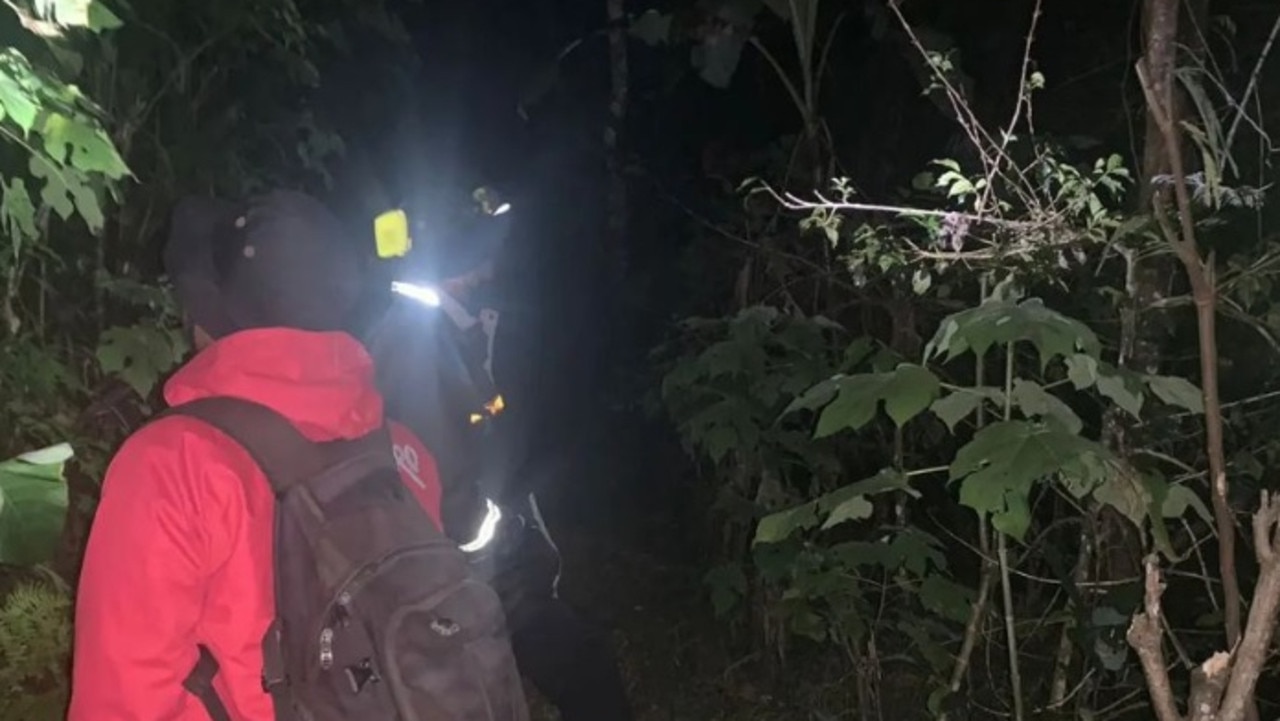
Bali warning as tourist and guide hit trouble
Travel has been disrupted across Japan after one of the country’s strongest typhoons in decades hit on Thursday, leaving at least five people dead and many more injured.
Typhoon Shanshan packed gusts of up to 252 kilometres per hour as it smashed into Japan’s main southern island of Kyushu early Thursday, making it the most powerful storm this year and one of the strongest at landfall since 1960.
Shanshan has since been downgraded to a severe tropical storm but is still causing chaos with heavy rain and wind disrupting trains, expressways and flights throughout the country.
Japan’s largest airlines cancelled hundreds of flights on Friday.
All Nippon Airways (ANA) cancelled 346 domestic flights and Japan Airlines cancelled 287, according to Japanese public broadcaster NHK. ANA has already cancelled another 33 flights scheduled on Saturday.

Compare the Market spokesman Chris Ford advised Aussies in Japan to stay up to date with travel cancellations and follow instructions from local authorities, as well as get in contact with their insurance provider.
“If people have bought travel insurance before travelling to Japan, and they are in a safe place, contacting their travel insurance provider should be the next thing on their list,” Mr Ford told news.com.au.
“Especially if they need further assistance for things such as cancellation of pre-booked activities or securing emergency accommodation or earlier flights out of the country where needed.”

Mr Ford said the typhoon served as a reminder that travel insurance for natural disasters and weather-related emergencies is vital, but warned it may be too late for tourists already in Japan or on their way to take out cover.
“Natural disasters can quickly become a ‘known event’ to insurers. Insurers may not provide cover for events that aren’t considered unforeseen or unexpected,” he said.
“Many travel insurance policies can cover you up to a certain limit during a natural disaster or can provide cover if you purchase it as an extra inclusion.”

The Australian government’s Smartraveller website warns of “significant disruptions to transportation and services, including to travel across Kyushu, Okinawa, Shikoku and Kansai regions”.
It states high winds, heavy rain, landslides and storm surges are expected, urging Aussies to check their plans before they travel.
JapanInside Tours said the Central Japan Railway Company had suspended Tokaido Shinkansen services on both the upper and lower lines between Mishima and Nagoya Stations on Friday.
“Our advice to Aussie travellers who were planning to travel along this line is to stay put, keep up to date with the latest information, and continue to follow the advice of local authorities,” an InsideJapan spokeswoman said, adding that their team was monitoring the situation on the ground and managing any changes to clients’ travel plans.
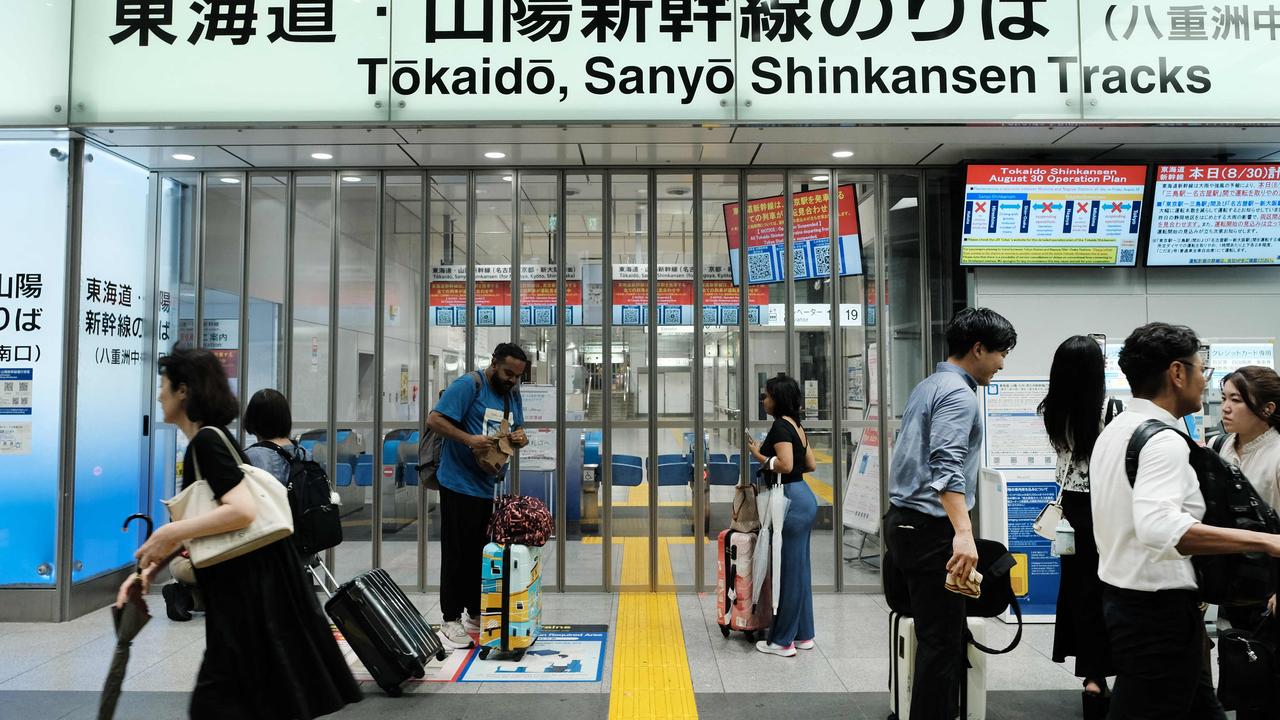
Melbourne-born tour company Intrepid Travel is also monitoring the storm closely as it has 20 trips on the ground this week.
“As extreme weather events become more common due to climate change, they’re challenging the way we travel,” Intrepid Travel Australia and New Zealand managing director Brett Mitchell told news.com.au.
“So far in 2024, 29 Intrepid trips have had to be rerouted or changed due to climate-related disasters, from bushfires in Australia leading to the closure of Grampians National Park, to heavy rainfall causing flooding in Bali.
“While this is a small percentage of our total overall trips (around 0.5 per cent), we expect to see an increase in the Northern Hemisphere over the summer months.”

Japan is growing hugely in popularity among Australian travellers, rivalling other top overseas destinations like Bali, Indonesia.
In the first half of the year more than 460,000 Australians visited Japan, up 68 per cent on the same time last year, according to data from the Japan National Tourism Organization.
Overall there were about 17.8 million foreign visitors to the country between January and June, compared to 10.7 million during the same six months last year – an increase of 66 per cent.
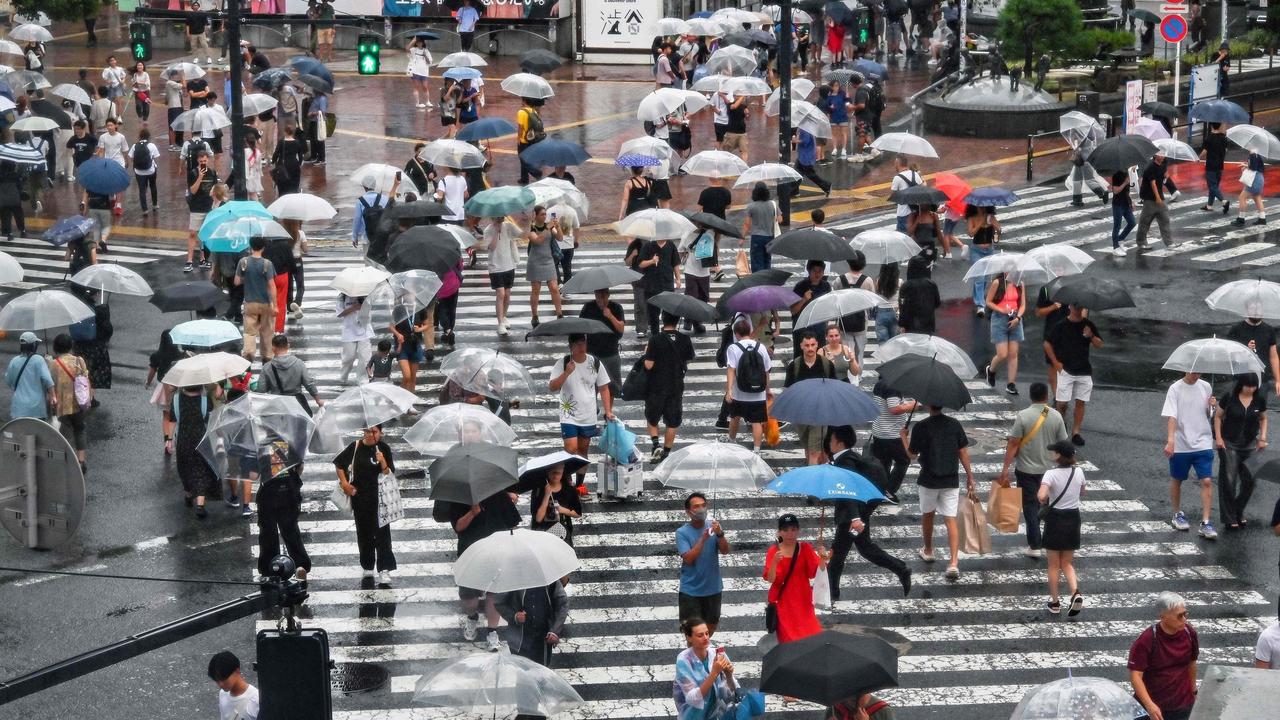
Typhoon Shanshan
Even before Typhoon Shanshanmade landfall on the island of Kyushu, a landslide caused by the heavy rains killed three members of the same family late Tuesday in Aichi prefecture, about 1000 kilometres away.
Two more people were reported to have died including a man last seen on a small boat in Kyushu and another whose two-storey home partially collapsed in Tokushima prefecture on the neighbouring island of Shikoku.
At least 81 others have been injured, including many hurt by broken glass after the typhoon smashed windows and ripped tiles off roofs when it slammed into Kyushu on Thursday with gusts up to 252 km/h.
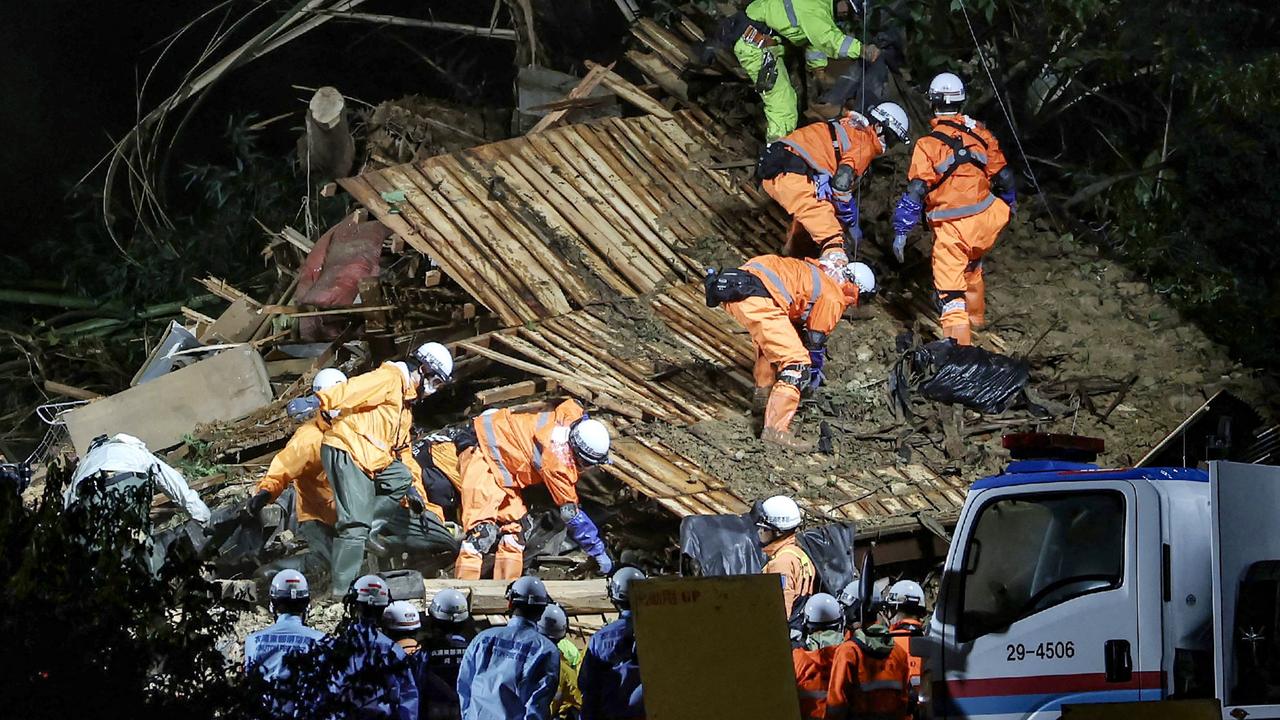
Authorities issued their highest alert in several areas, with more than five million people advised to evacuate, although it was unclear how many did.
As far away as the town of Ninomiya near Tokyo, authorities urged residents to take “immediate measures” to secure safety such as moving to higher floors after a local river flooded.
More Coverage

Some parts of Kyushu saw record rains for August, with the town of Misato recording a staggering 791.5 millimetres in 48 hours, the Japan Meteorological Agency said.
Power cuts hit more than 250,000 Kyushu households but the utility operator said Friday that only 6500 were still without electricity as engineers repaired damaged transmission lines.
– with AFP
Add your comment to this story
To join the conversation, please log in. Don't have an account? Register
Join the conversation, you are commenting as Logout
The Australian government has issued an urgent travel warning over the bird flu as strains circulate across the globe.
A young tourist has a warning for others after her nightmare experience on a boat travelling between popular islands near Bali.
Search and rescue teams were able to locate a missing pair in the dark during a hike on the island’s second highest peak. But they did one thing wrong.
- Reward types, points & expiry
- What card do I use for…
- Current Credit Card Sign Up Bonuses
- Credit Card Lounge Benefits
- Credit Card Airport Limo Benefits
- Credit Card Reviews
- Points Transfer Partners
- Singapore Airlines First & Business Class Seat Guide
- Singapore Airlines Book The Cook Wiki
- Singapore Airlines Wi-Fi guide
- The Milelion’s KrisFlyer Guide
- What is the value of a mile?
- Best Rate Guarantees (BRGs) for beginners
- Singapore Staycation Guide
- Trip Report Index
- Credit Cards
- For Great Justice
- General Travel
- Other Loyalty Programs
- Trip Reports
KKday Kansai sale: 1-for-1 Universal Studios Japan tickets, tours, Michelin meals and more
Your complete guide to KKday's Kansai sale, including all the deals, promo codes, stacking opportunities, and of course, the best cards for miles.
KKday is an online travel platform offering more than 300,000 travel experiences across 92 countries and regions worldwide. You can book attraction tickets, tours, meals, train passes, airport transport, SIM cards, and other travel essentials, all in one place.
If you have a trip to Japan lined up, you’ll definitely want to check out their newly-launched Kansai sale , which includes Kobe, Kyoto, Nara, Osaka.
In this post I’ll cover the highlights of the sale, including special promo codes for extra savings (plus a special code for MileLion readers), stacking opportunities with ShopBack and HeyMax, and of course, the best cards to use for maximum miles with KKday.
Details: KKday Kansai sale
From 27 August to 30 September 2024, KKday is offering deals on the following attractions, activities, meals, travel essentials and more.
Do note that some of these deals may only be available in limited quantities, so if you see something you like, be sure to lock it in- many offer free cancellation within a certain time period (but always check the T&Cs of the individual booking to be sure).
1-for-1 tickets to Universal Studios Japan

If Universal Studios Japan (located in Osaka) is on your itinerary, look out for 1-for-1 tickets for Universal Studios Japan every Tuesday and Thursday in September 2024. Codes will be released at 10 a.m on these days, and are redeemable in-app from 12 p.m onwards.
Michelin meal deals

Kansai has more than its fair share of Michelin-starred restaurants, and at 12 p.m every Friday in September 2024, you can grab a S$5 meal deal at 1-Michelin Star Ajikitcho Bunbu-An (U.P: S$89), or a S$30 for 2 pax at 1-Michelin Star Kitamura (U.P S$257).
Other (non-Michelin) meal deals include a S$5 pufferfish meal at Guenpin Fugu (U.P S$58), a S$5 BBQ meal at Yakiniku Daibokujo (U.P S$58), and S$30 for 2 pax at all-you-can-eat beef at NikoNikoNabe (U.P S$126).
90% off Japan spend

On 11 September 2024, a special promo code will be released on the KKday app at 12 p.m, and the first user to redeem it will get 90% off his/her Japan bookings, capped at S$180.
This code will only be valid for new-to-app customers (defined as those who have not made a purchase via the app before), and a minimum spend of S$200 is required.
50% off travel essentials

KKday is offering up to 50% off eSIMs, SIMs and Wi-Fi eggs, allowing you to stay connected on the road. Data plans start from as little as S$0.78 for a 1-day 500MB plan.
These deals are available throughout the sale period, so buy them whenever you wish!
1-for-1 KKday Signature Tours
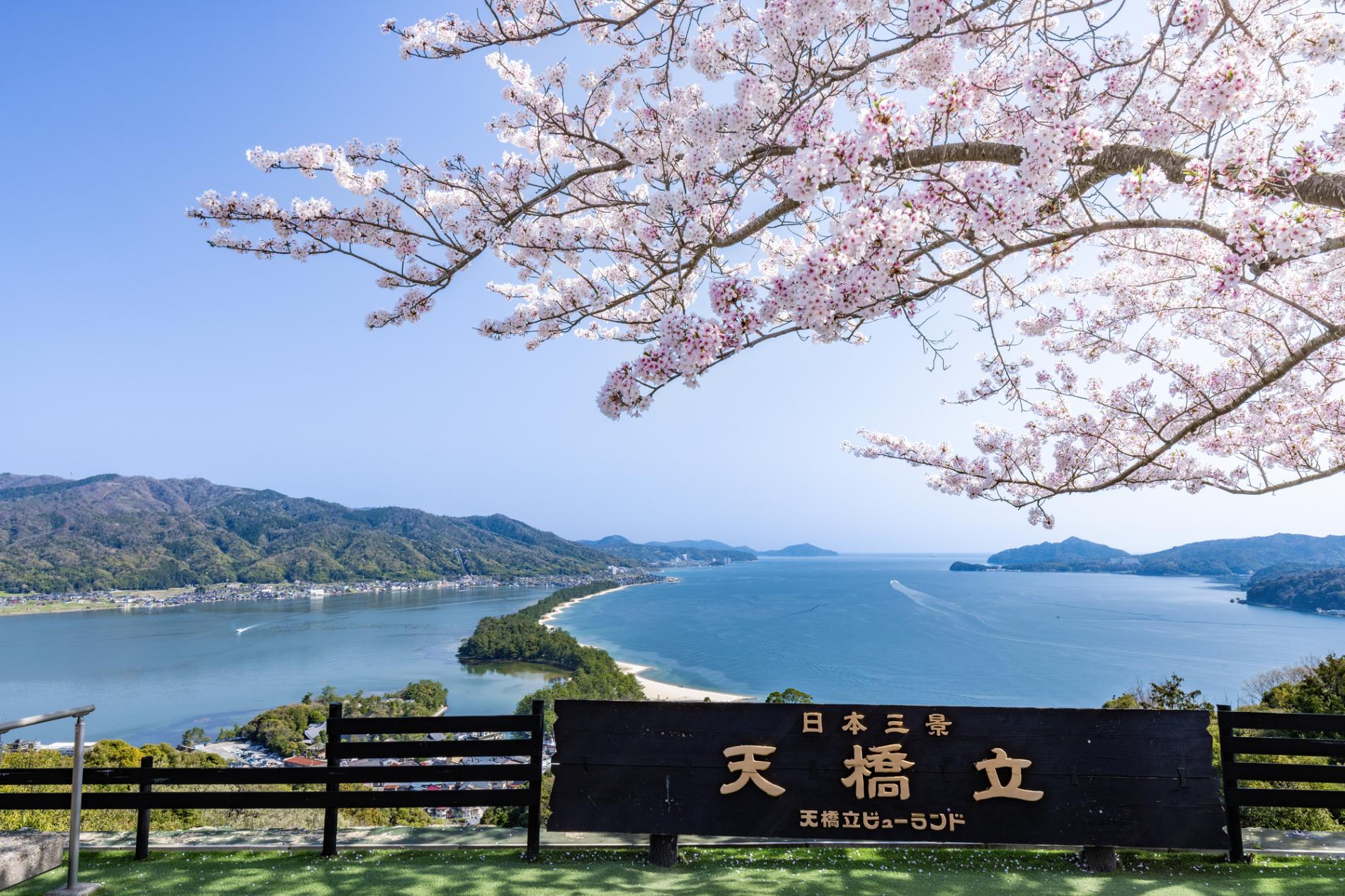
One unique feature of KKday are its Signature Tours, which are organised and hosted by KKday itself (as opposed to being outsourced to a third party).
The routes for these tours are curated based on insights from KKday’s own data as to the places that people want to visit, and departures are always guaranteed- even for one person . Solo travellers will know the frustration of signing up for a tour and having it cancelled on you last minute when the minimum group size is not met, so that’s one less thing to worry about here.
For the month of September 2024, KKday will be offering 1-for-1 deals on selected tours, including:
Other regular tours on sale at 20-30% off include:
- Kyoto & Nara Day Tour: Kiyomizudera Temple, Fushimi Inari Taisha Shrine & Nara Park
- Kyoto Nara Day Tour from Osaka: Nara Park, Kasuga Taisha, Kiyomizu-dera & Fushimi Inari Taisha
Be sure to check the operating language of the tours, as some are run in Chinese and Japanese only.
Discount codes & bank promos
In this section I’ve compiled the various KKday promo codes for extra savings. Limited redemptions apply, so be sure to grab them while they last.
In addition to the codes above, MileLion readers can use the code MLSGKK to save 20% off a minimum spend of S$80, capped at S$20. This code is limited to one redemption per account.
This is valid for bookings made till 30 September 2024, for activities completed by 31 December 2024.
Stacking opportunities with ShopBack and HeyMax
Both the KKday website and app are available through ShopBack and HeyMax , which presents some further stacking opportunities.
At the time of writing, you can earn up to 20% cashback (ShopBack) or 3 Max Miles per S$1 (HeyMax), though it’s worth remembering that the exact rebate depends on what product you’re buying. For example, KKday Signature Tours enjoy 20% cashback, while attraction tickets earn a lower 3.5% cashback rate (heads up: will be upsized to 8.5% from 29-30 September 2024).
Do note that promo codes cannot be stacked with ShopBack. However, there are still options available:
- If the product offers a direct discount, e.g. 1-for-1 tours, % off Osaka attractions or eSIMs, you can still stack ShopBack cashback (since there’s no promo code involved)
- You can use Atome’s vouchers with ShopBack since the voucher is hosted on the Atome side and will not interfere with tracking
HeyMax currently has no restrictions on promo code use, and stay tuned, because the rate will soon be upsized significantly:
- 28 August to 1 September 2024: 8 Max Miles per S$1
- 8-10 September 2024: 8 Max miles per S$1
- 23-29 September 2024: 8 Max Miles per S$1
Do note that SEA Aquarium passes and F1 Singapore tickets are excluded from this offer.
What’s the best card to use for KKday?
KKday transactions code as MCC 4722: Travel Agencies and Tour Operators, which means you can pay with the following cards to earn an additional 4 mpd.
Avoid using the Citi Rewards Card , as MCC 4722 is classified as a travel transaction and explicitly excluded from earning the bonus 4 mpd rate for online transactions. Also, the HSBC Revolution Card is no longer an option, following the January 2024 removal of MCC 4722 from its bonus whitelist.
KKday’s Kansai sale is now live, with plenty of opportunities to save big on attraction tickets, tours, F&B and travel essentials. Be sure to stack promo codes for extra savings, and pay with the right credit card to rack up an extra 4 mpd!
Also be on the lookout for upsized ShopBack or HeyMax offers throughout the month of September, for extra cashback or miles.
Similar Articles
Milelion weekly deal summary [24-30 aug 24], milelion weekly deal summary [17-23 aug 24].
downloaded the app and cant find any mention of the 1 for 1 USJ deal. what code?? Confusing promo…
not that confusing, if you bothered to read.
If Universal Studios Japan (located in Osaka) is on your itinerary, look out for 1-for-1 tickets for Universal Studios Japan every Tuesday and Thursday in September 2024. Codes will be released at 10 a.m on these days, and are redeemable in-app from 12 p.m onwards.
of course i read it. it’s not clear when you are in the app – where is the landing page? has it been fully redeemed? where to click to even stand a chance of getting the code?
I stand by my comment, it was a badly designed promo.
CREDIT CARD SIGN UP BONUSES
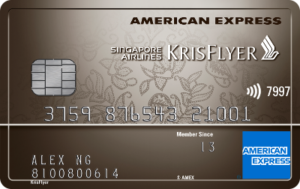
Featured Deals

© Copyright 2024 The Milelion All Rights Reserved | Web Design by Enchant.sg

IMAGES
VIDEO
COMMENTS
10. Activated Charcoal. Japan's food scene is incredible, but it's also full of a lot of uncooked fish. Add that to the stress of travel, and stomach upset is a common problem. Activated charcoal is a very effective and natural way to shorten the duration of food poisoning or traveler's diarrhea.
Travel essentials for Japan; What NOT to pack for Japan; Packing tips for Japan; Free Japan Packing Checklist. Be sure to grab your (totally free!) copy of our exact Japan packing list. Simply enter your email and you'll get it sent to your inbox right away. Plus, we'll send you our top Japan tips so you can plan the perfect trip!
This guide to what to pack for Japan will cover…. What to pack for Japan: Travel essentials. Japan Rail Pass. Suica Card. Visa & Visit Japan Web Service. Passport Wallet. Printouts of pre-booked activities. Wifi device or SIM card. Packing cubes.
Anna spent nearly two weeks traveling throughout Japan in May 2023 and she chatted with Kenny Onishi, the general manager of Japan for Intrepid Travel DMC, to get tips and tricks for packing for ...
1. Japan Is a Cash-Based Society, So Bring Some Cash! Barring convenience stores and large commercial facilities, stores and restaurants in Japan typically do not accept any other form of payment except for cash, so it is essential that you carry some when travelling in the country. It might seem risky in your home country to carry lots of cash ...
After all, packing can be one of the most enjoyable — or dreaded! — aspects of preparing for a big trip. Here is your 8-step Japan travel checklist: Bring shoes that are easy to slip on and off. Pack as lightly as possible. Use takuhaibin, Japan's luggage-forwarding service. Bring formal and casual clothes.
But the packing list for travelers visiting Japan is unique. At most basic level, two (2) things will dictate what you will pack for your trip: 1) Where in Japan you are traveling and 2) The weather you'd expect during your stay. Once this is determined, it will make packing lighter and much more manageable.
In this post you can find detailed information about the Japan travel essentials to bring with you, based on our own experiences traveling around this beautiful country. Versatility is key when it comes to packing for Japan! It's not uncommon for temperatures to be 20°C or more apart between the different prefectures in Japan.
Comfortable walking shoes. 1 pair of heels or ankle boots for going out. Jeans (dark navy or black is recommended) 3 Mid-weight pants. 3 dressy outfit combinations. Undergarments (one per day is ideal) Socks (choose socks in good quality as you will be required to take your shoes off in many establishments) Sleepwear.
Choosing a Bag for Japan. This is easy, take the smallest suitcase you can get away with. You're going to be walking up more steps than you think, hotel rooms are smaller than you think - and, if you travel on the Shinkansen you'll either need to book luggage space (see more on this in our longer post on the rules for taking luggage on bullet trains), put your bag in front of your knees ...
On top of the essential items listed above, here is an additional suggested checklist of what to pack for a trip to Japan: Photo: @audyscala. A few pairs of comfortable pants/jeans. 1-2 pairs of shorts (summer/late spring) A few pairs of socks. (Sexy) underwear x 2/3.
Travel Essentials For Japan. Planning a trip to Japan can seem overwhelming. However, if you break it down into 10 steps, you'll find that it's pretty easy. See our step-by-step Japan Trip Planning Guide for essential tips. Passport: Make sure it has at least six months validity and one empty page.
Travel adapter: Japan uses Type A & B power outlets (similar to those in the United States and Canada). Make sure you don't need an AC adapter. If you travel a lot you will be good of with a World Adapter. Power Bank: A Power Bank can avoid disappointment when your phone dies while you're on the road. Photo camera .
These compression packing cubes come in handy when packing bulky items. Universal Power Adapter: A reliable power adapter is an essential travel companion for your trip to Japan. Make sure to pack one that is compatible with Japanese electrical outlets, which typically feature two flat pins. Look for adapters that also accommodate polarized ...
The Ultimate Japan Packing List and Travel Checklist. Keeping the above considerations in mind, here's a detailed Japan packing list: Japan Travel Essentials. Remember all your basic everyday items, such as your travel documents, ID, wallet, and money. Passport (be sure it has 6 months or more left before it expires)
The accessories you will take in your bag for Japan will depend on your travel style: TSA lock ( my favorite) Headlamp ( my favorite) Sleeping bag ( my favorite) Sheets ( my favorite) Swiss Army knife (not in the hand luggage!) ( my favorite) Travel clothesline ( my favorite) Powdered or liquid detergent. Clothes pegs.
Our Japan travel essentials 1. Comfortable shoes that are easy to remove. To see Japan you're going to walk a lot. So unless you're spending most of your day on a bus on an organised tour it can't be avoided. The primary mode of transport for locals and visitors alike is a combination of the super-efficient public transport system and ...
Learn the essential and practical tips for traveling in Japan, from visa, currency, climate, to health and safety. Plan your trip with japan-guide.com.
7. Suitcase space. 8. Comfortable walking shoes. 1. Cash and credit card. While it may seem mundane, having both a credit or debit card and cash is essential for travelers in Japan. While the country is advanced in many ways, it still has a cash culture, and cards may not be accepted everywhere. It is recommended to have at least 20,000 yen in ...
22 Travel Essentials for Japan, your ultimate guide for packing essentials for Japan. Whether you're chasing cherry blossoms in spring, slurping ramen in Autumn, or simply chasing your wanderlust dreams, I hope this guide has armed you with all the essentials for an epic Japanese adventure. Pop Over Here For More Travel Videos!
Power Converter or Adapter (JIS C 8303 / NEMA 1-15) The voltage in Japan is 100 volts. So, if you're coming from North America, you may be able to use your appliances, albeit at a lower voltage. If you're coming from Western/Central Europe or other regions of the world where the voltage is 230 volts, you're most likely going to need a ...
Himekat. •. I've been to Japan many, many times, and here are some of my common ones: A "flight bag" for my 13 hour flight. This is a little bag with earplugs, Dramamine, toothbrush, lip balm, melatonin, a pen, eye mask, ibuprofen, face wipes/hand wipes, and a spare hair elastic.
One former travel editor and shopping writer shares her must-have travel essentials that keep her comfortable on long-haul, international flights. From self-heating eye masks and face mists to portable batteries and noise-canceling headphones, these 15 items available at Amazon are always in her personal item and carry-on luggage. Shop these deals starting at $10.
If you're a frequent flyer, make sure you have these essentials packed. ... Italia 日本 (Japan) 한국 (Korea) Follow Us. ... 10/10 would recommend! I travel frequently, and I always overpack; this helped cut down space and stress immensely!" — Taylor. $22.99 at Amazon. 21.
With a hiking trip to Norway on the horizon, one travel writer shares the 12 pieces of outdoor gear she's adding to her packing list for the outing. From trusted brands like Teva, Patagonia, and ...
Amazon has thousands of deals on travel essentials during its Labor Day sale. Here, save up to 91 percent on the best travel shoes, luggage, travel accessories, headphones, and more right now.
InsideJapan Tours has launched "Must-See Japan," a 11-day, fast-paced itinerary focused on visiting Japan's key highlights. Fully guided by an insider, one of InsideJapan Tours' full-time ...
Shanshan has brought record rainfall. Some parts of Kyushu recorded 2.6 feet of rain in 48 hours, forecasters said. The storm, inching north at less than 4 m.p.h. early on Friday, lashed some ...
Wild weather is significantly disrupting travel across Japan after one of the country's strongest typhoons in decades made landfall. Chantelle Francis. 3 min read. August 30, 2024 - 2:08PM.
KKday is an online travel platform offering more than 300,000 travel experiences across 92 countries and regions worldwide. You can book attraction tickets, tours, meals, train passes, airport transport, SIM cards, and other travel essentials, all in one place.